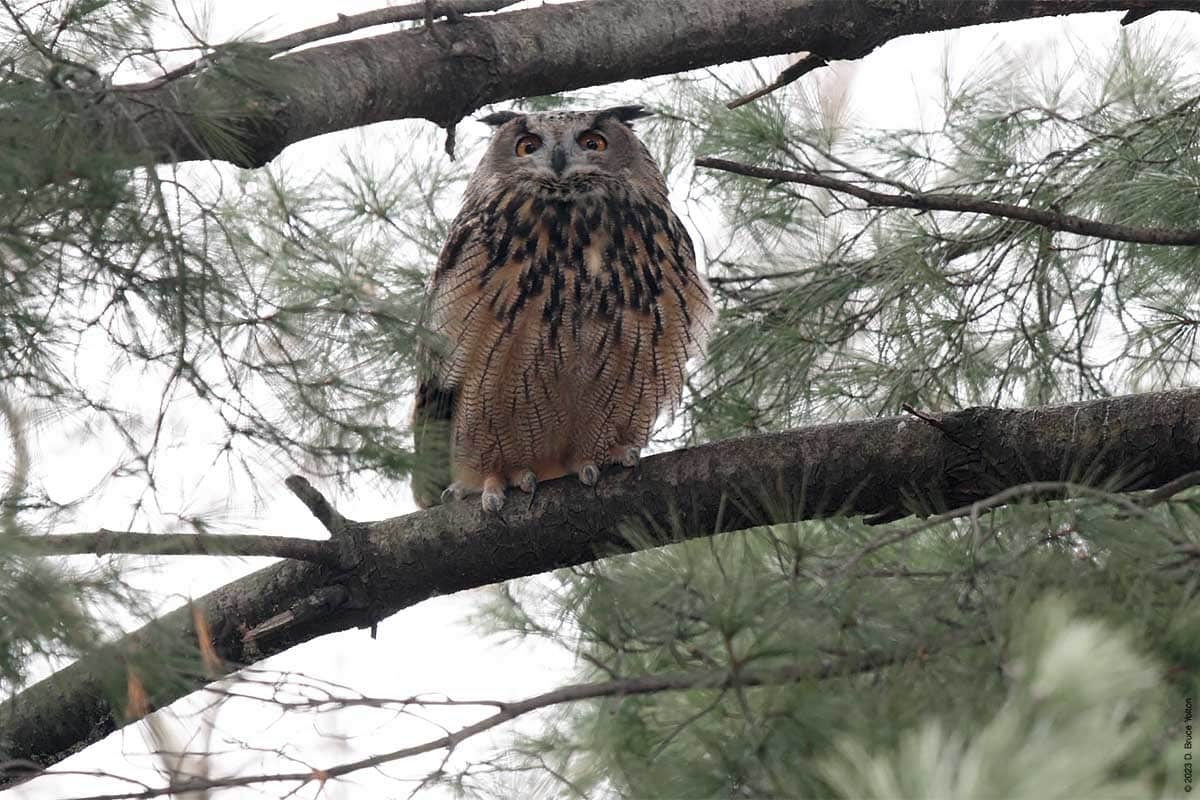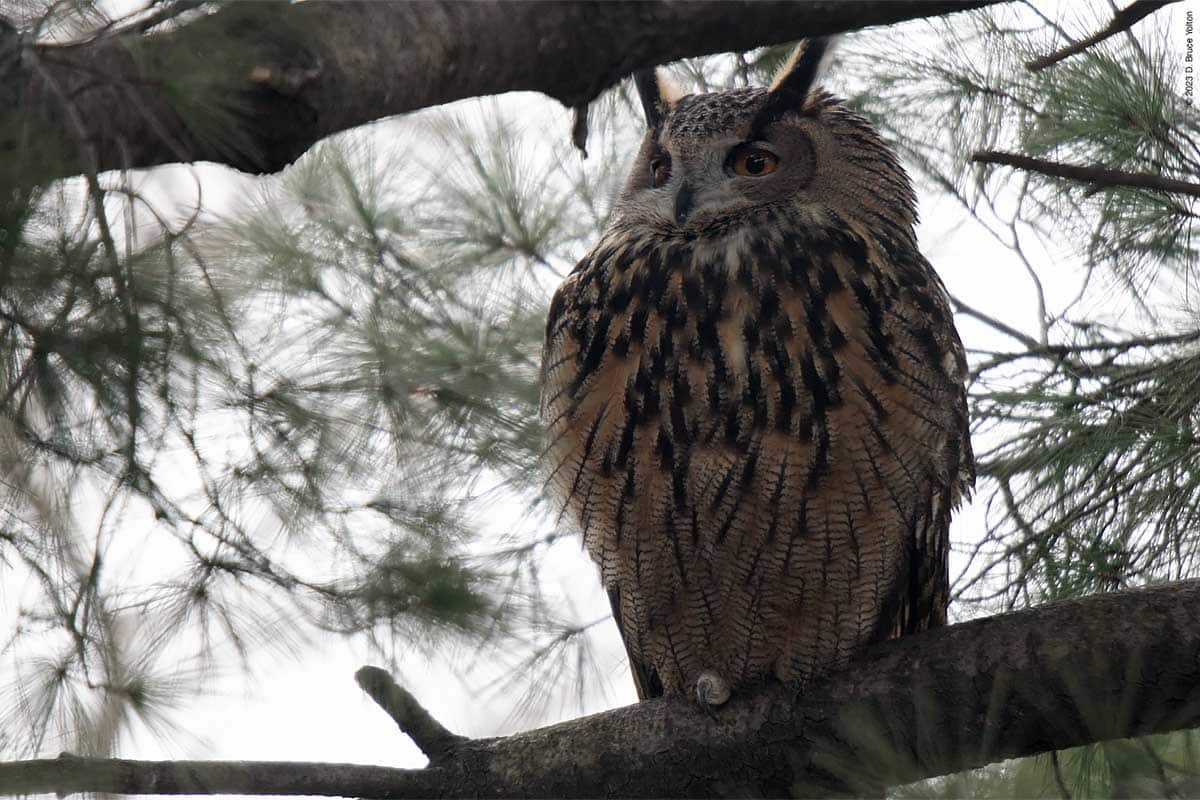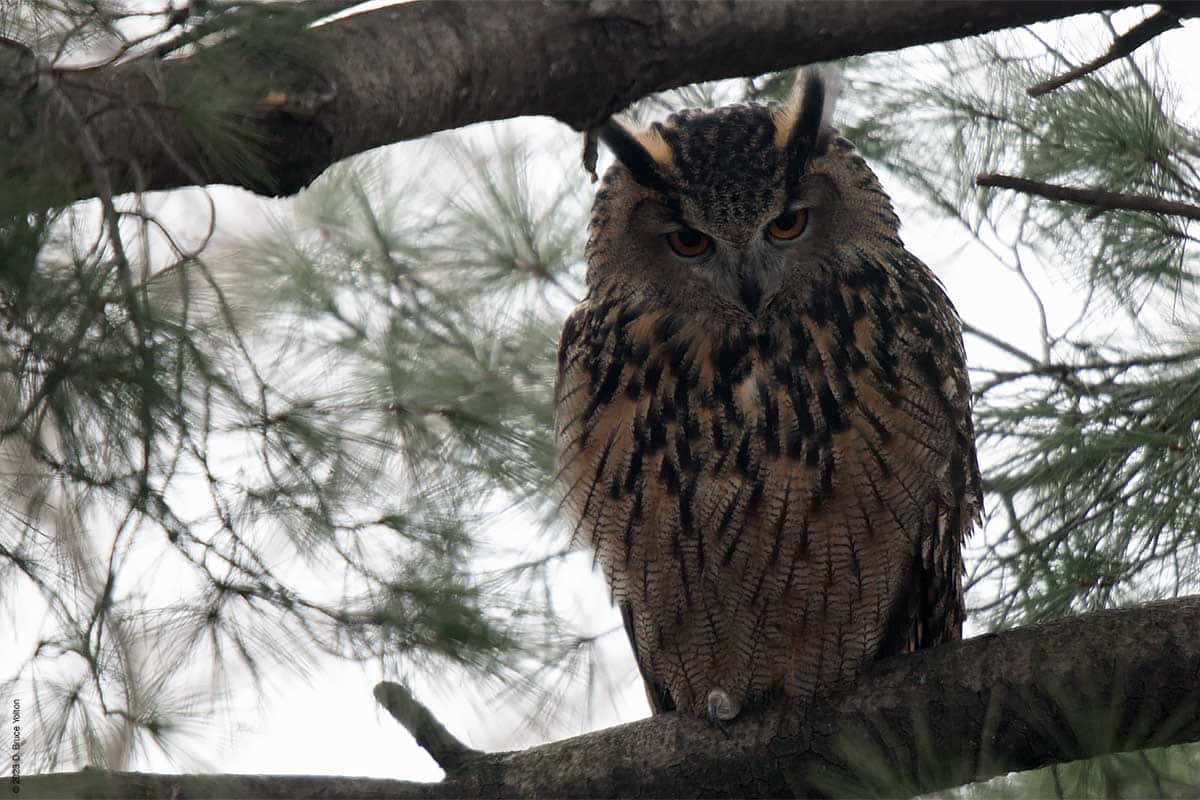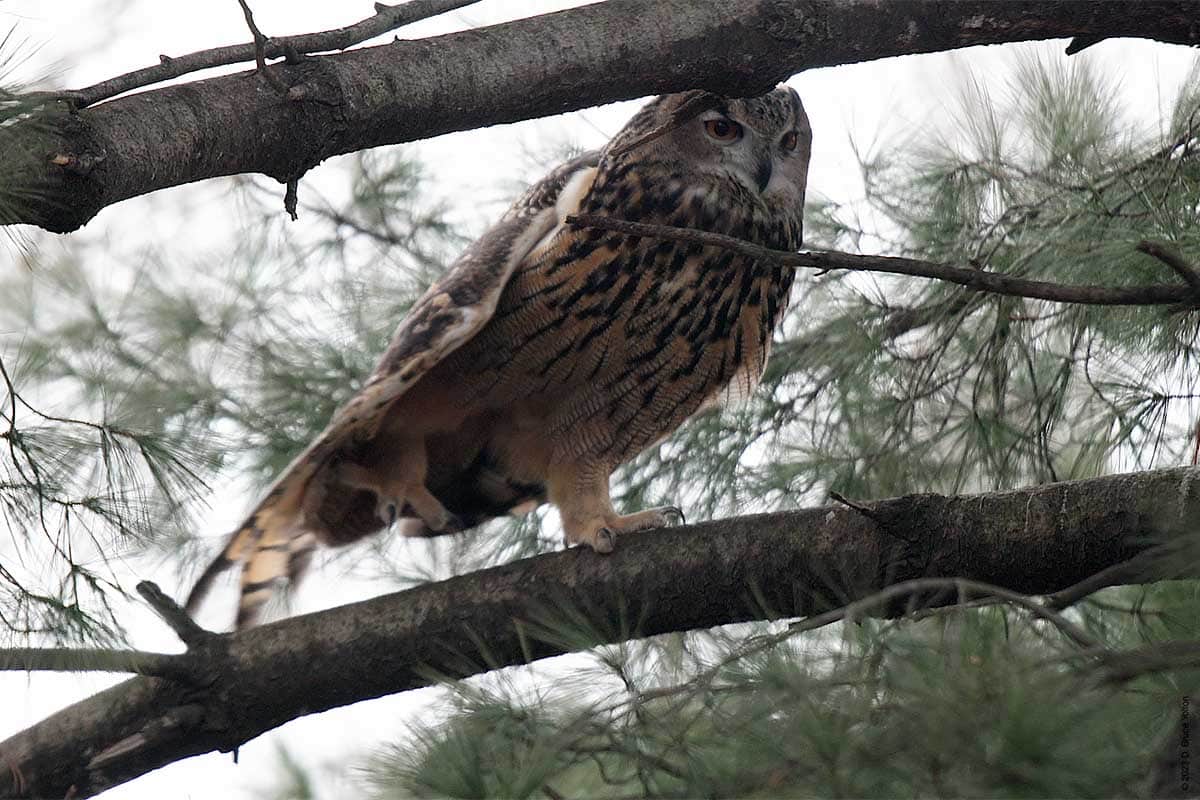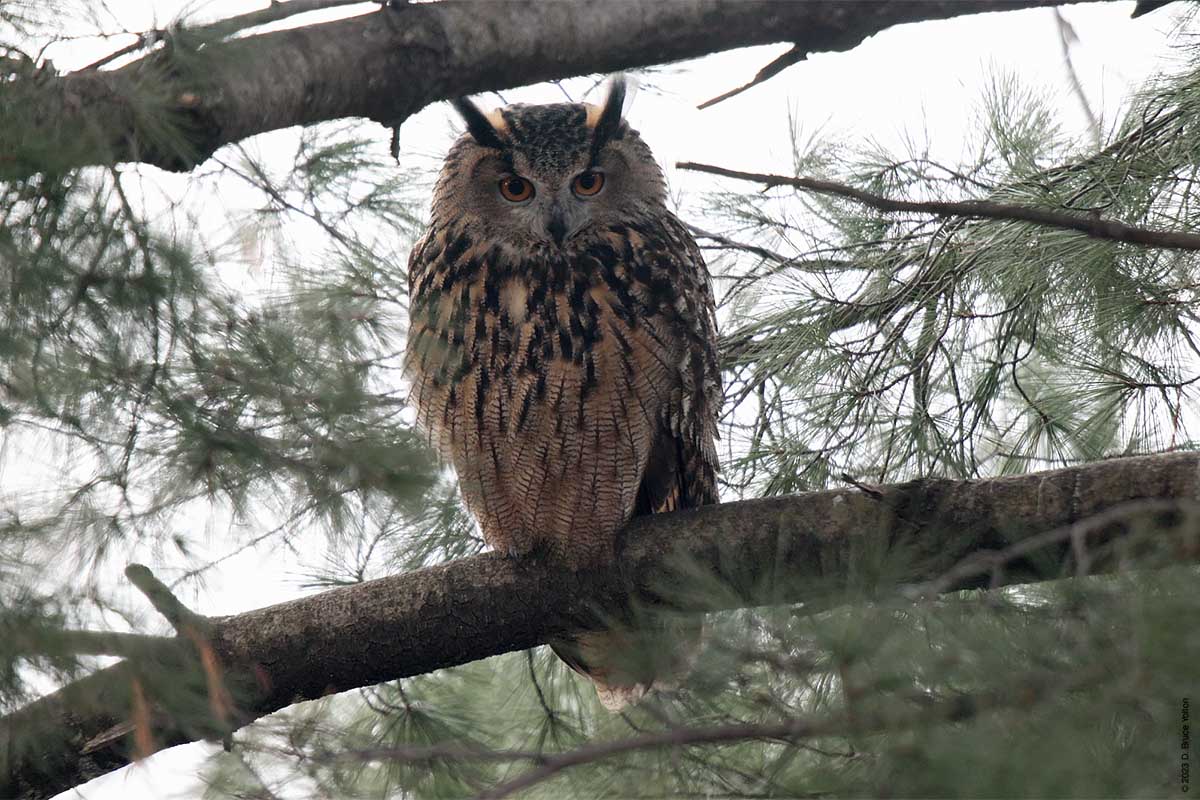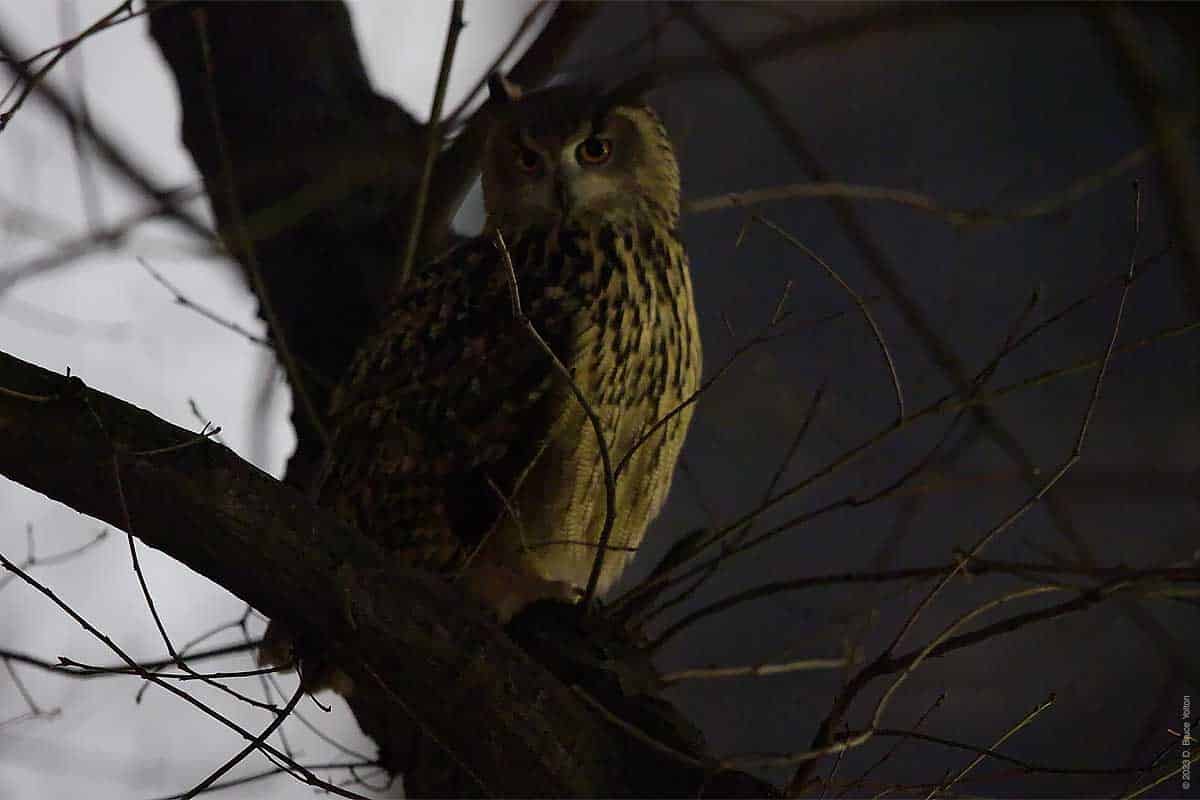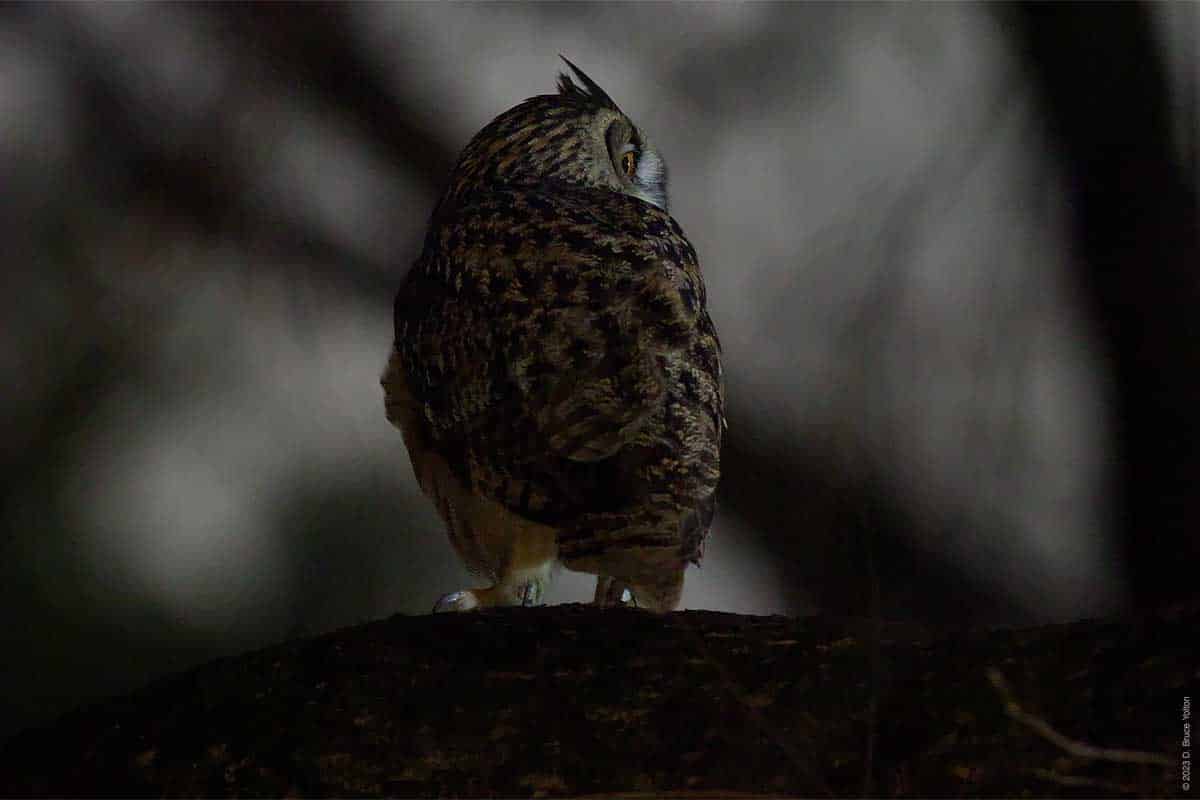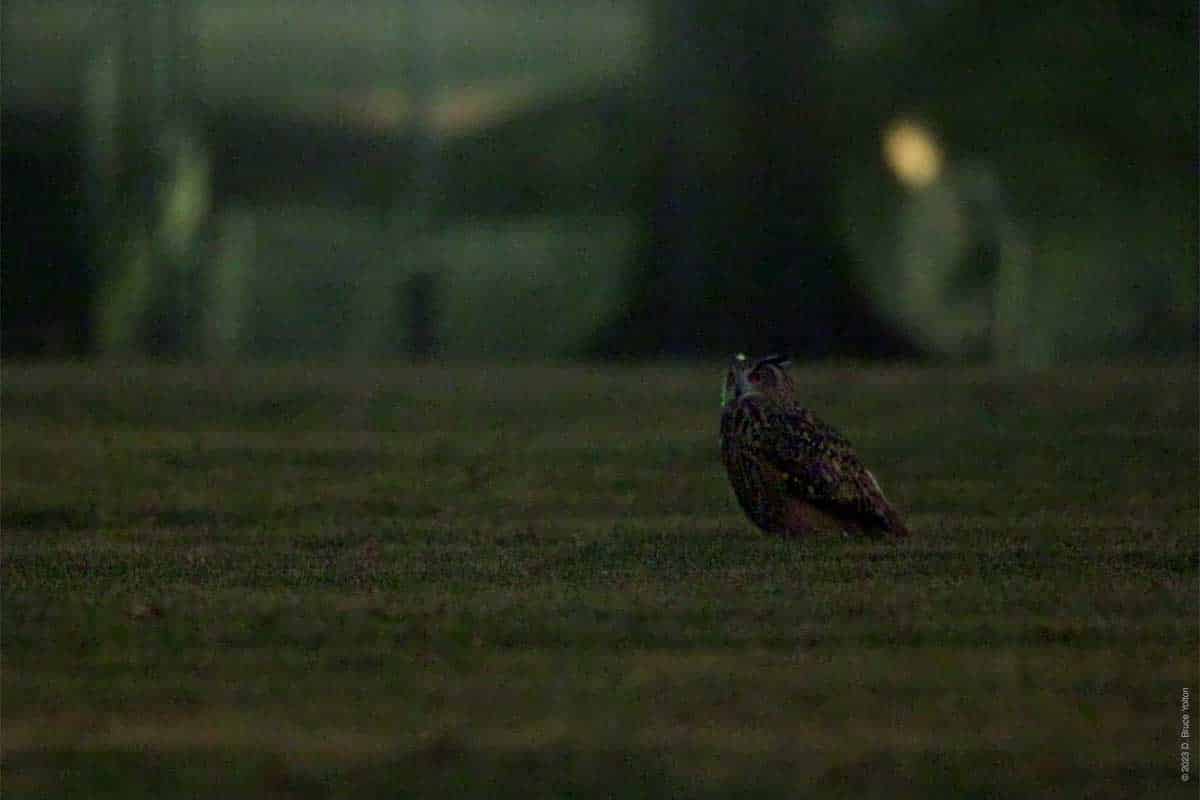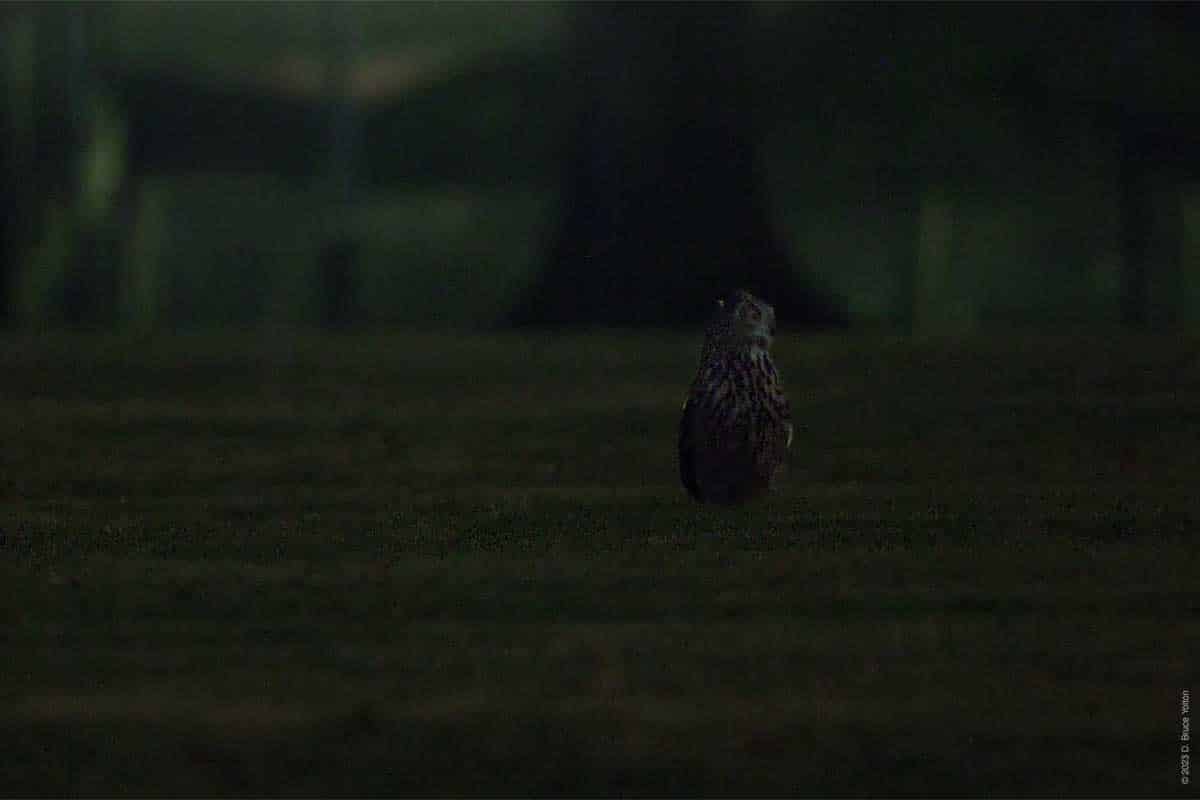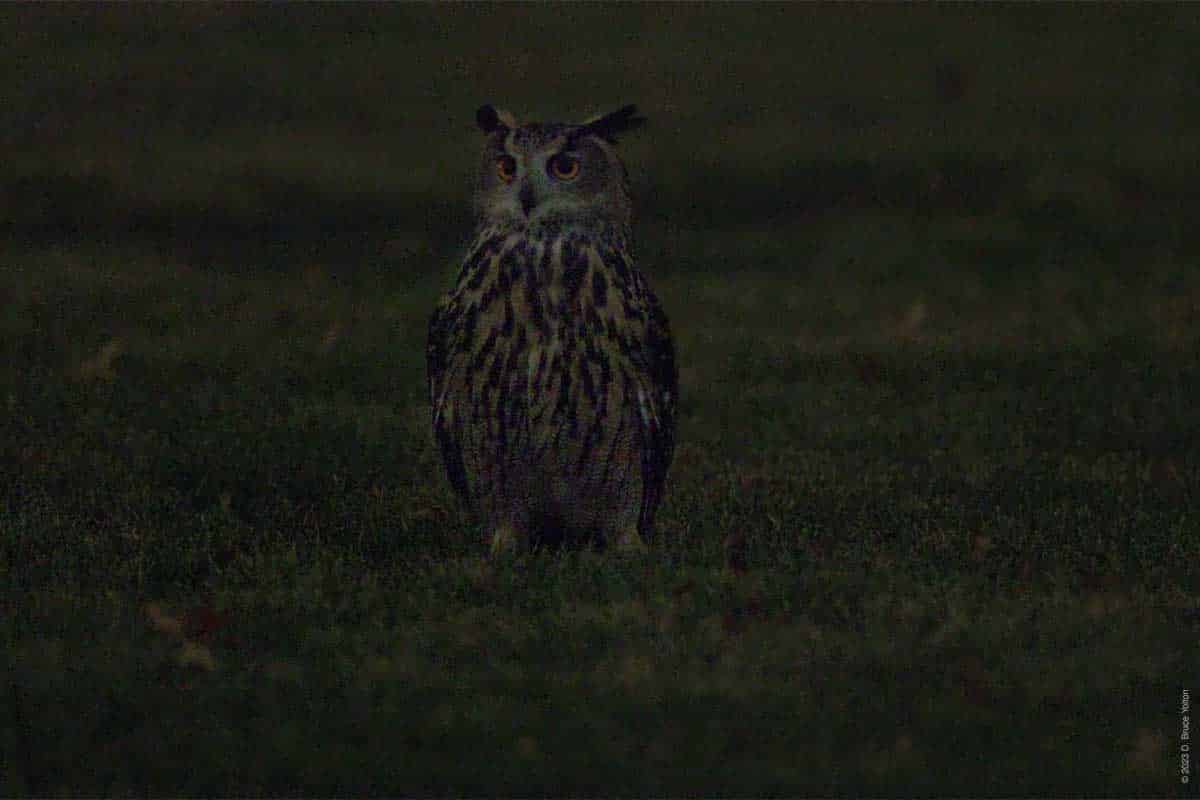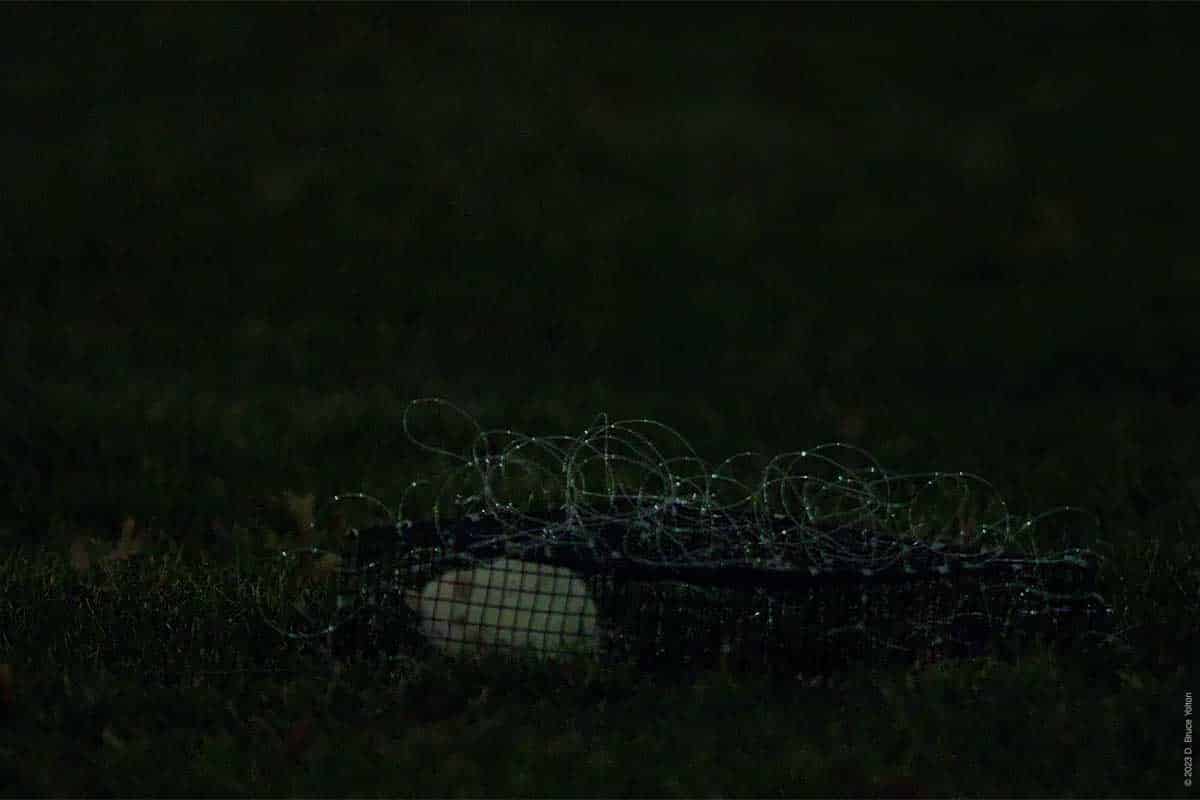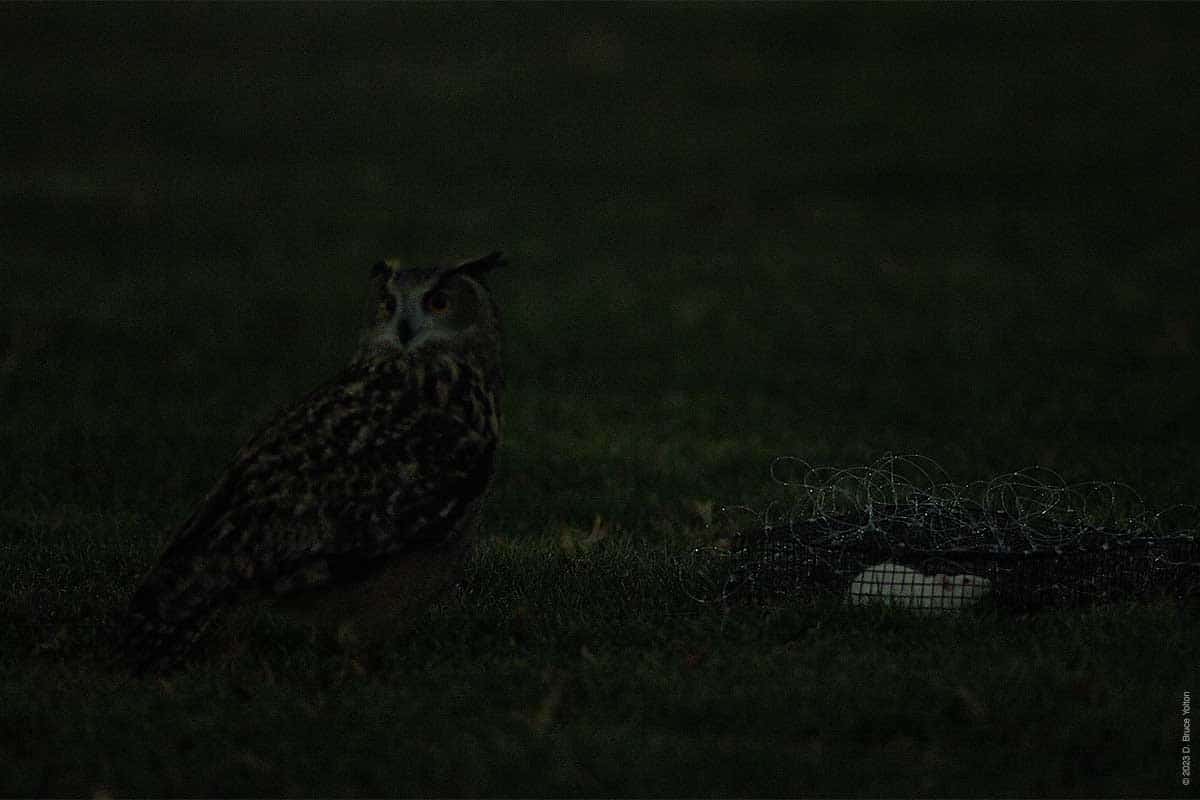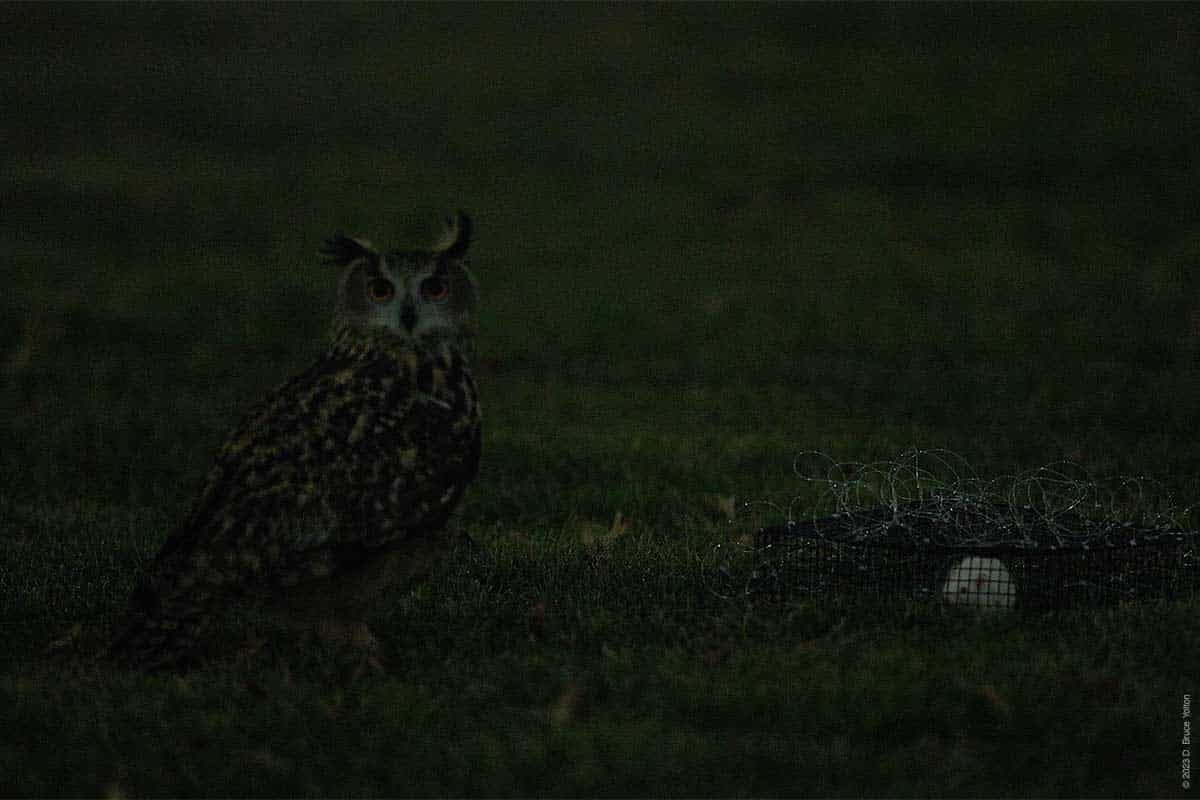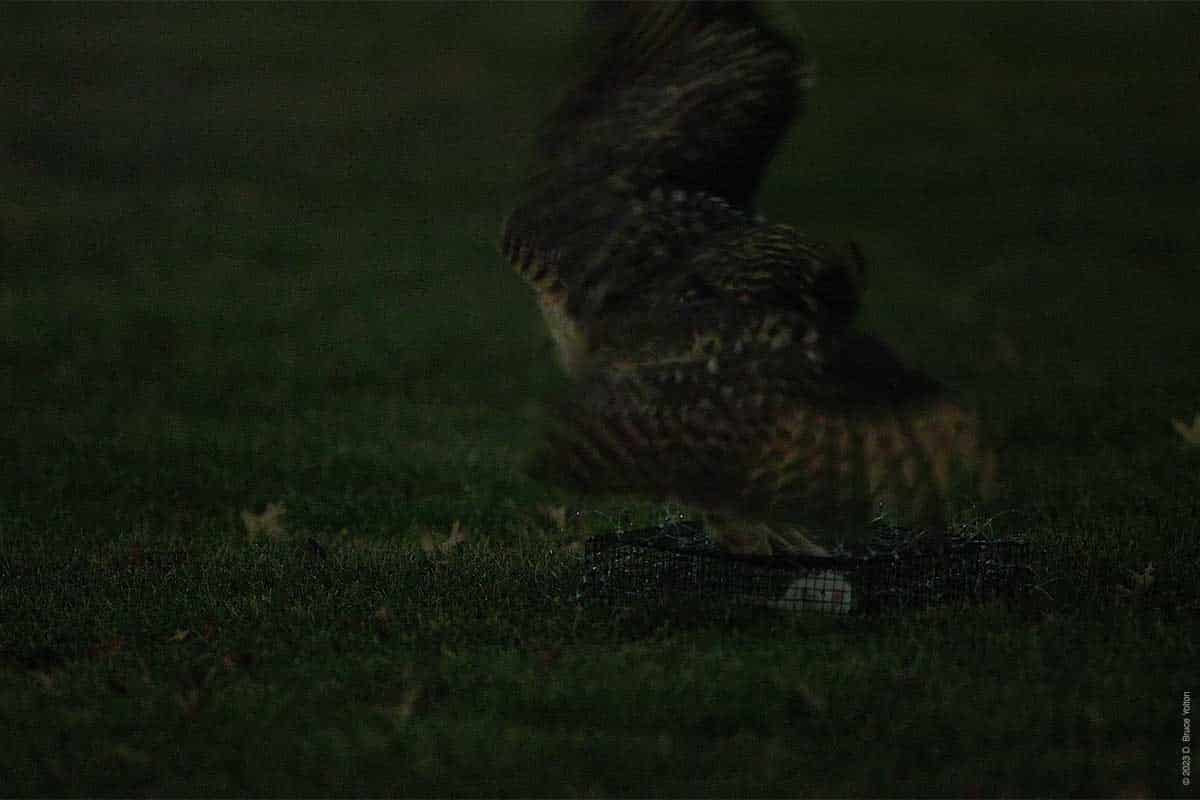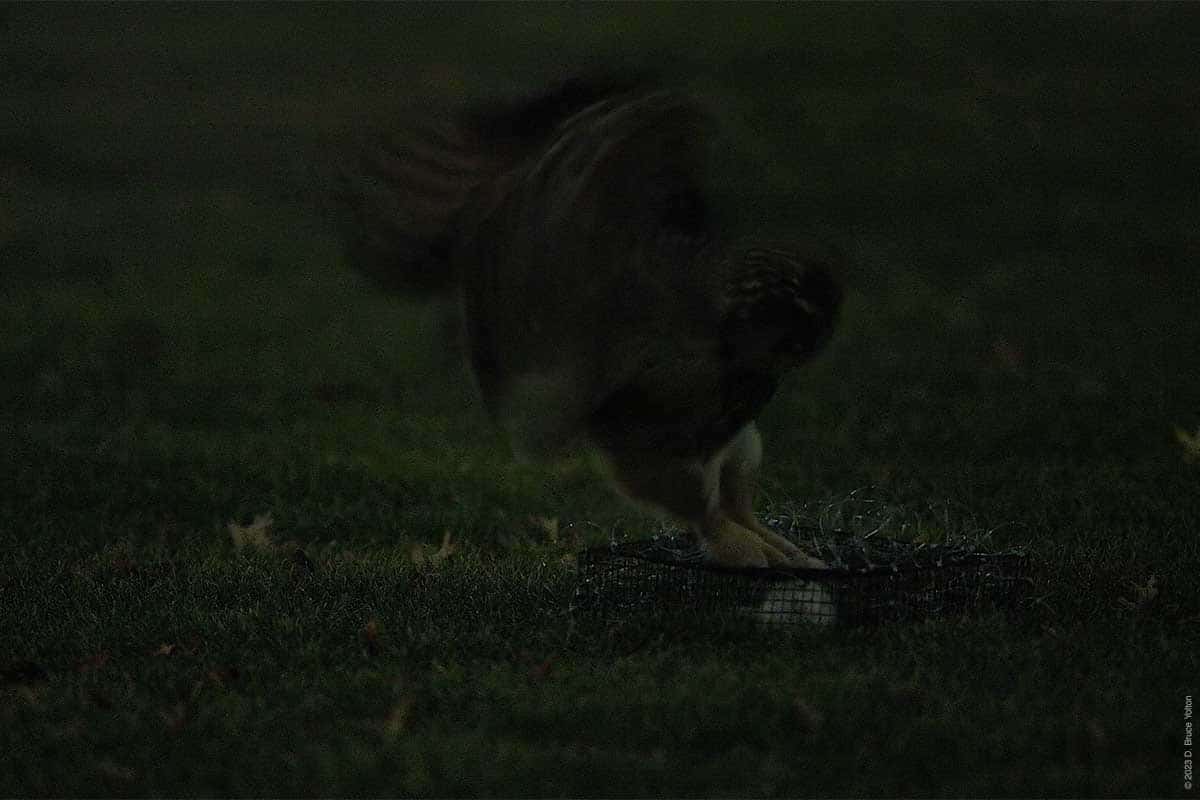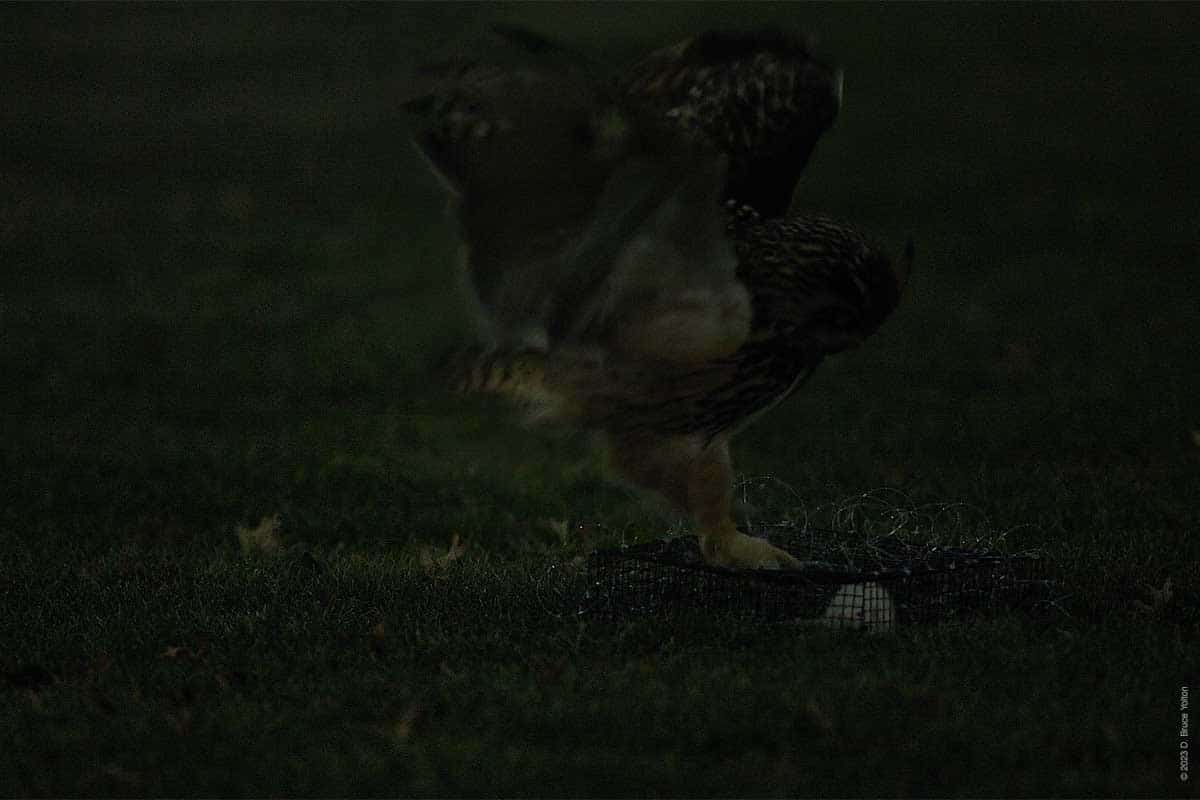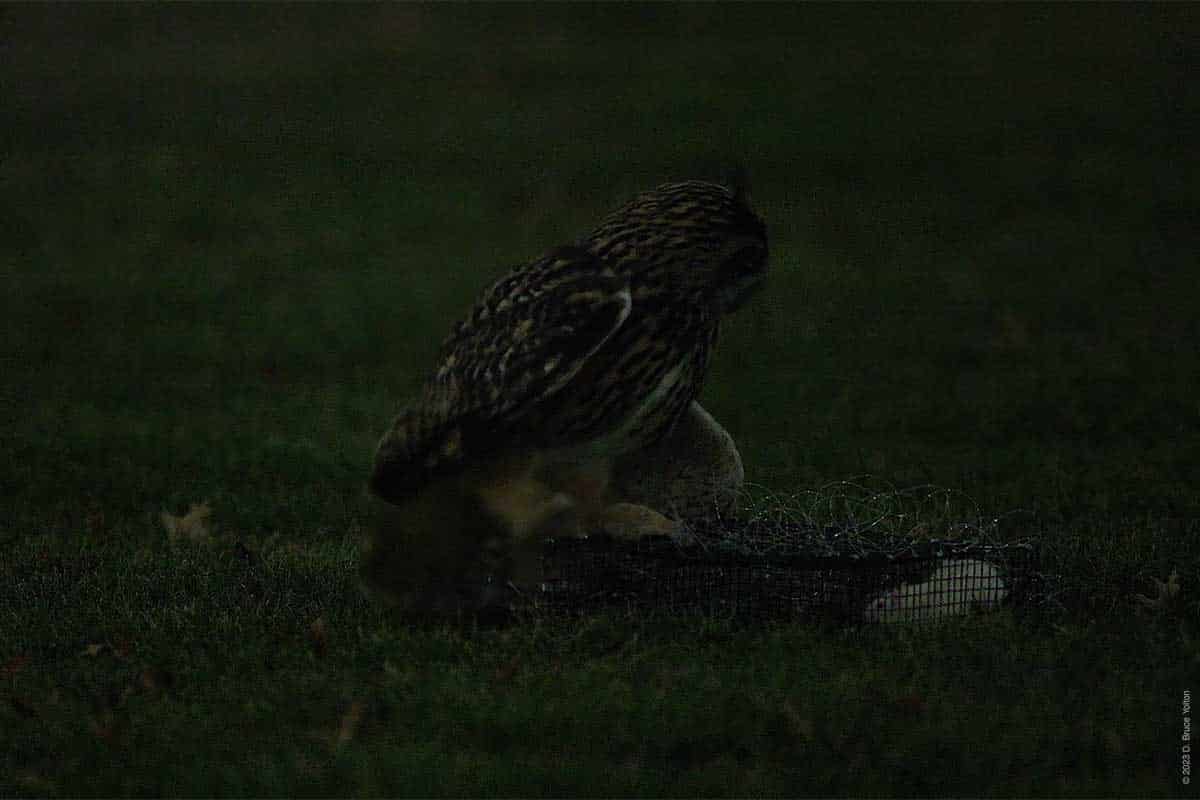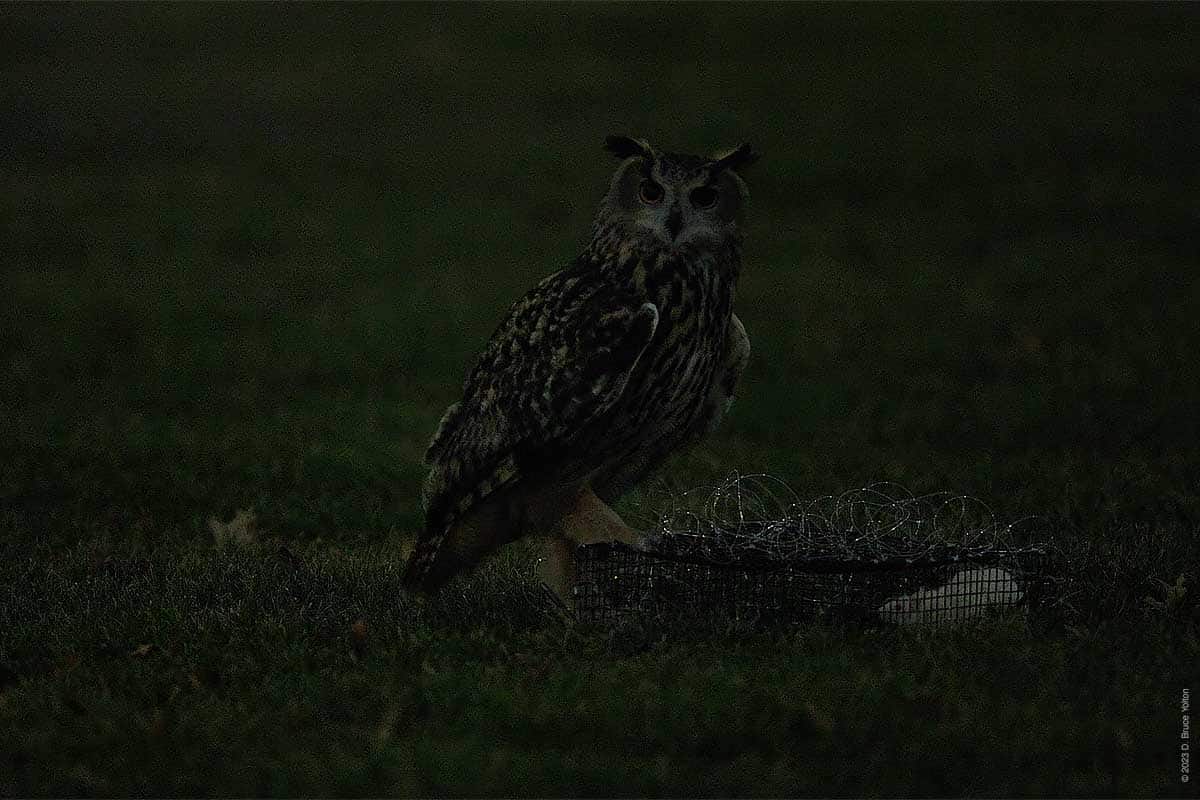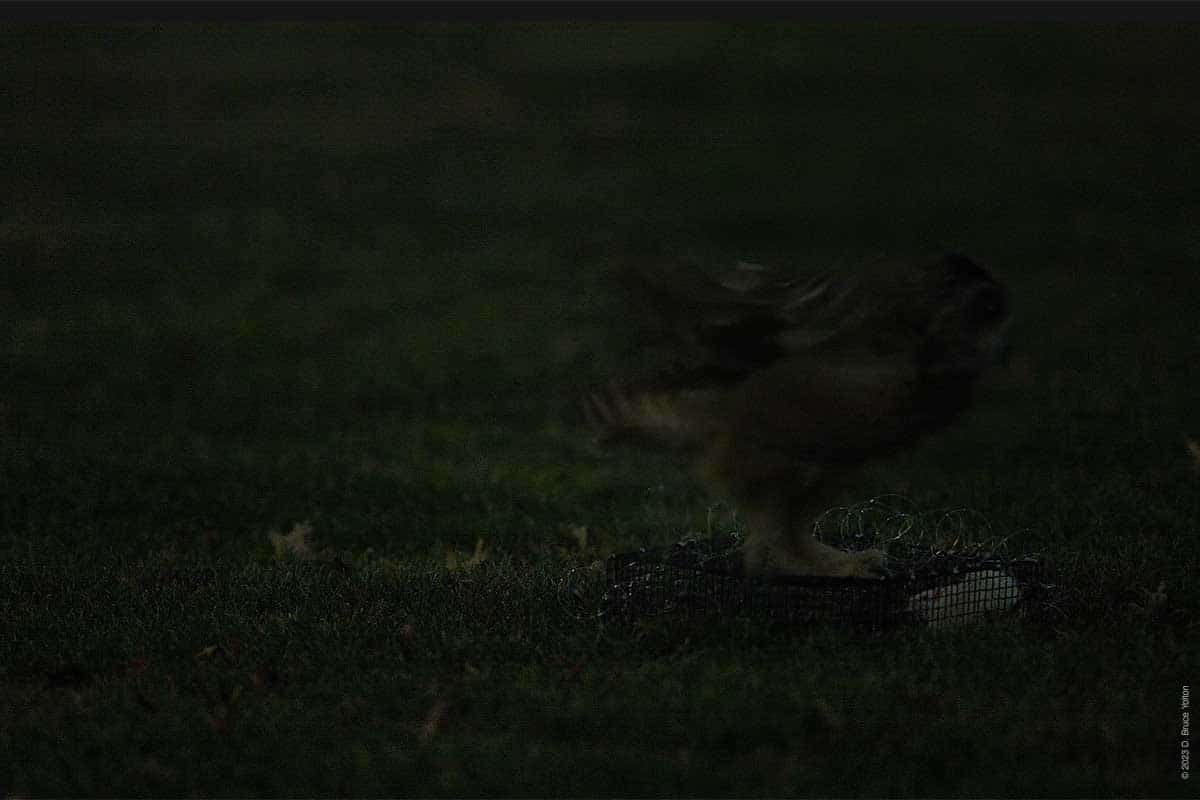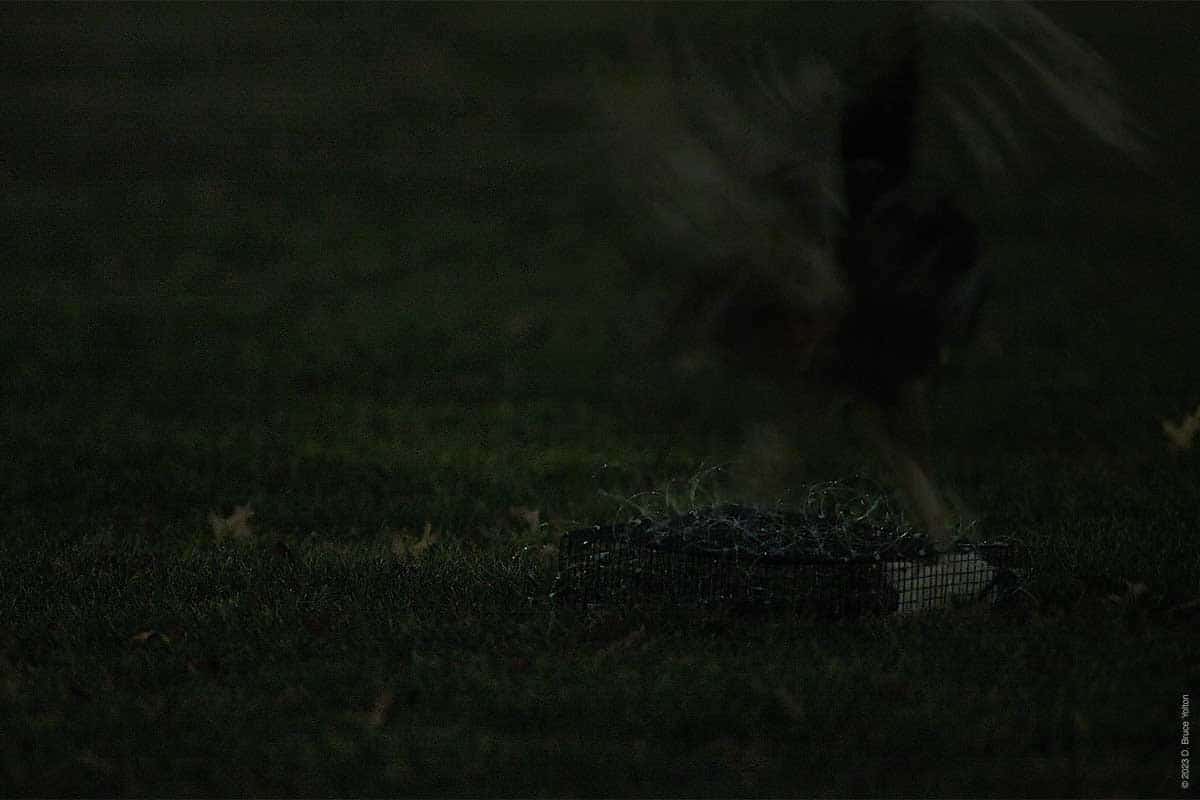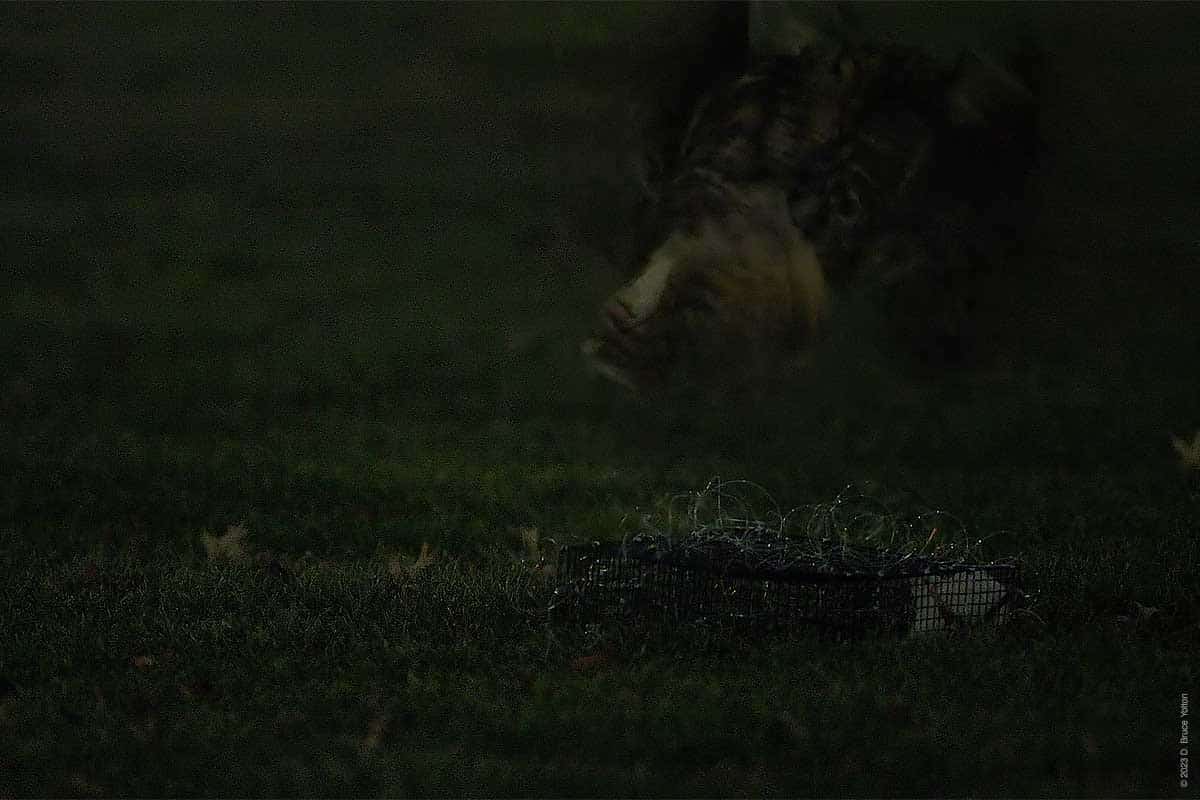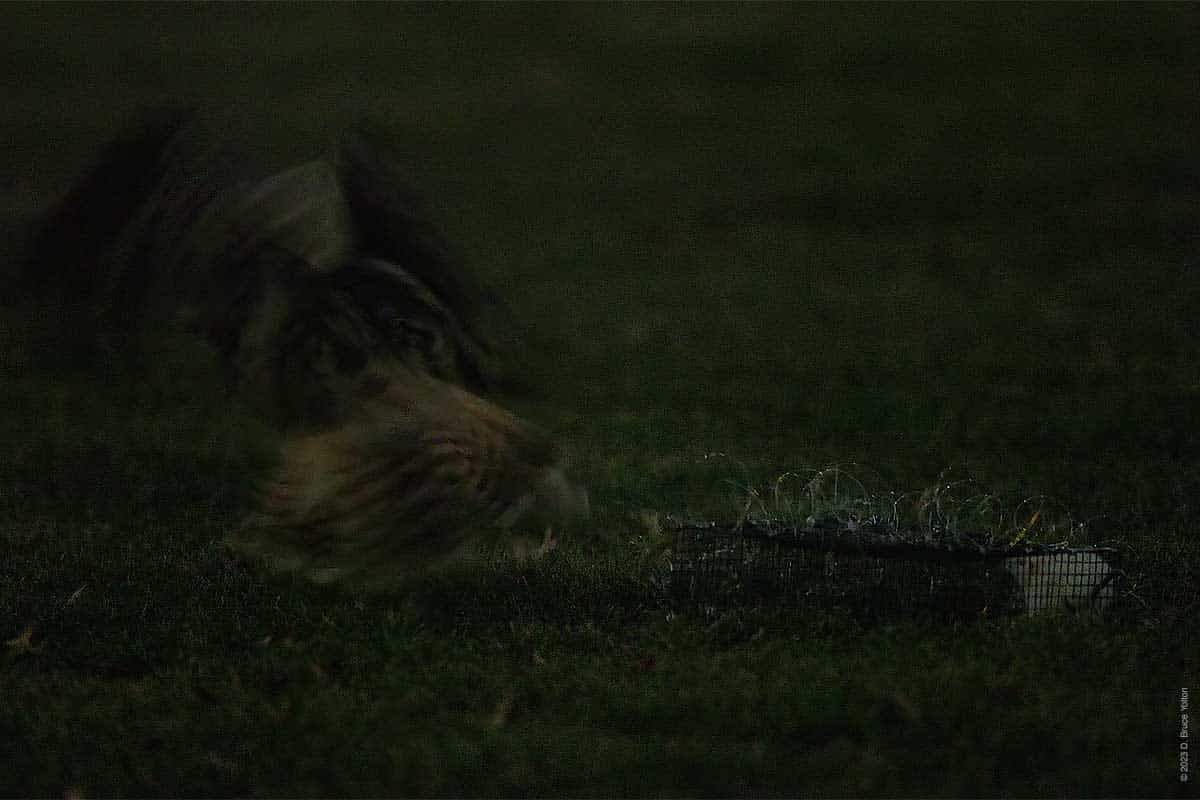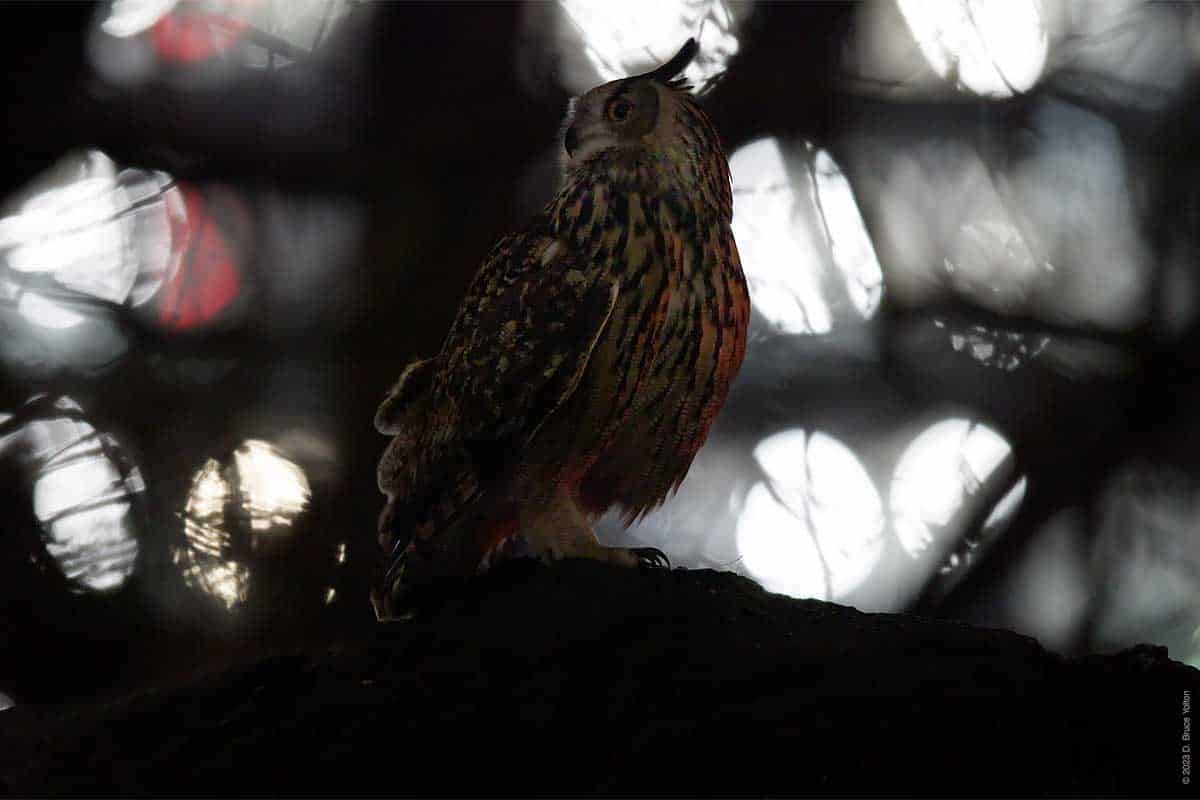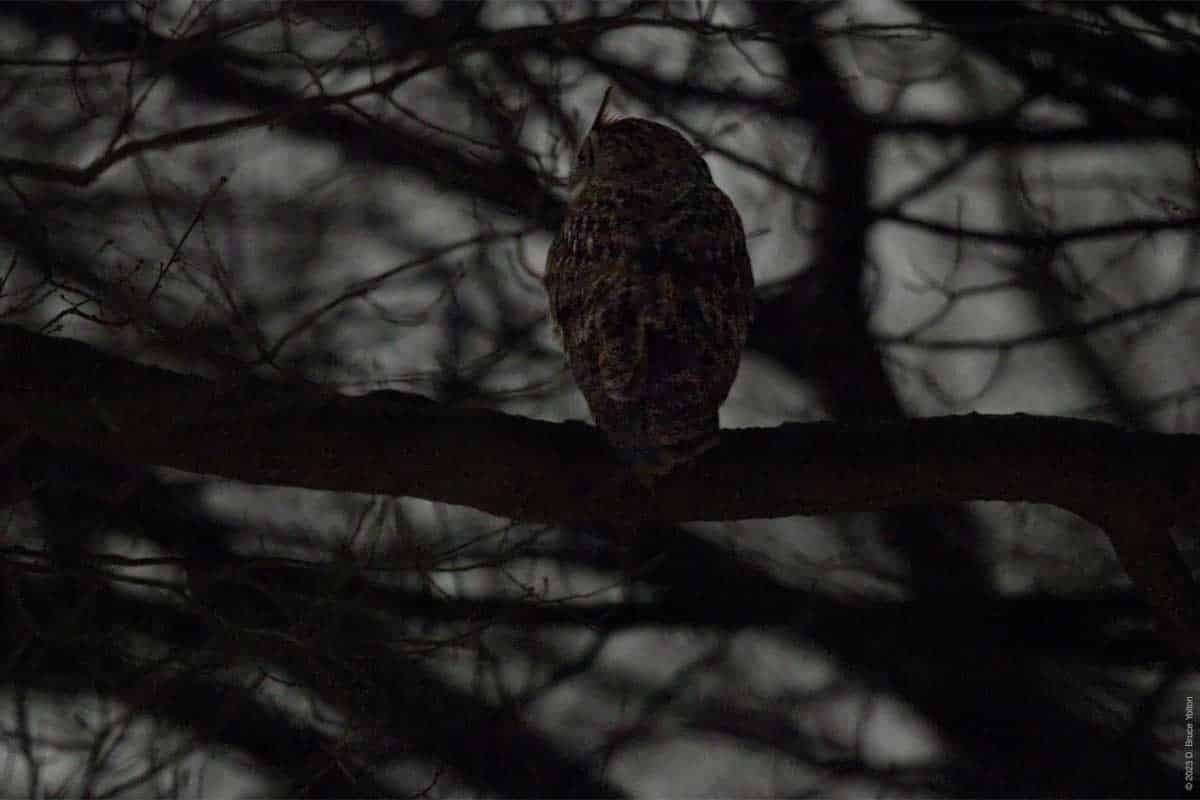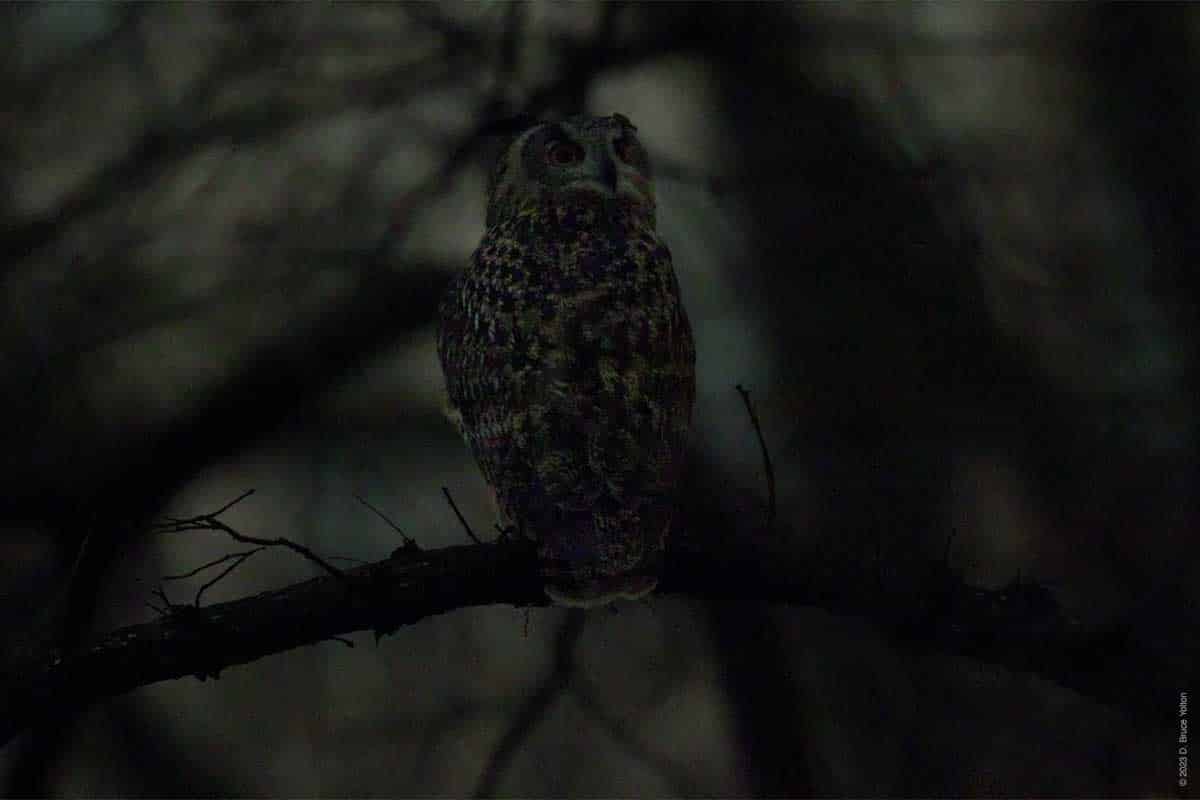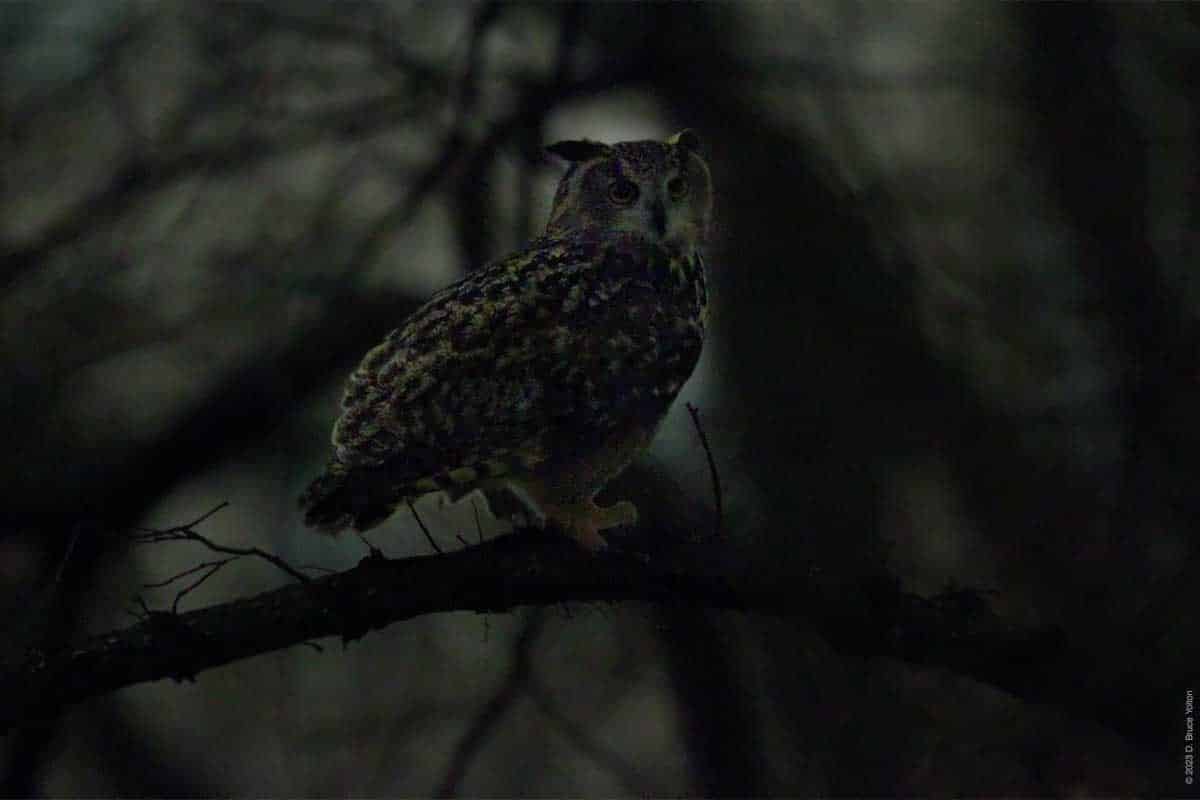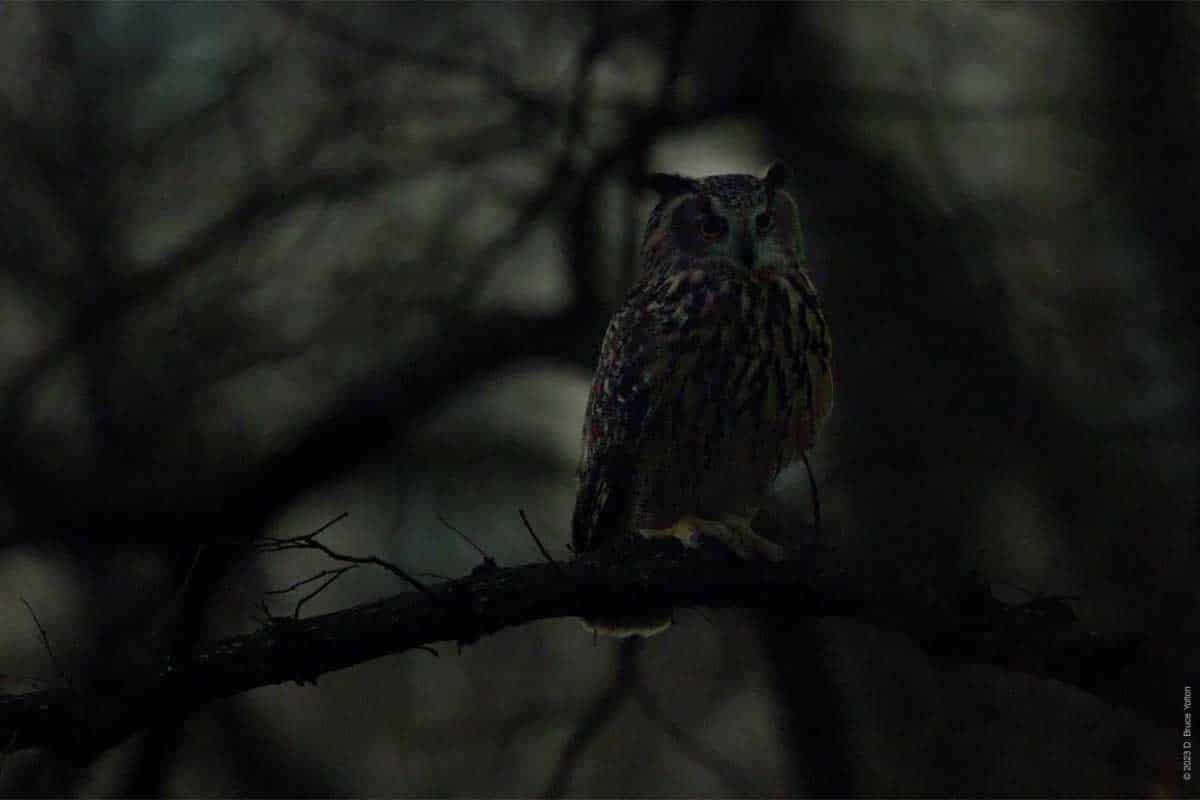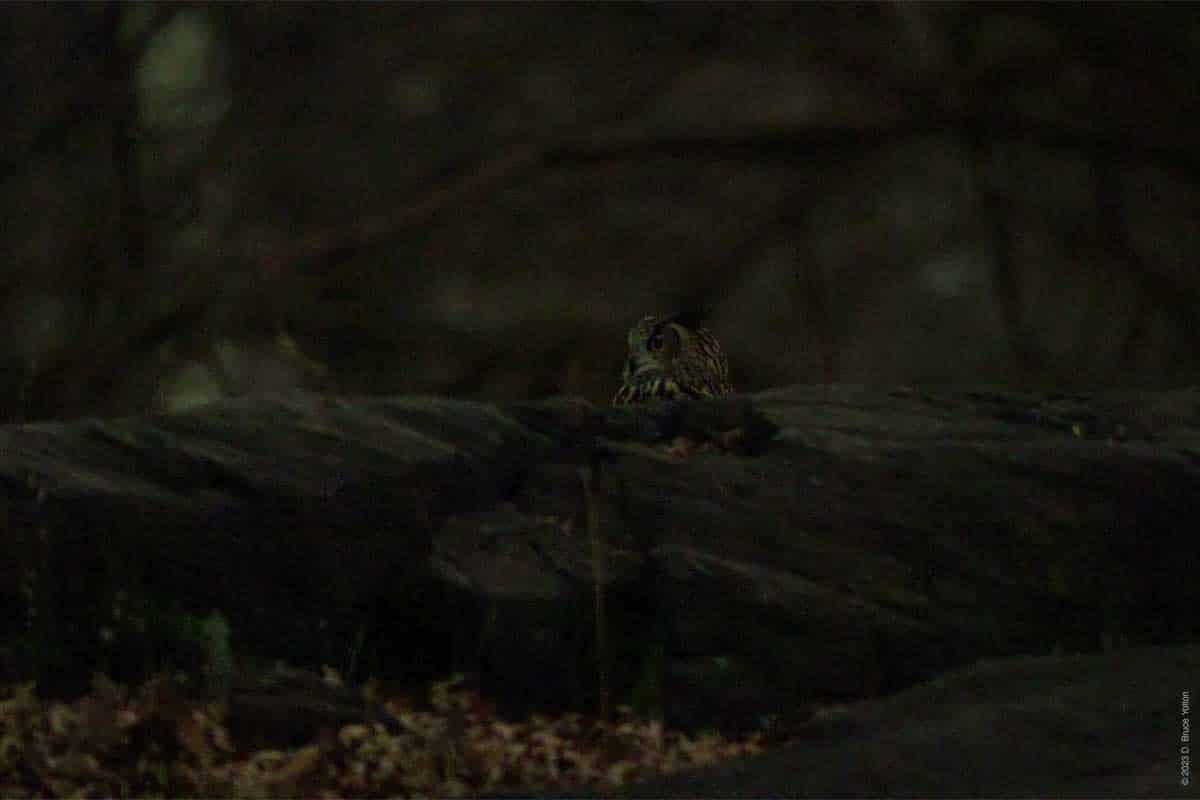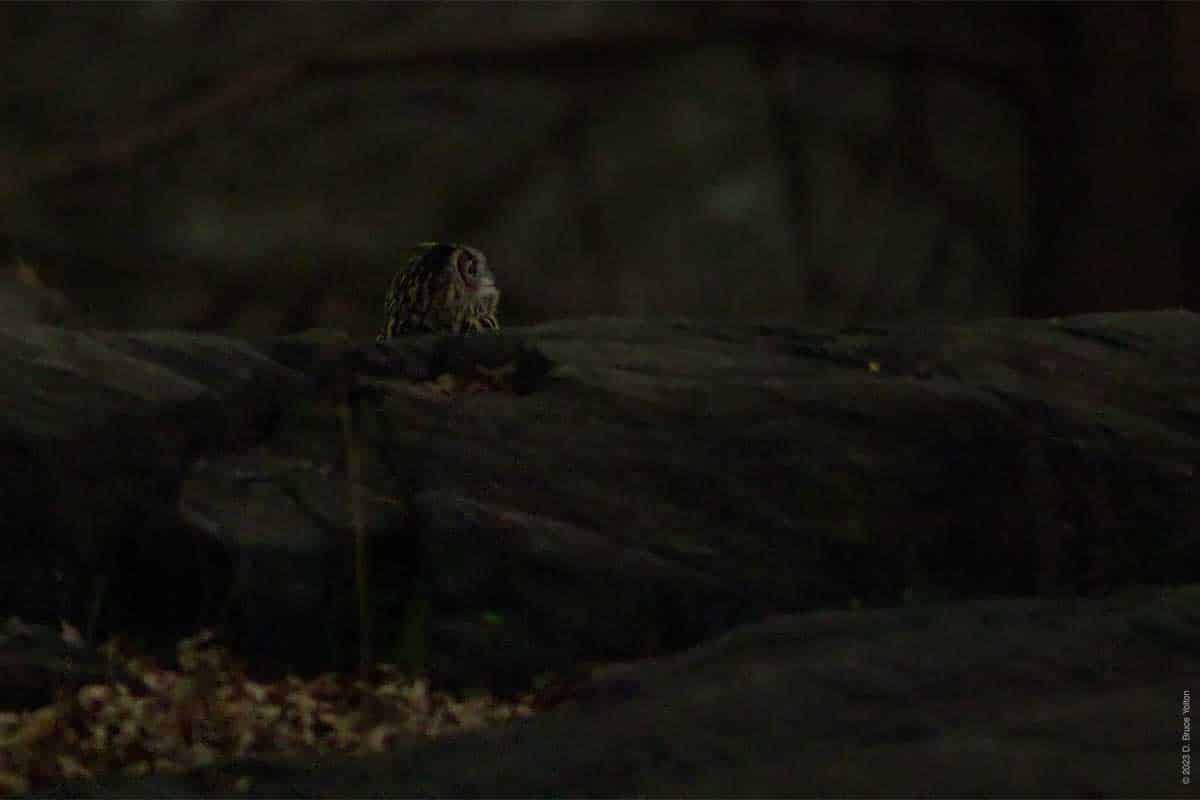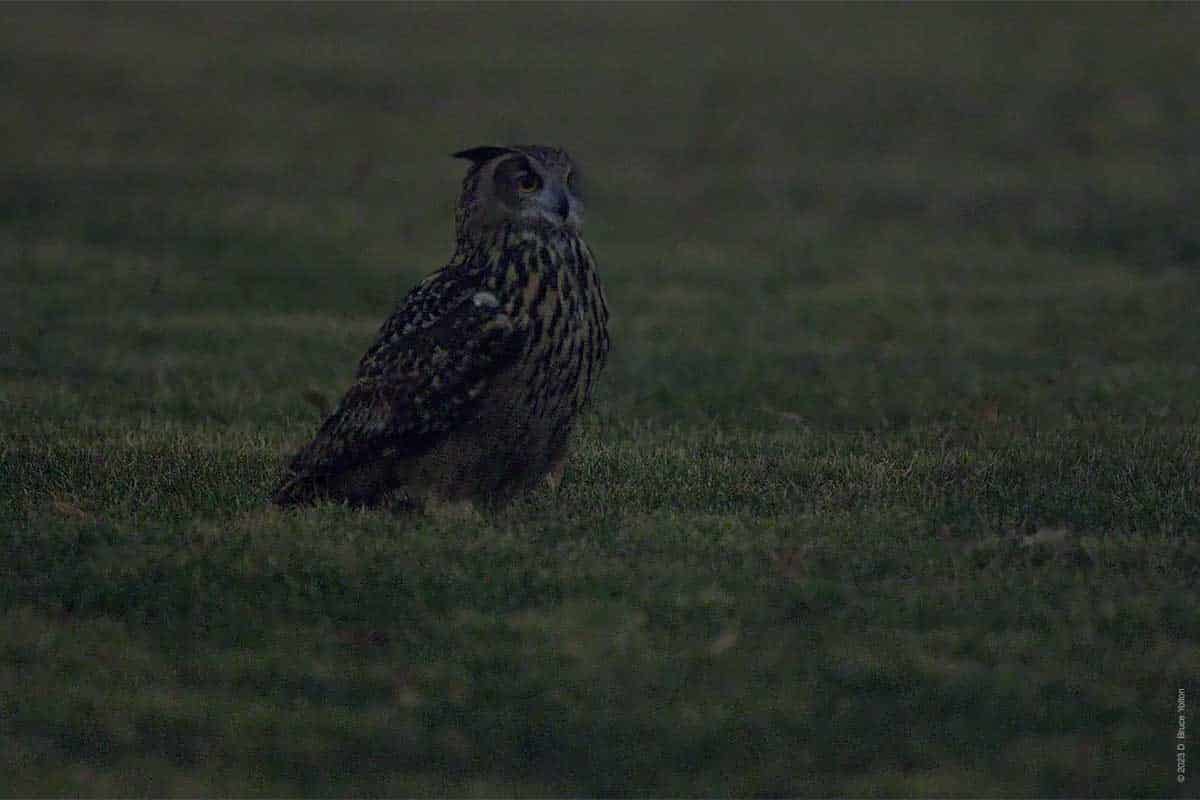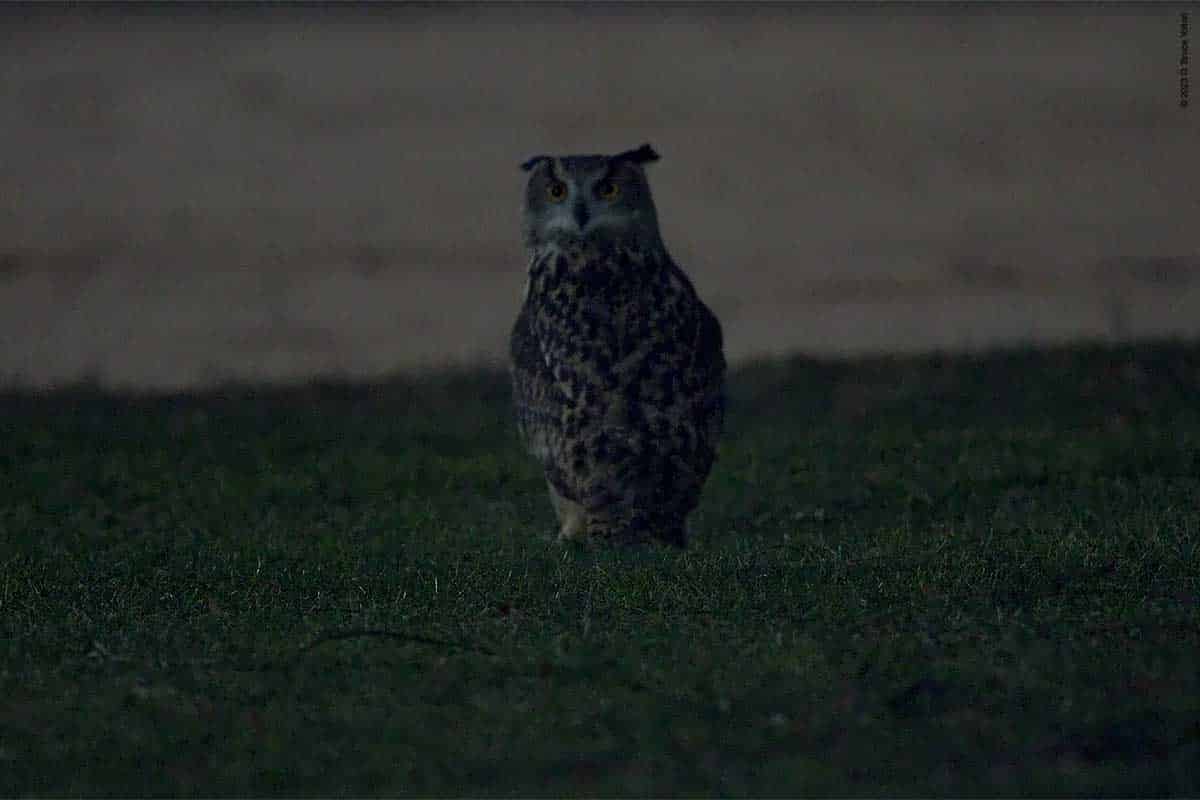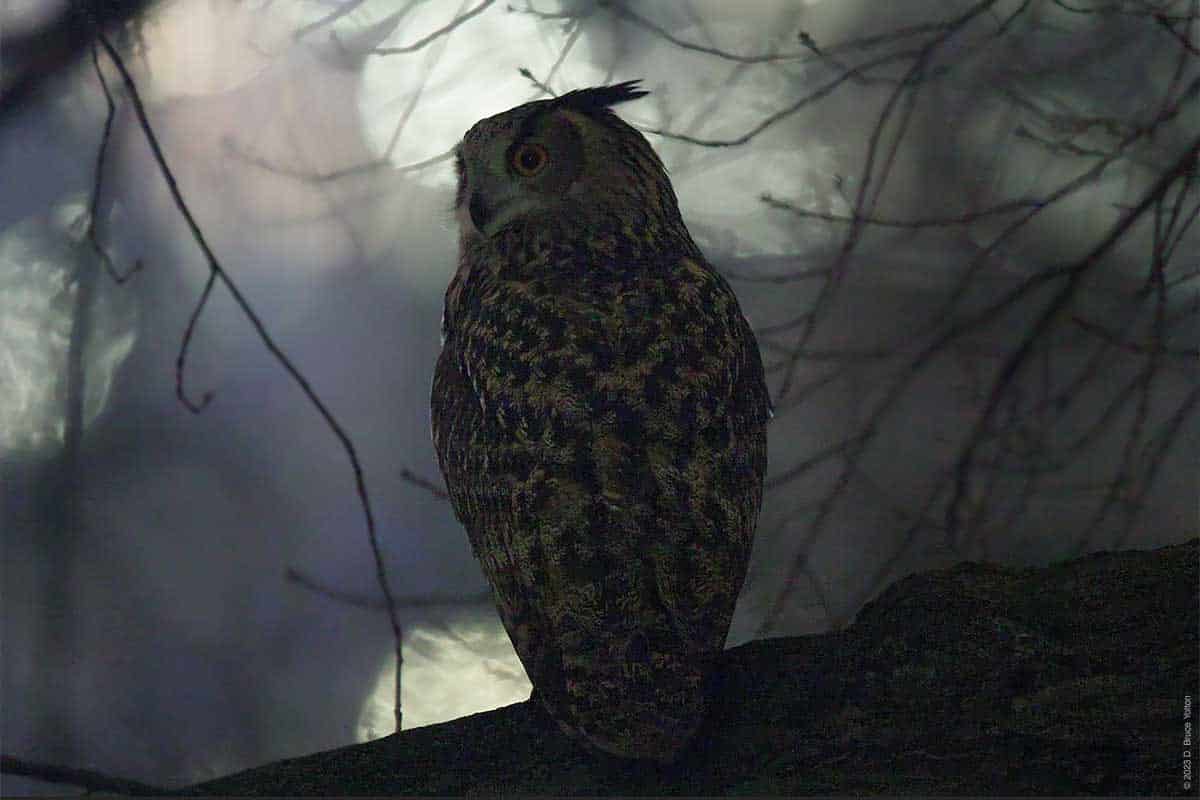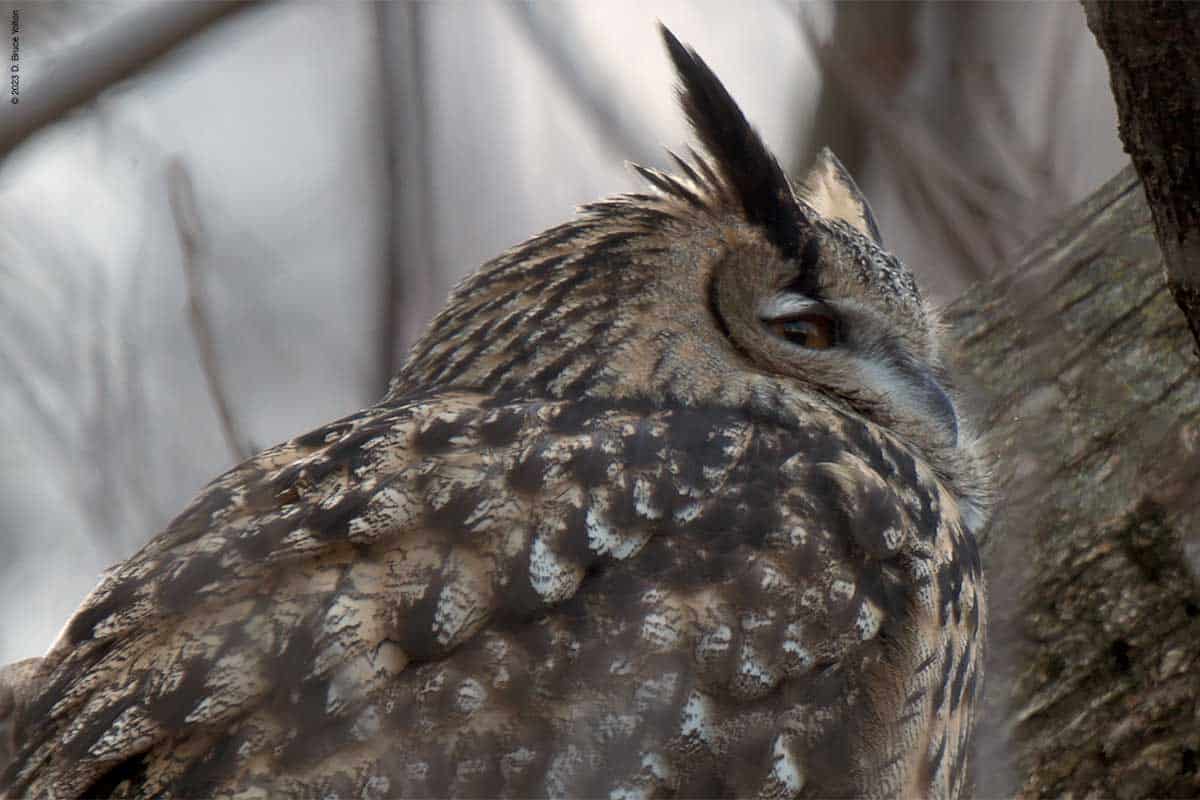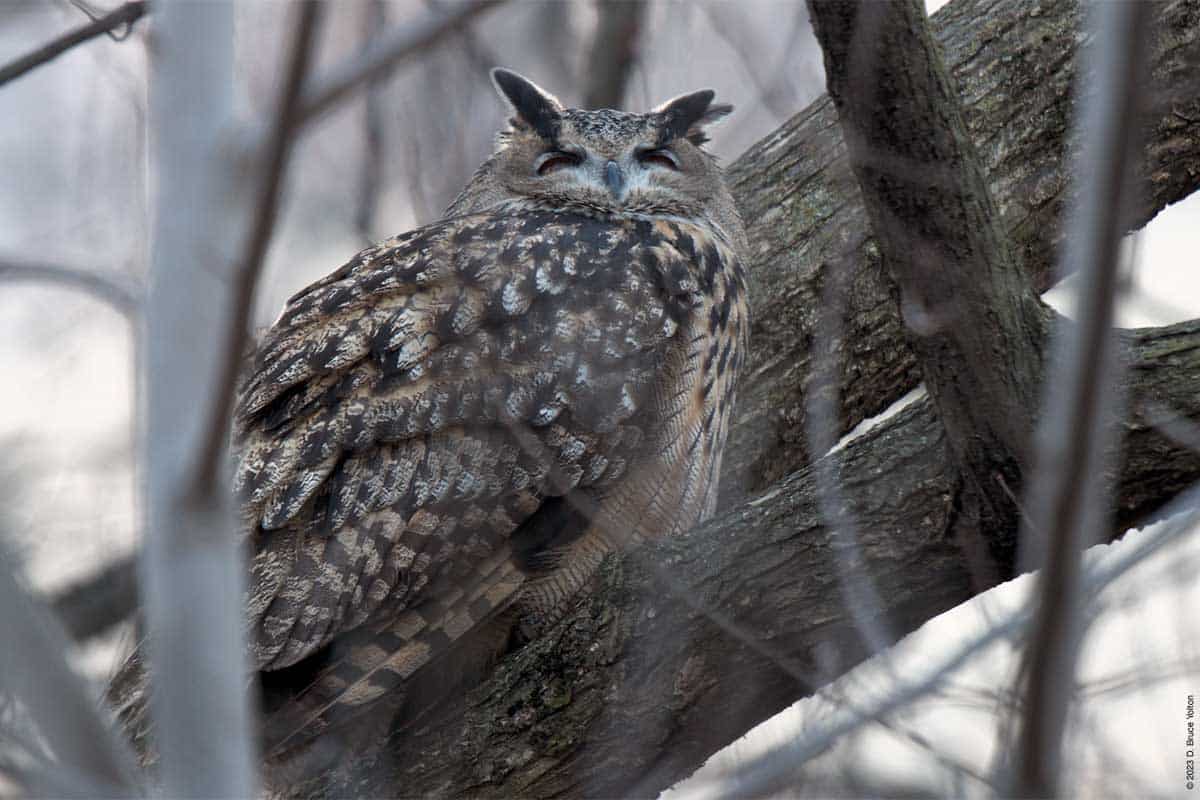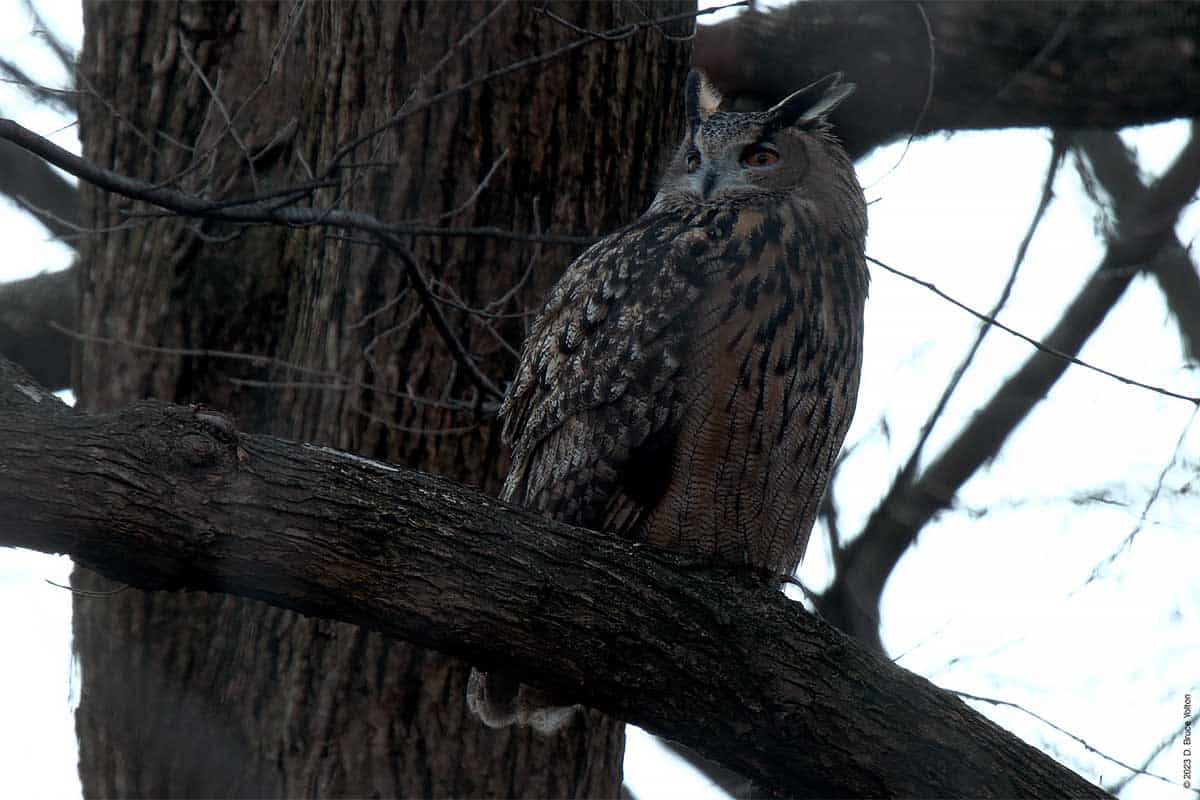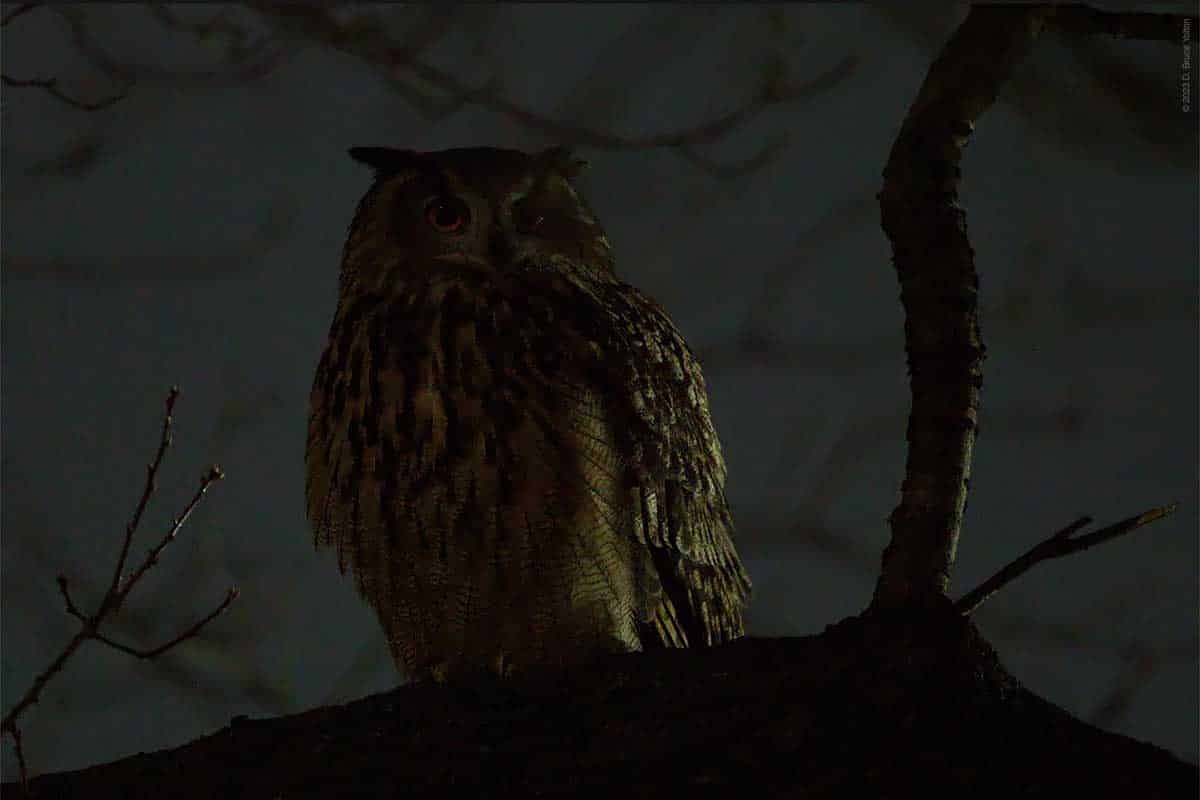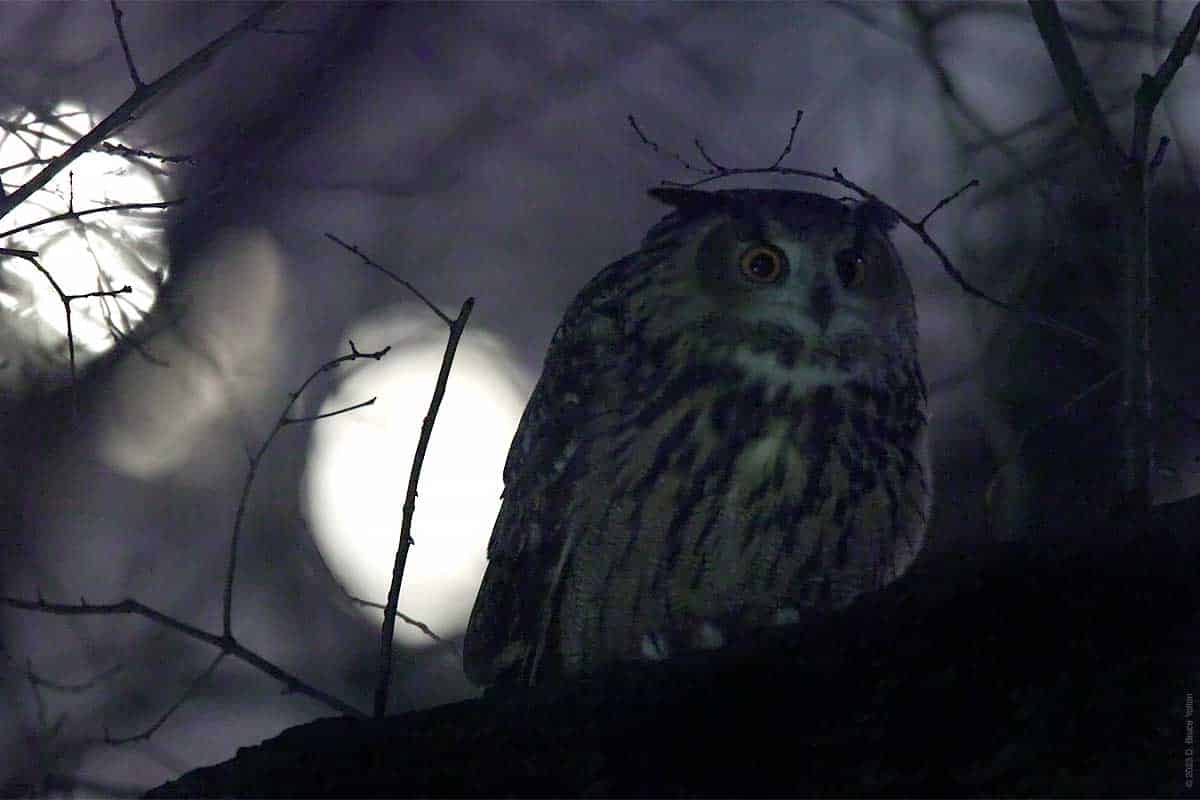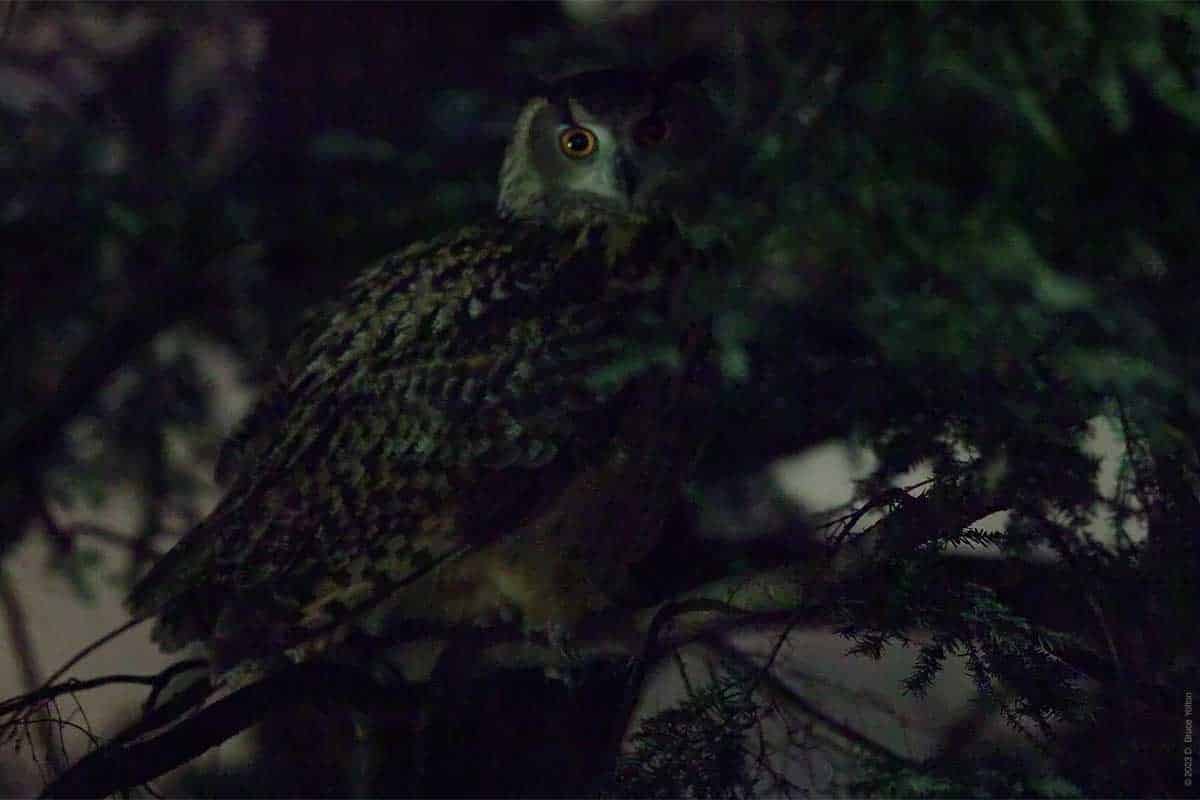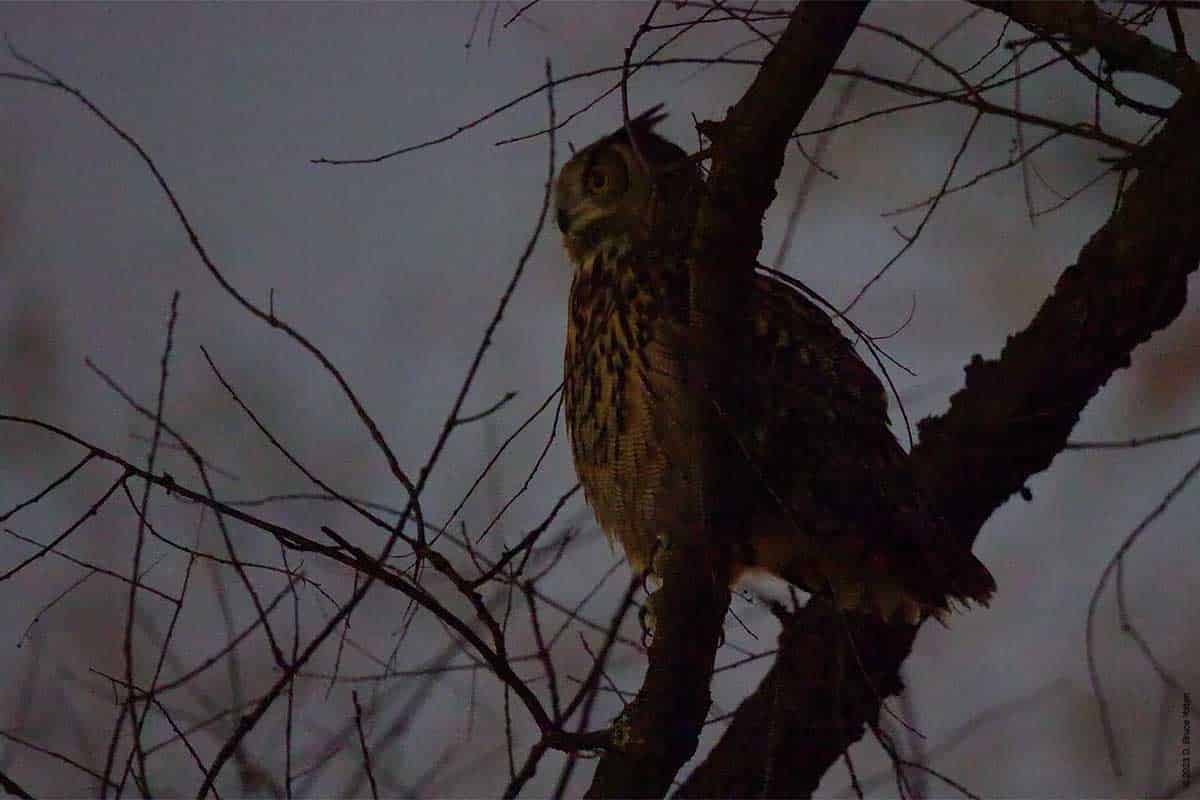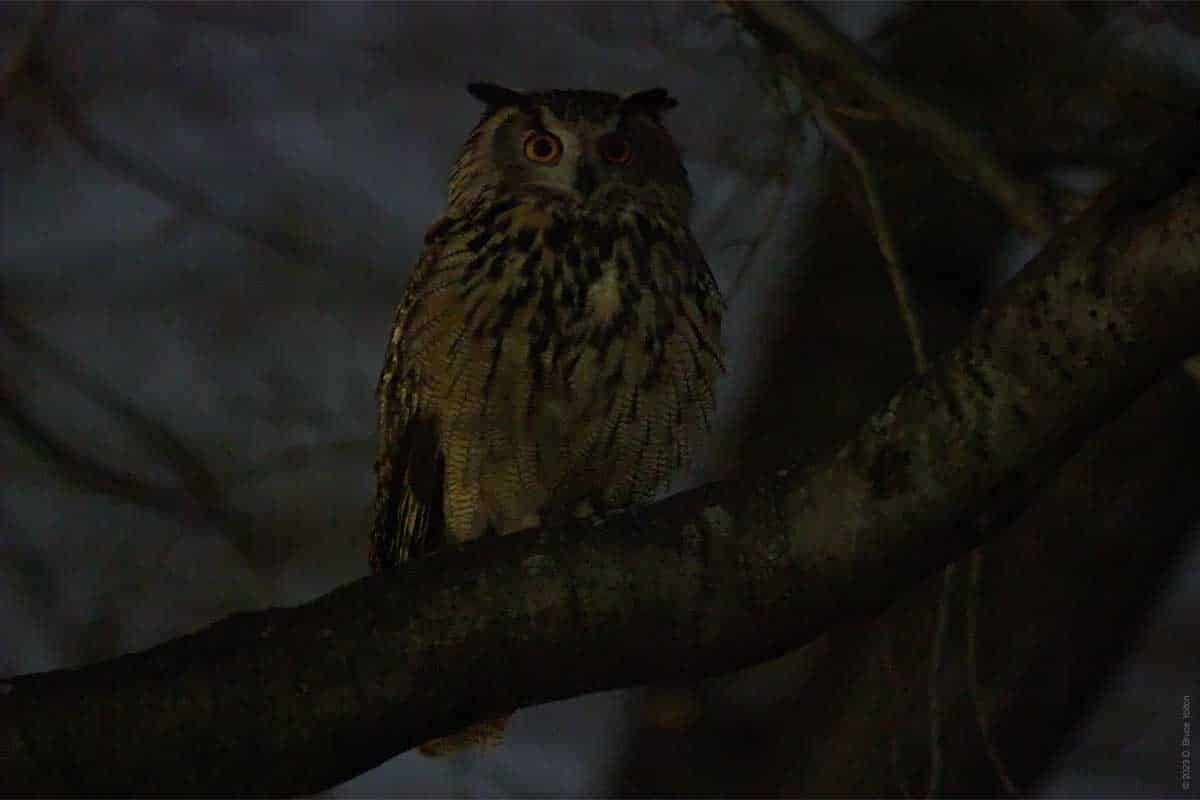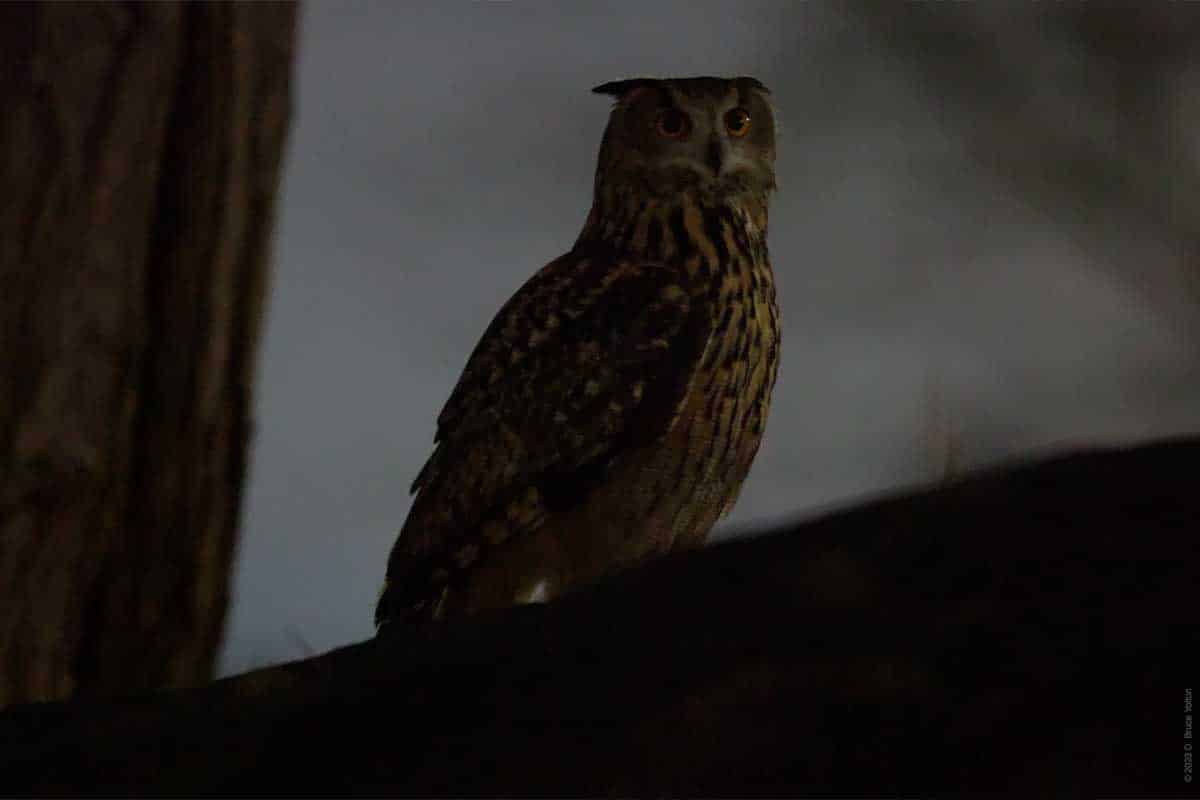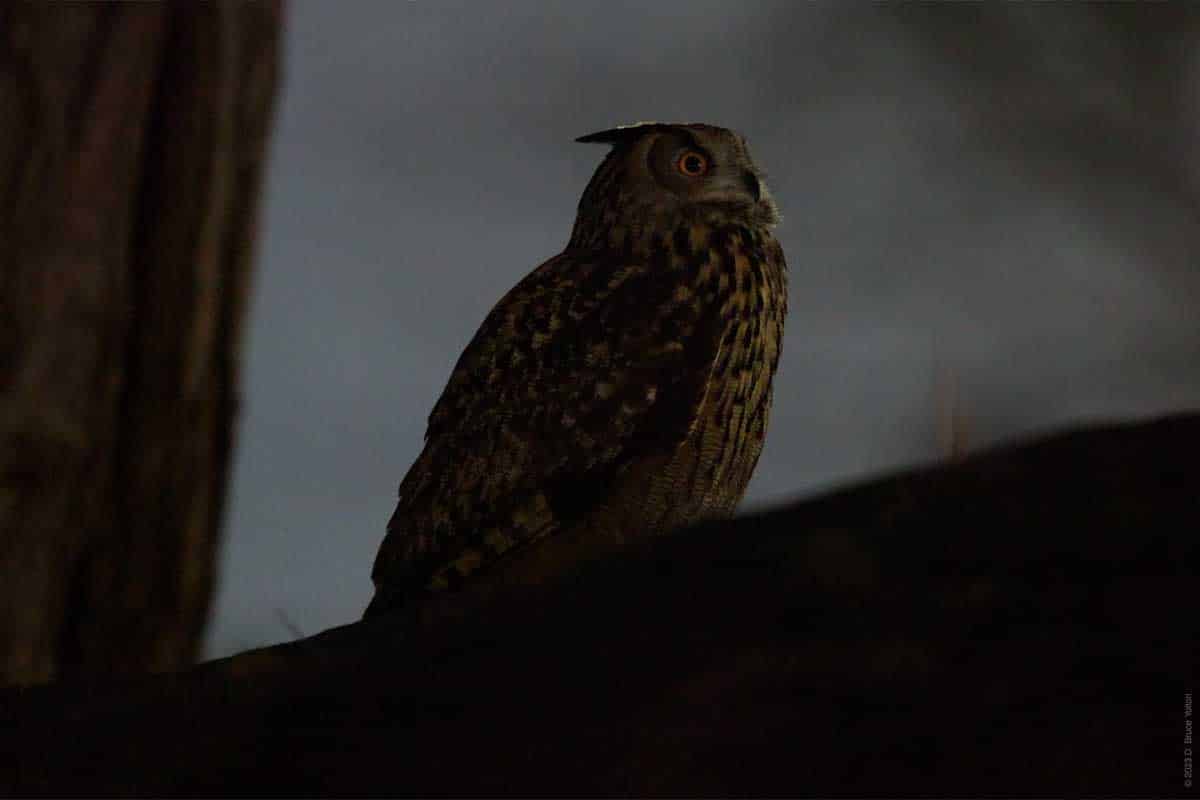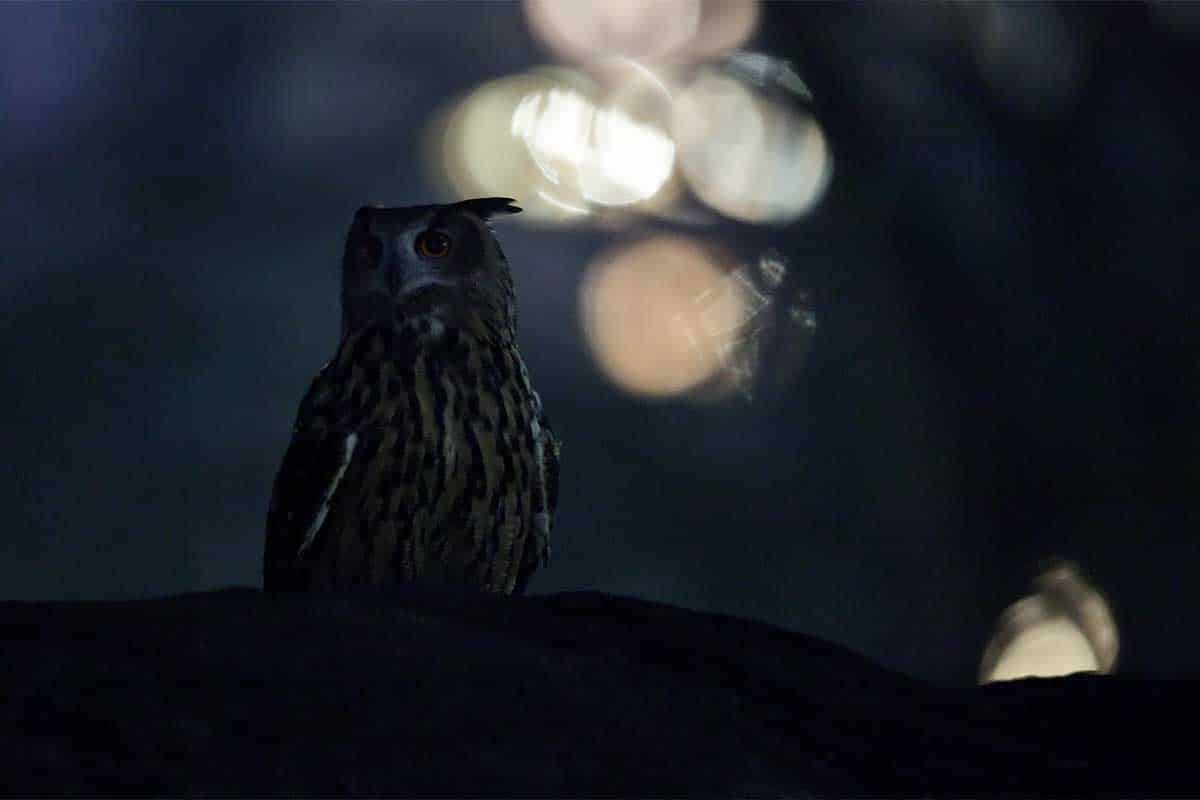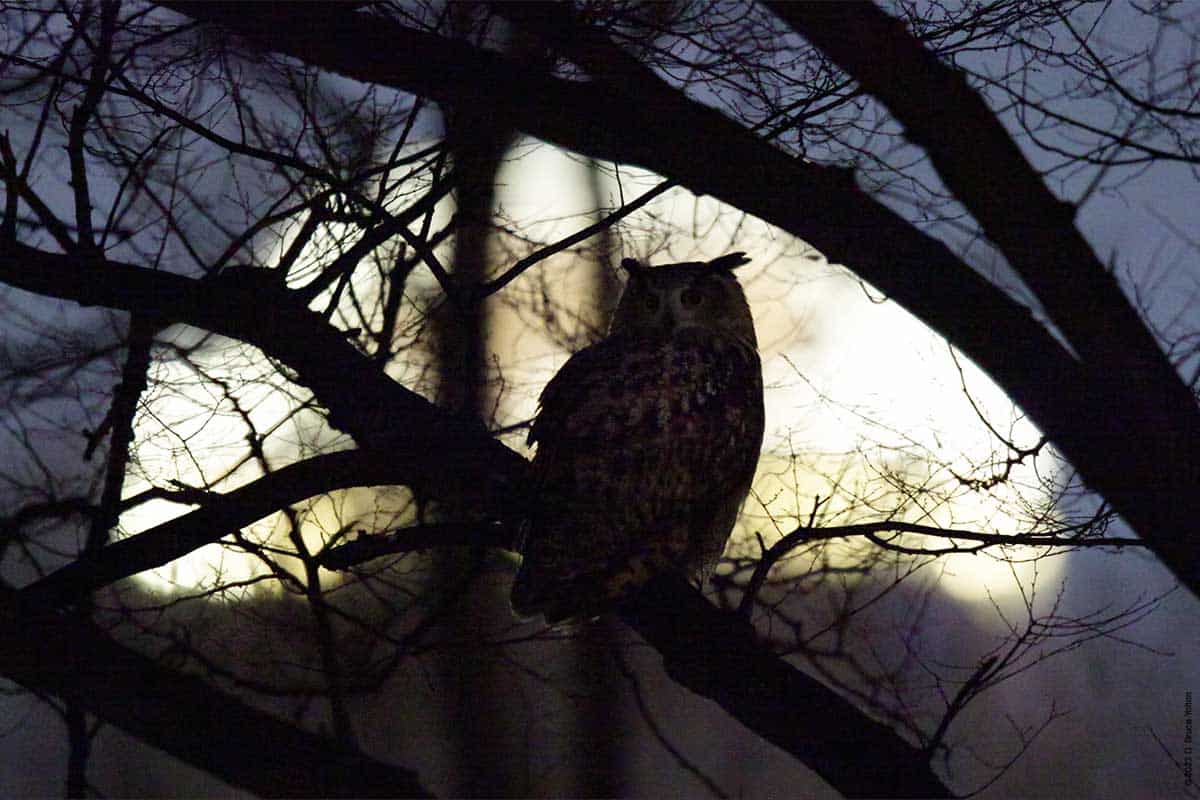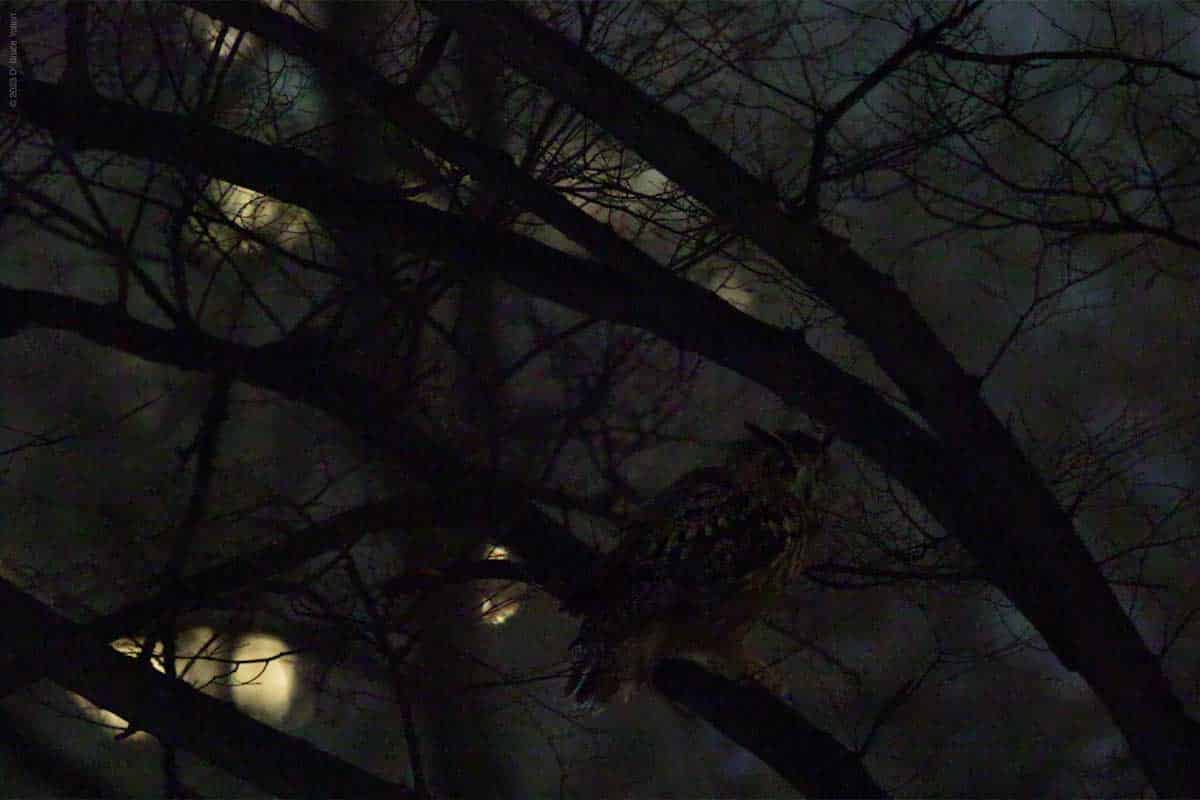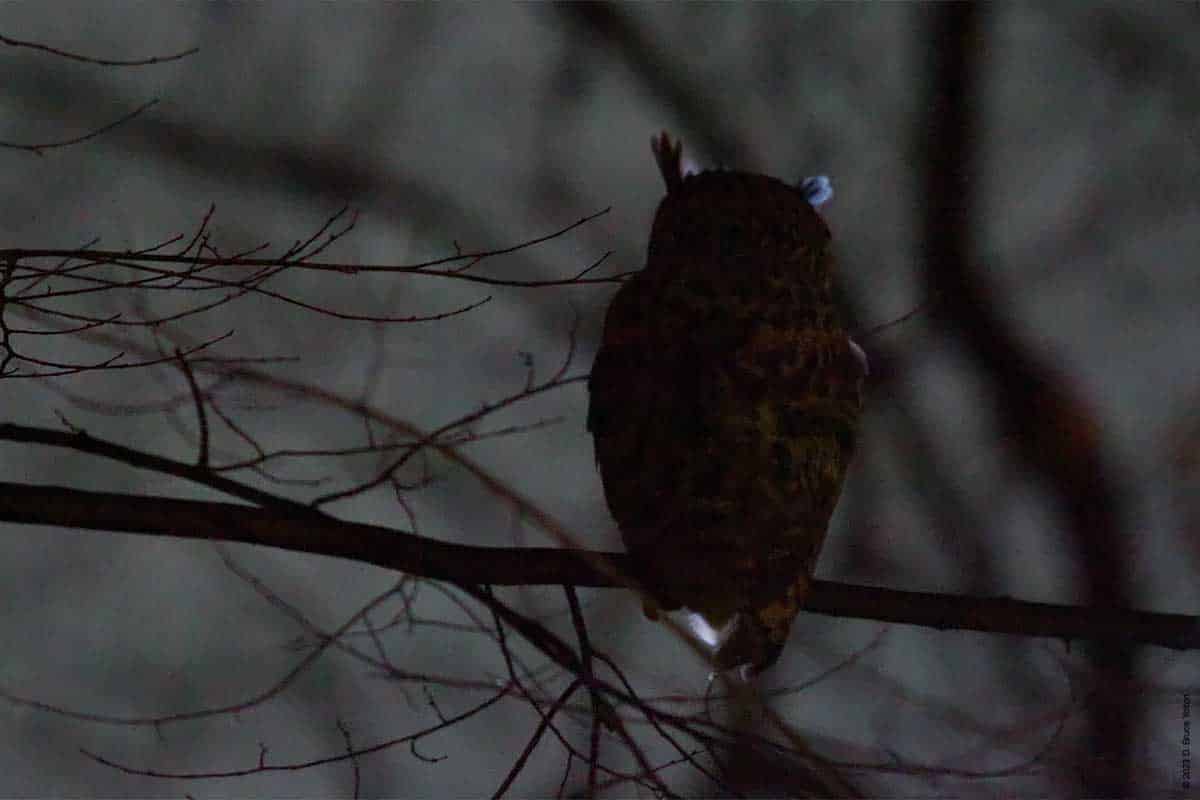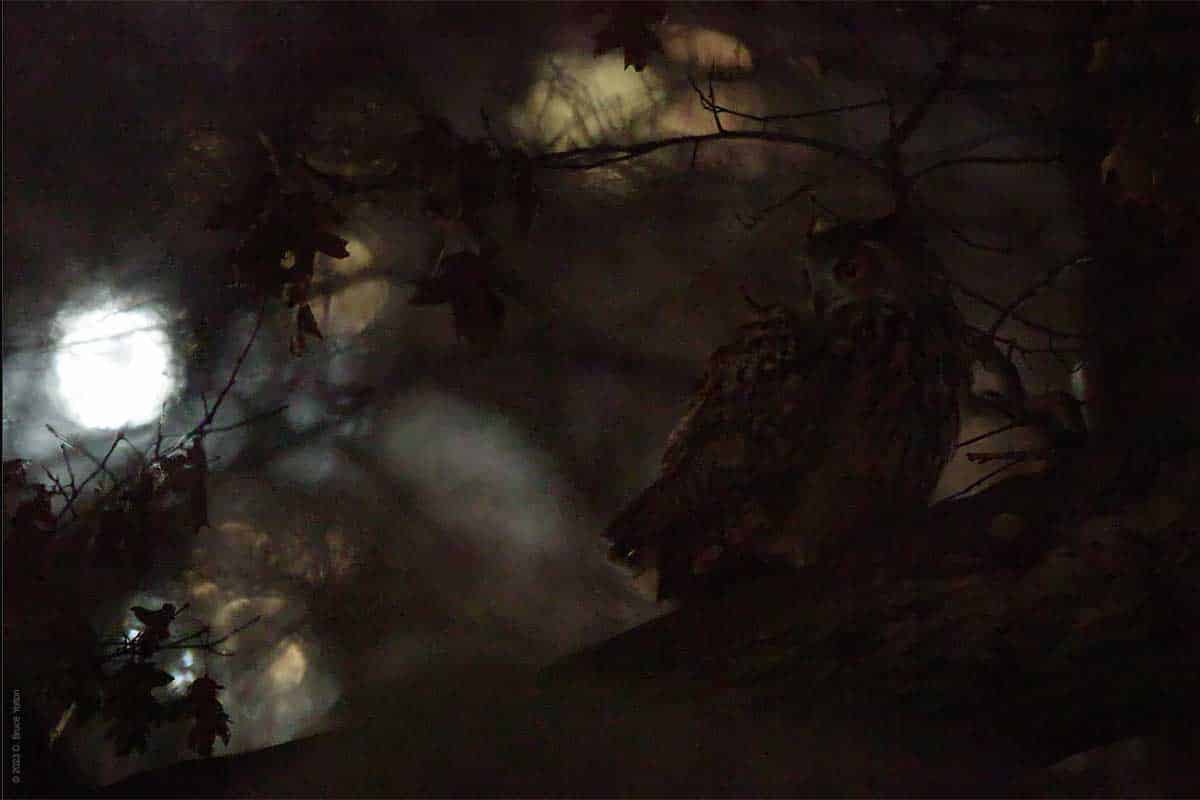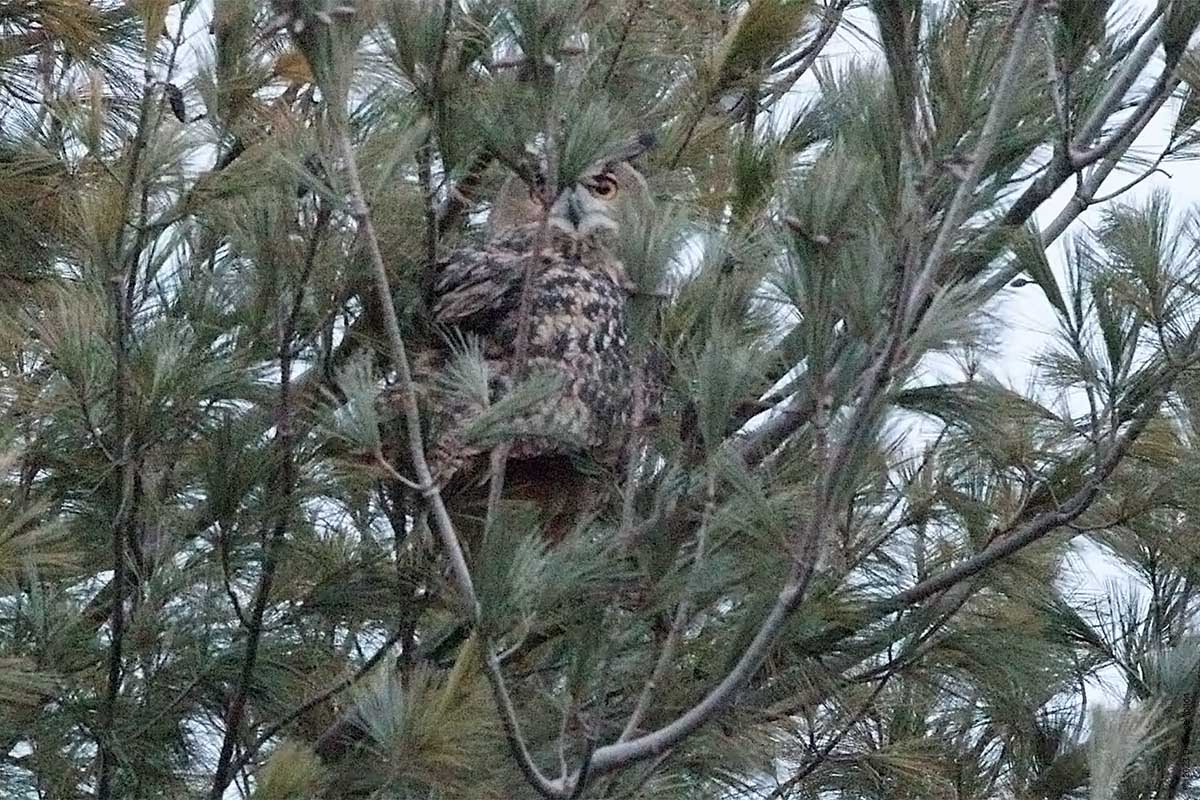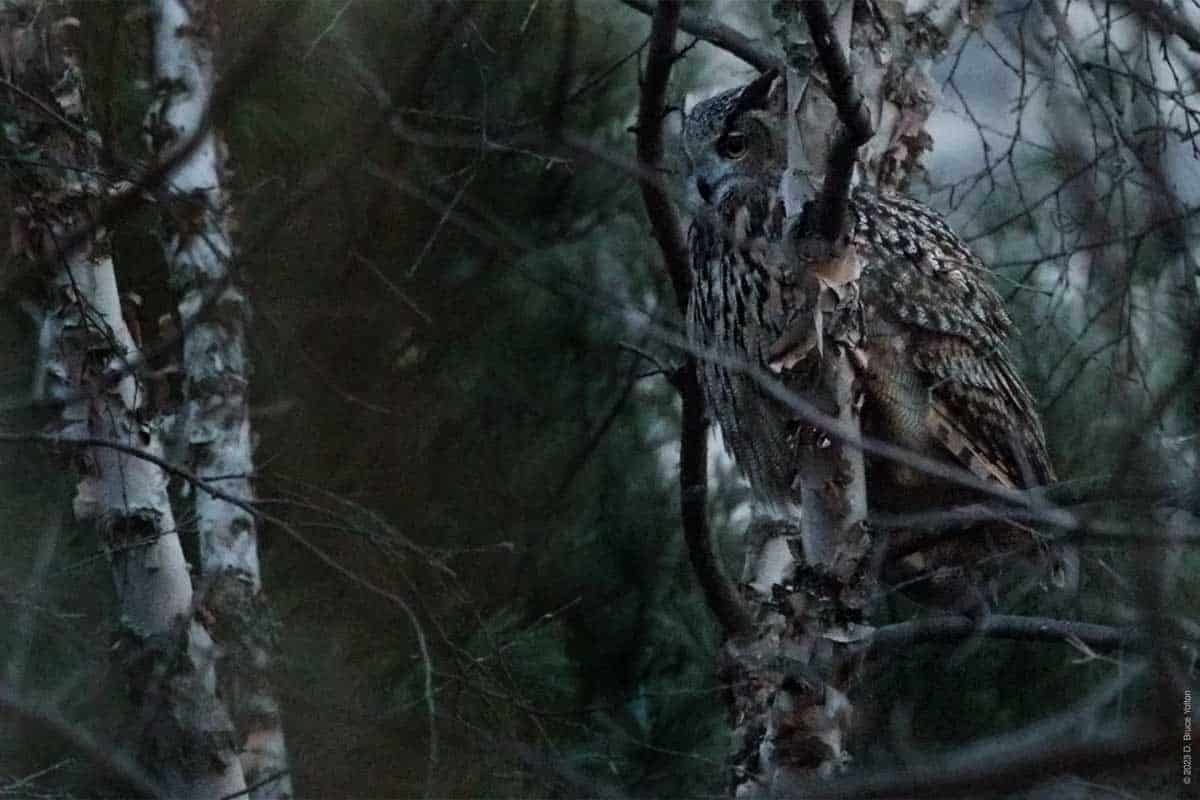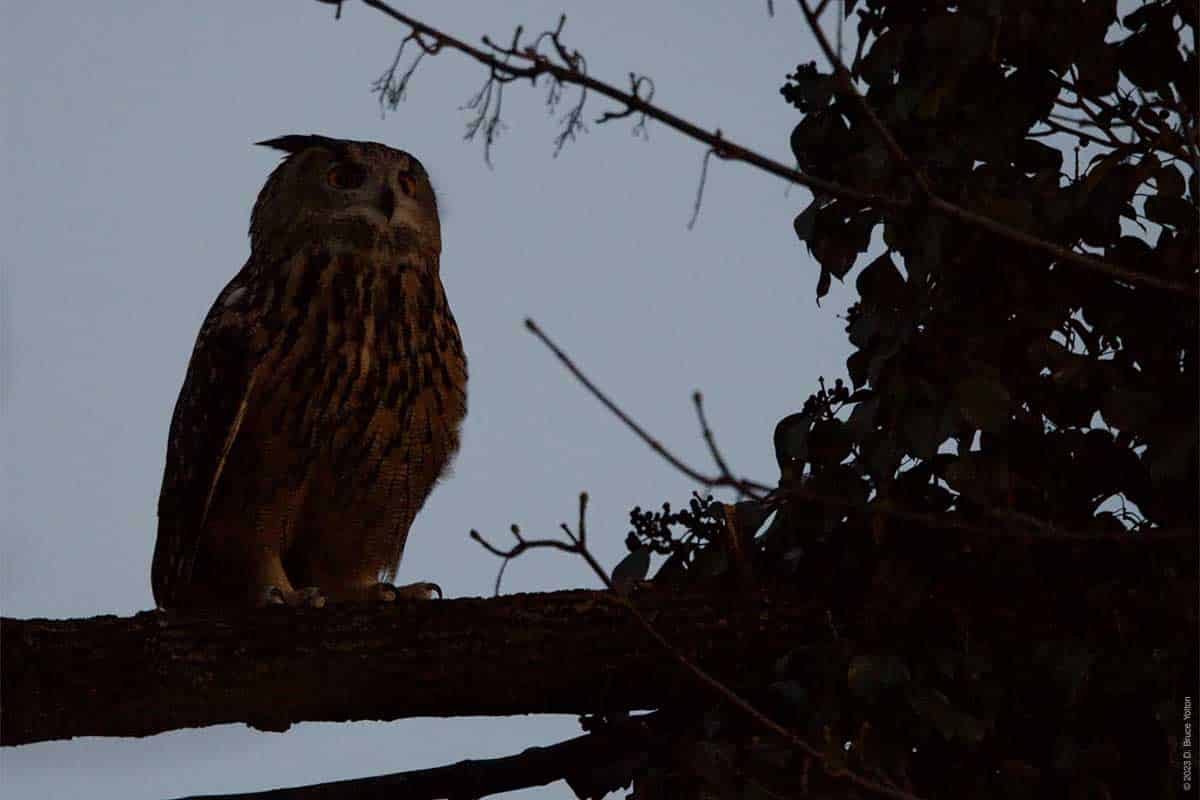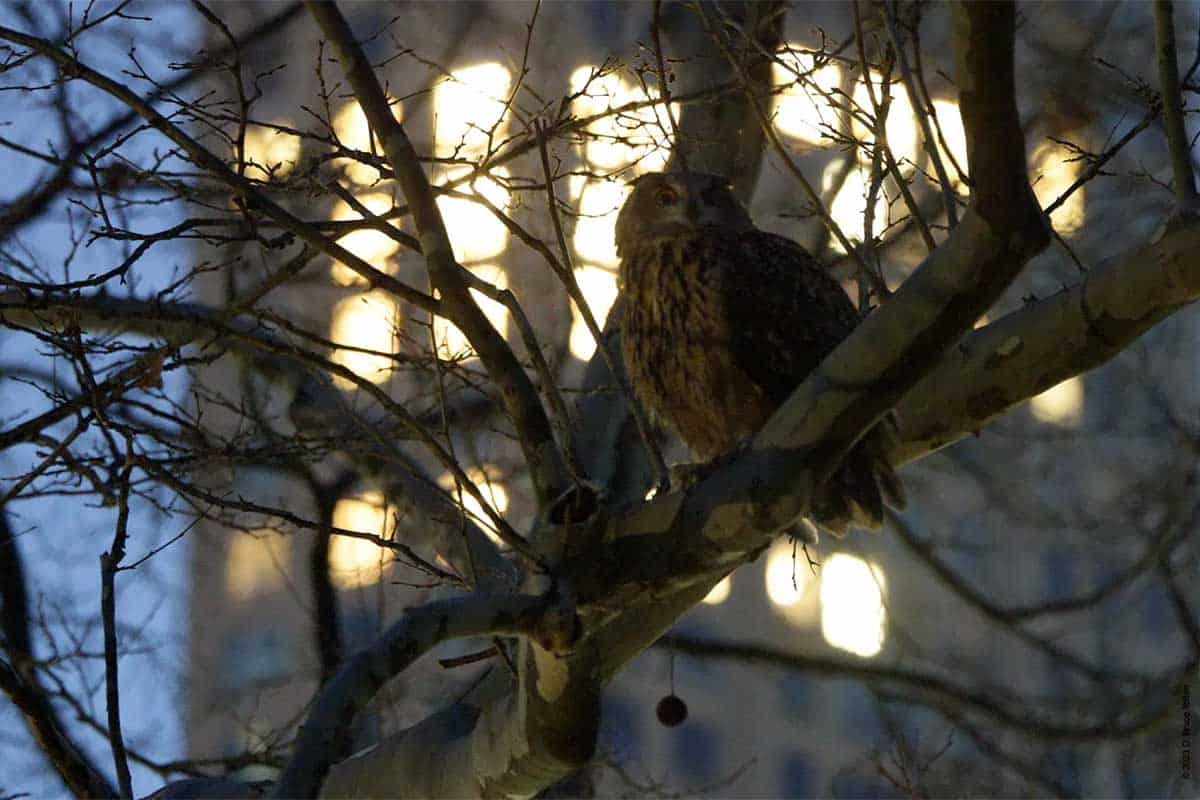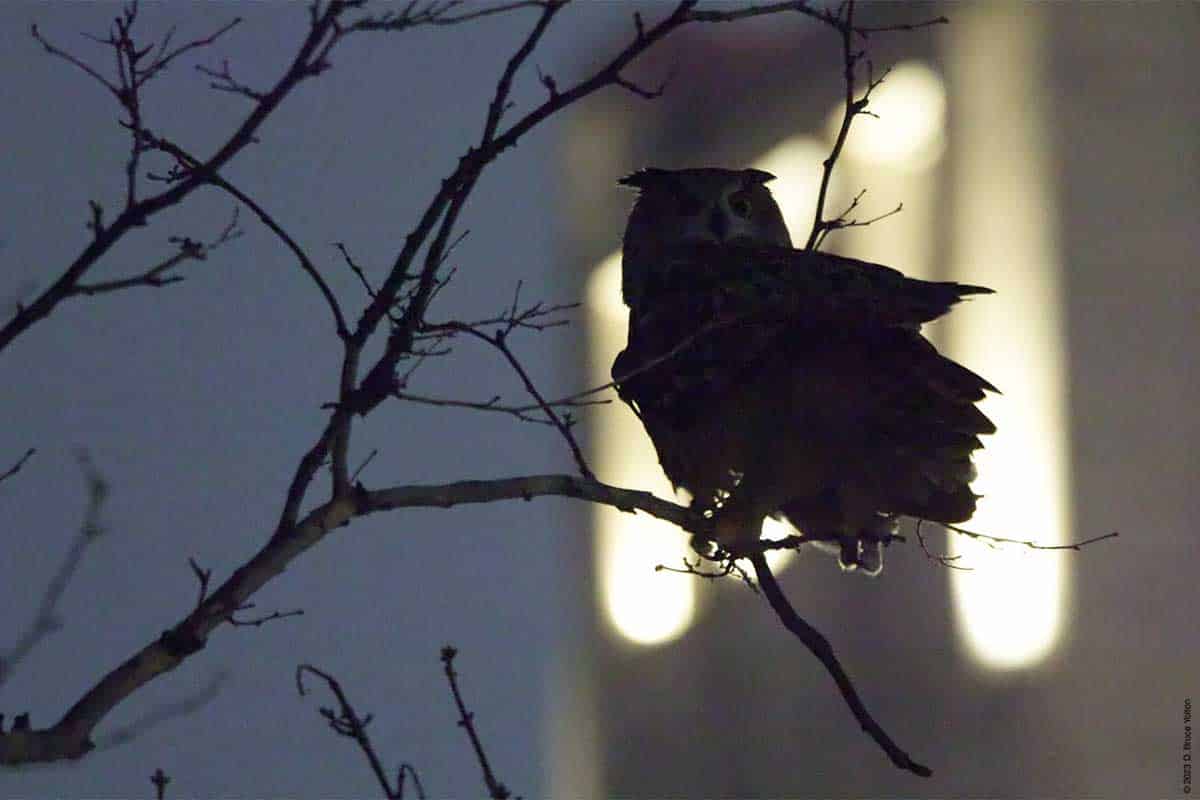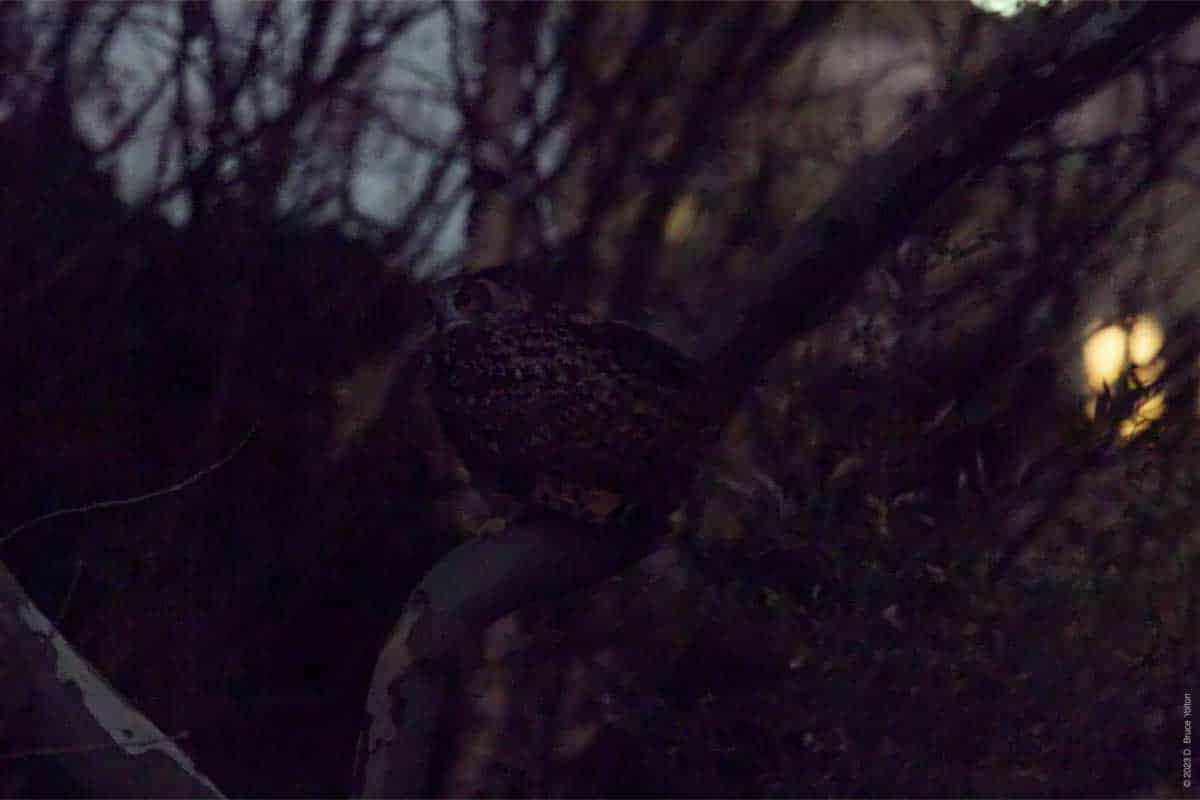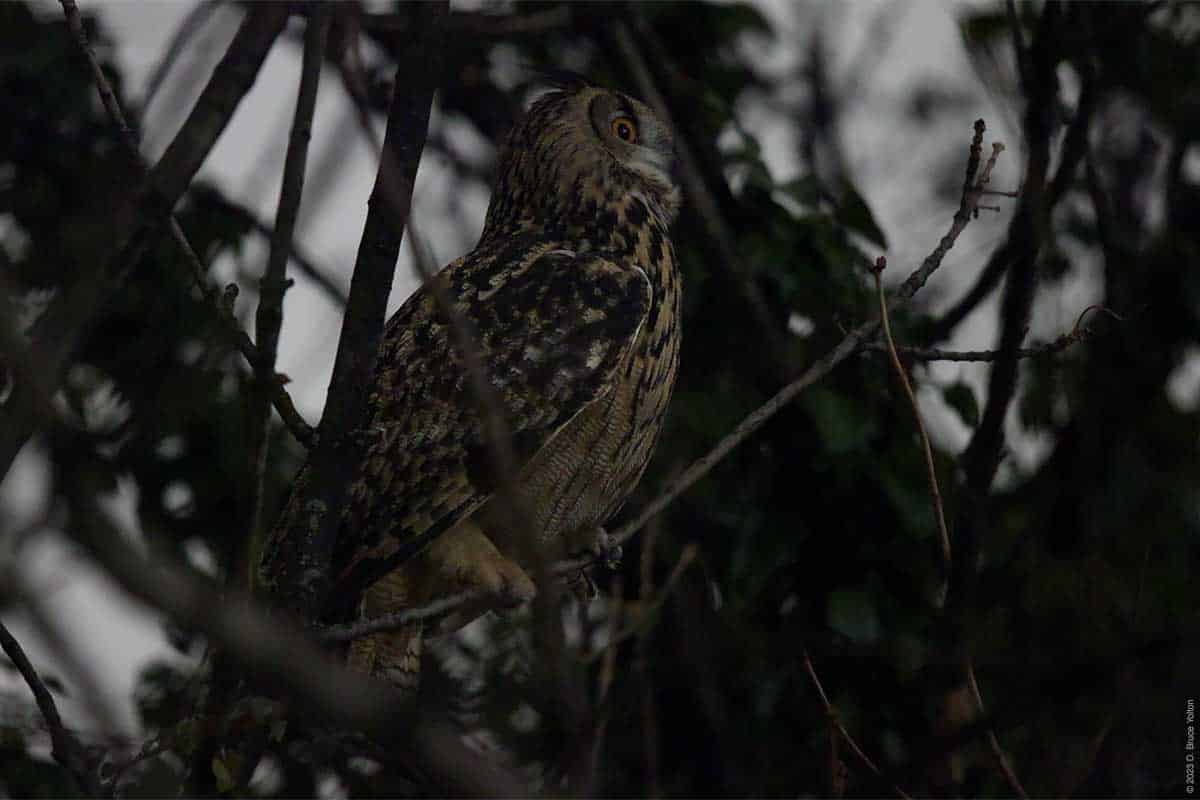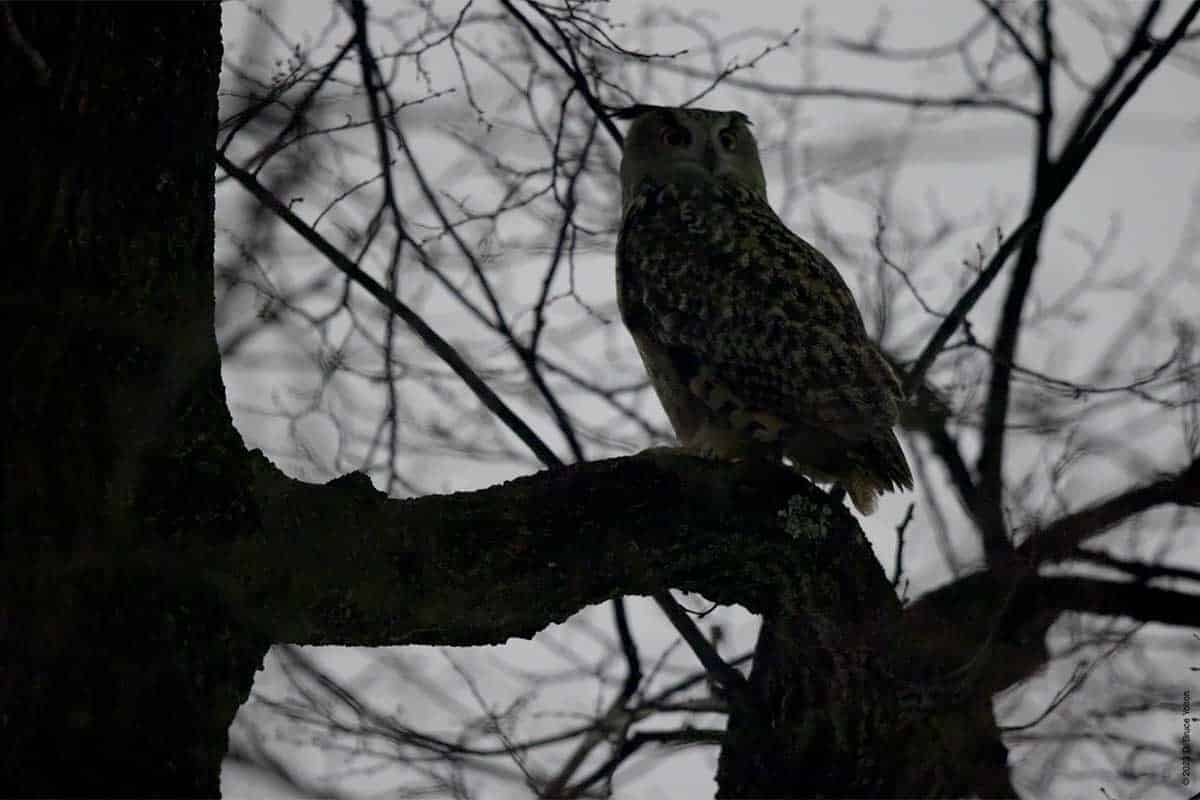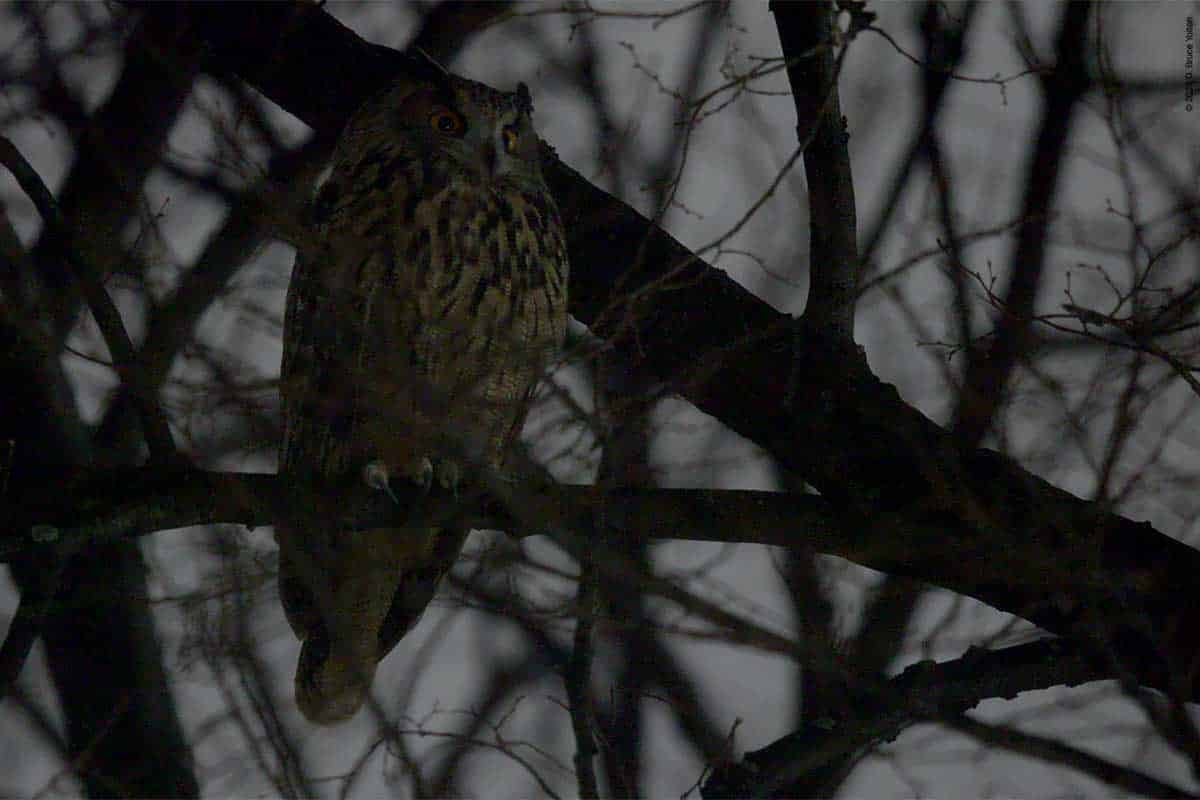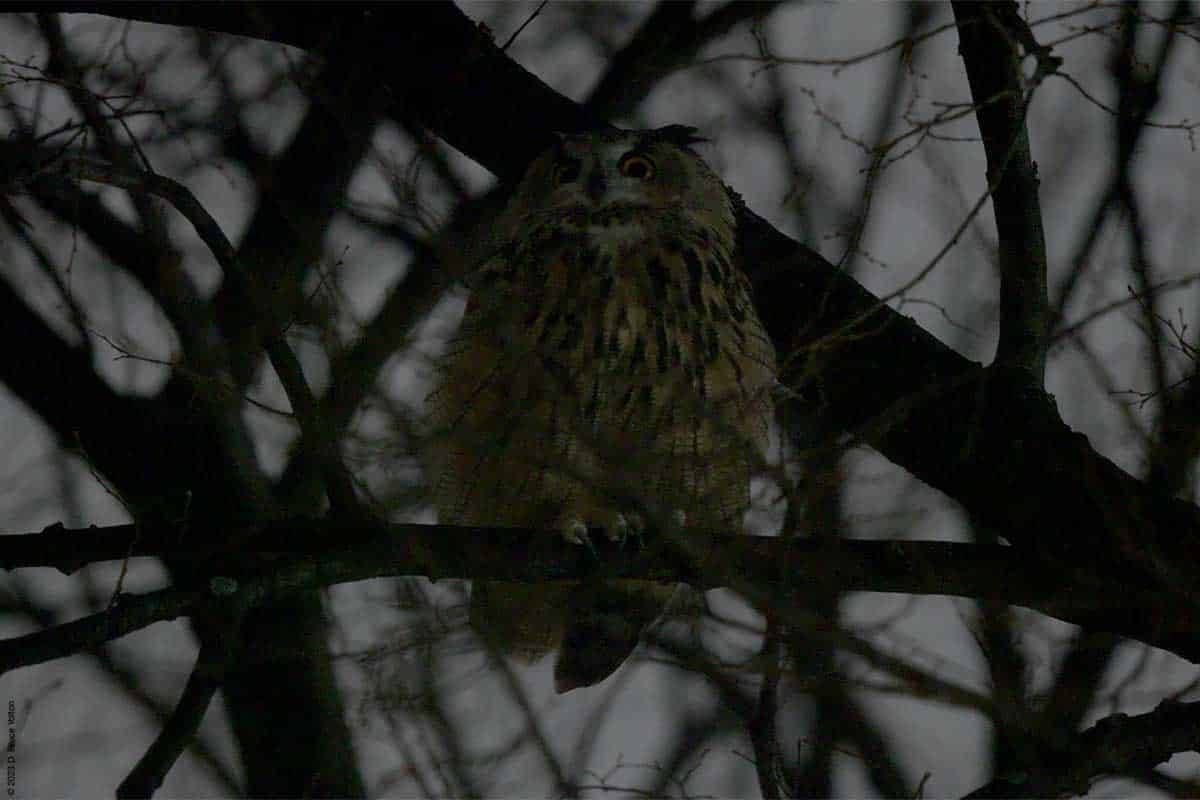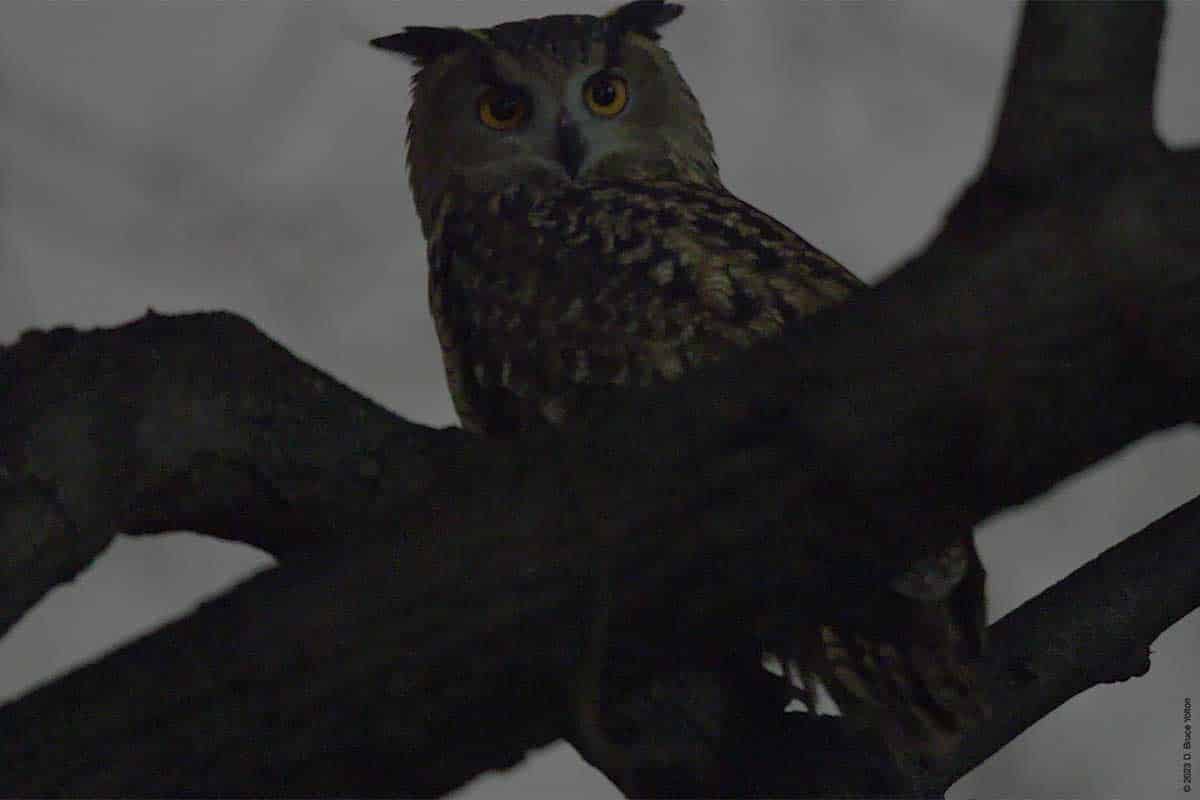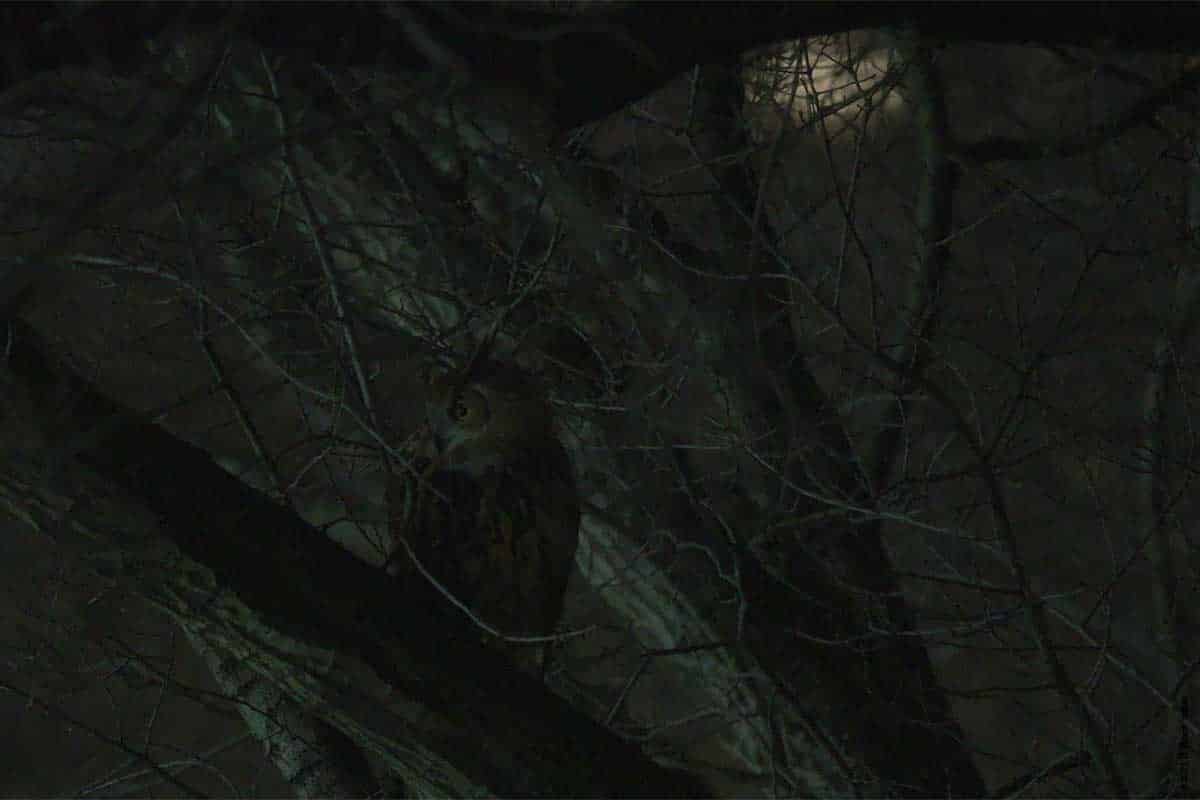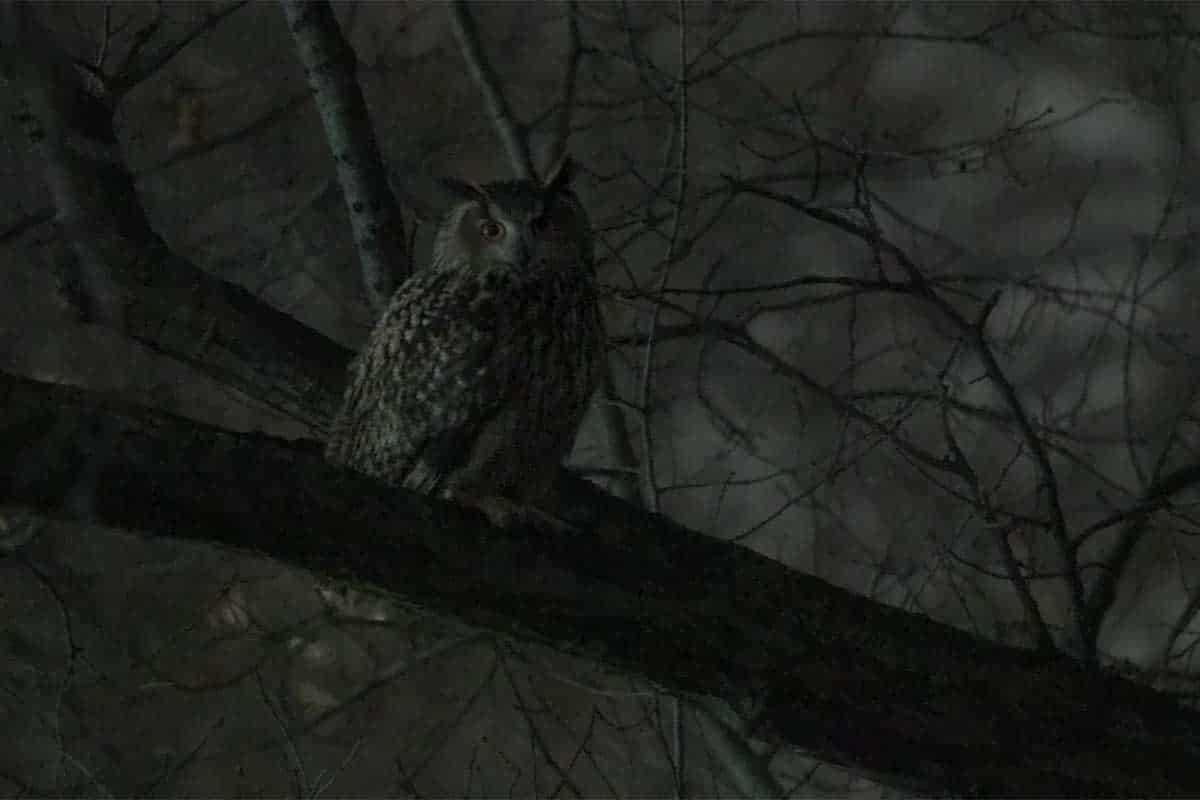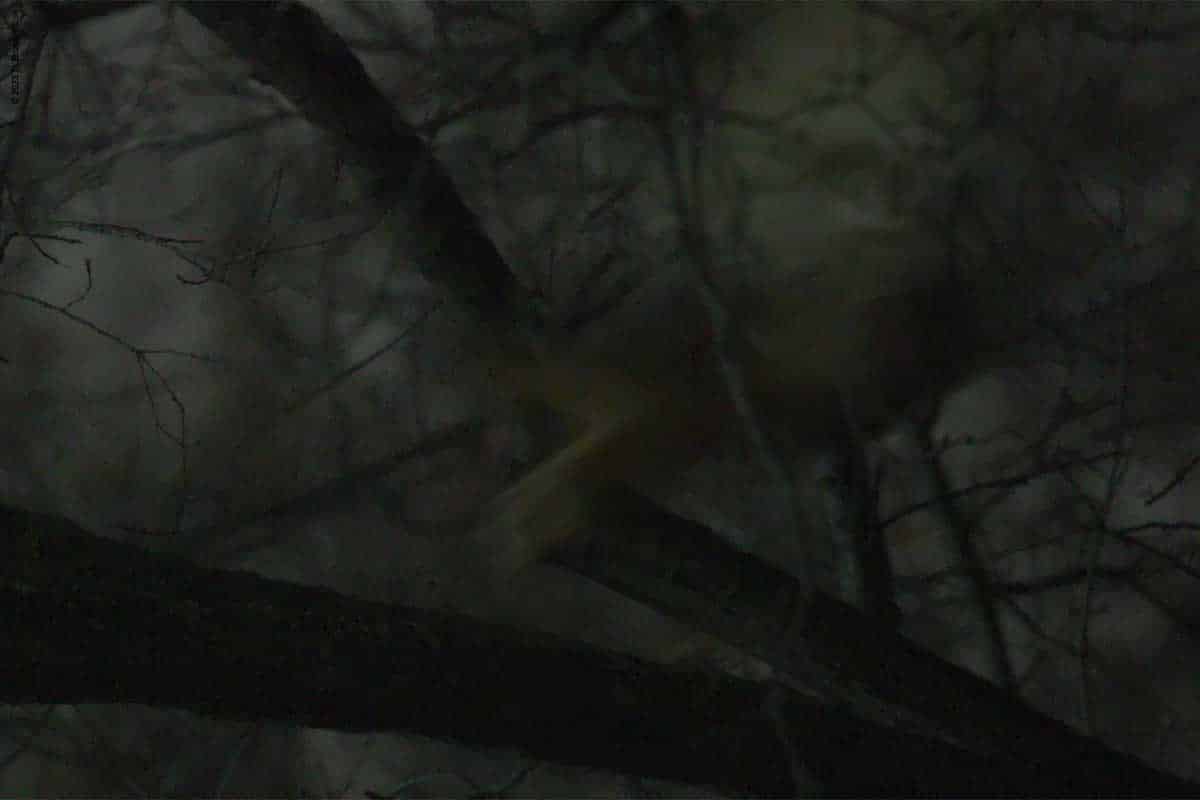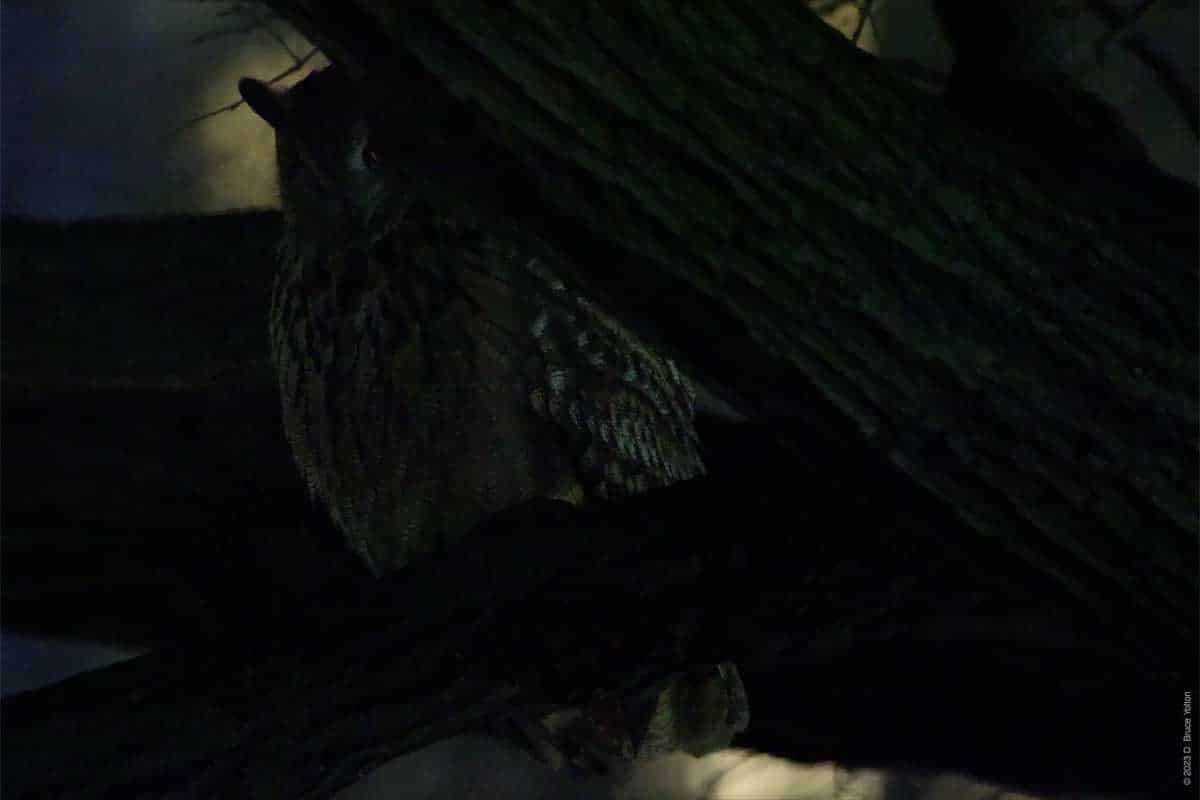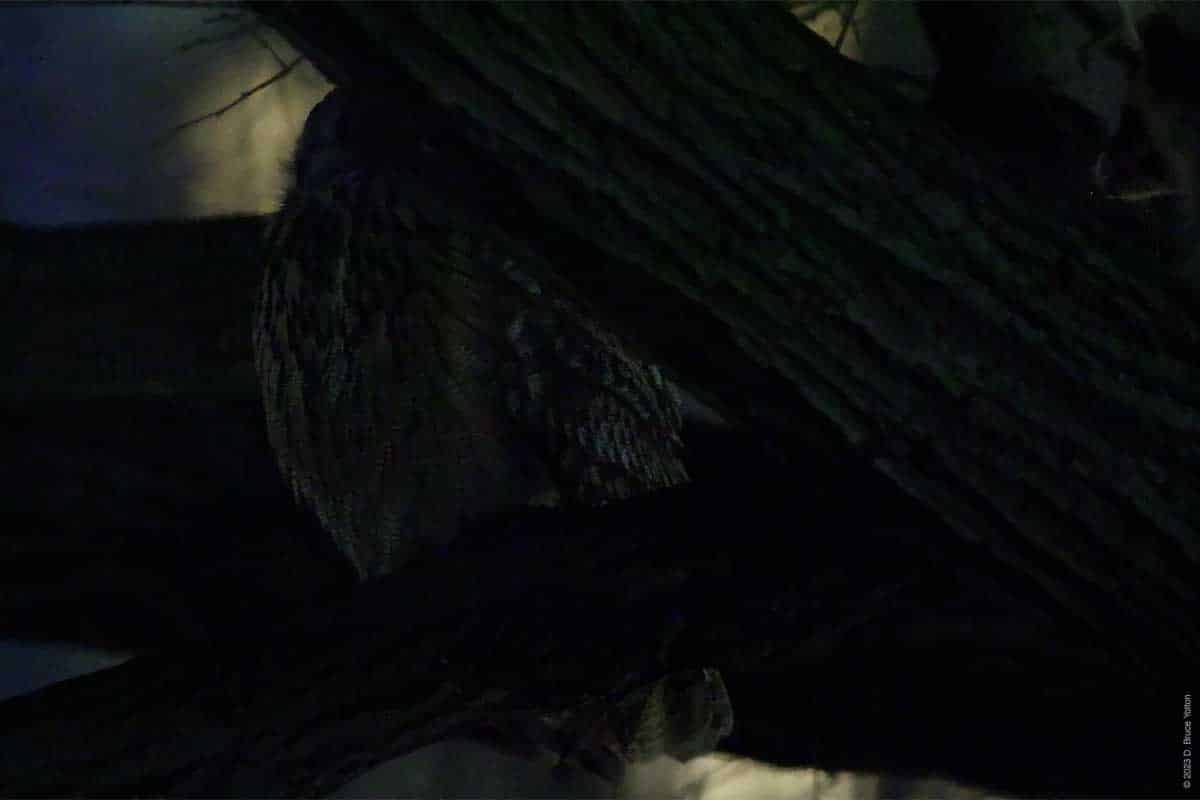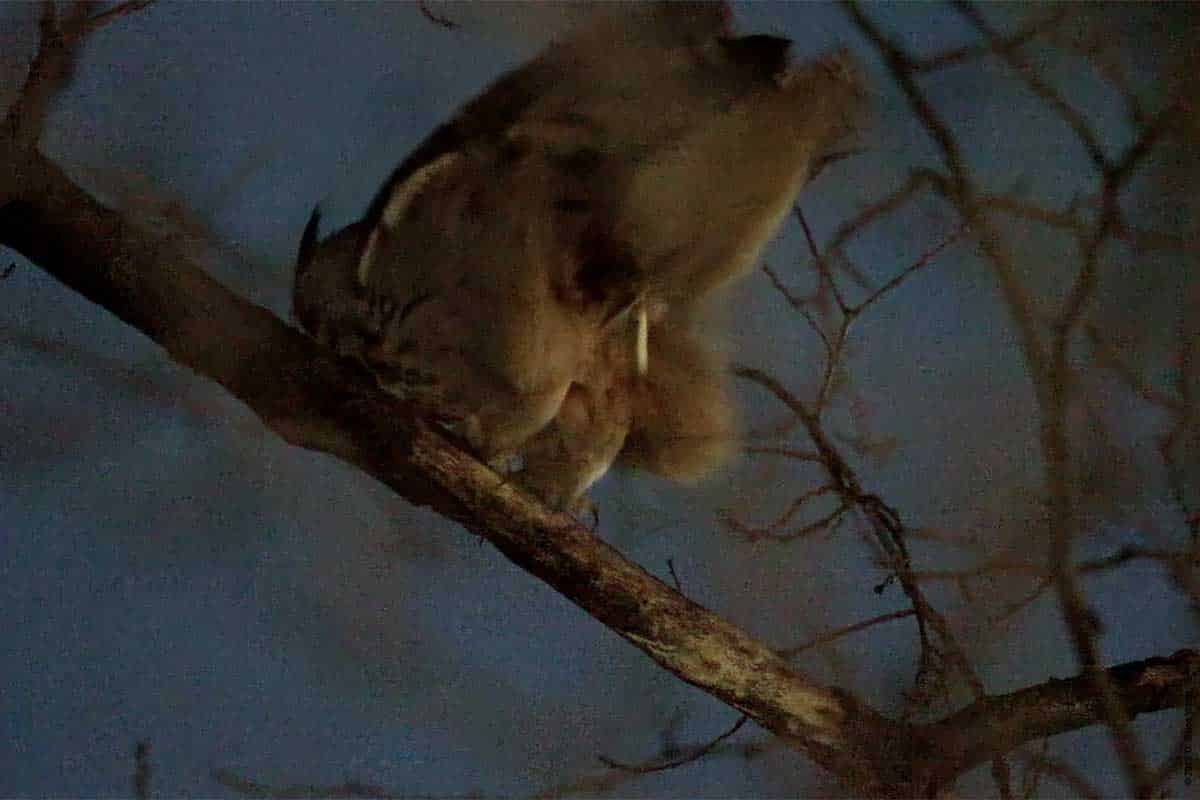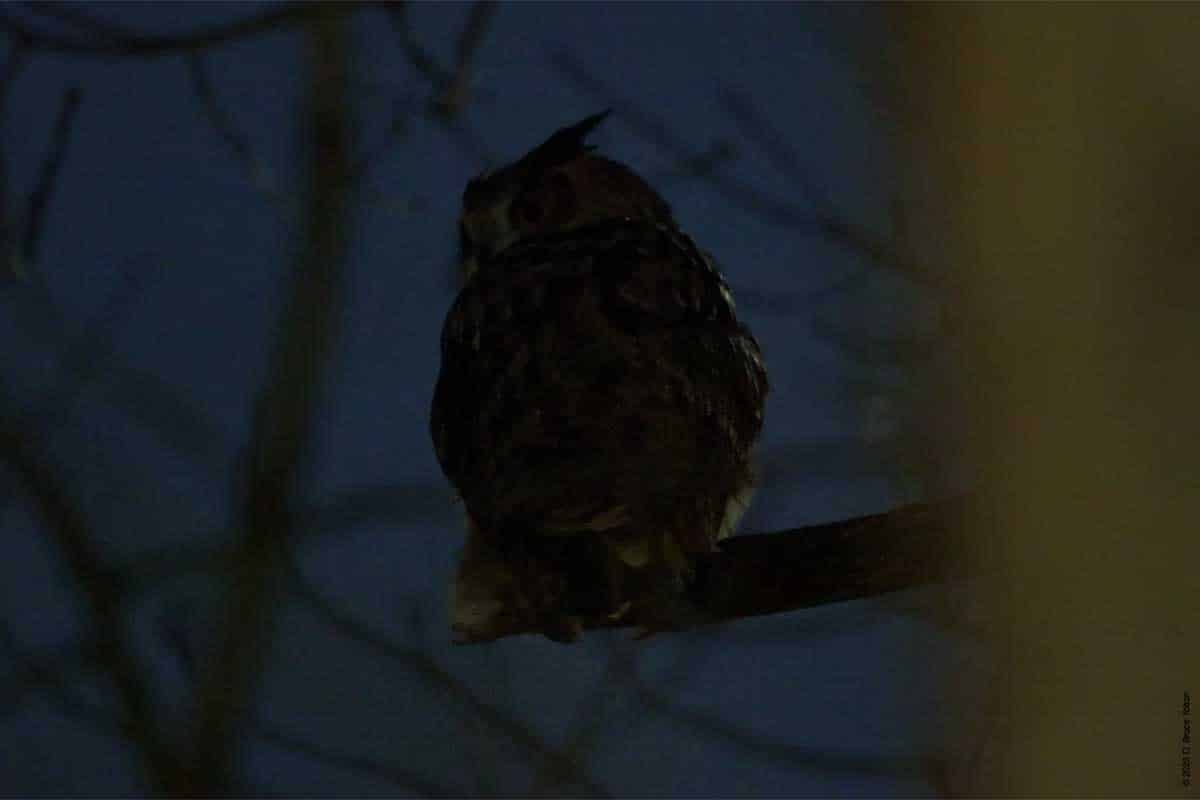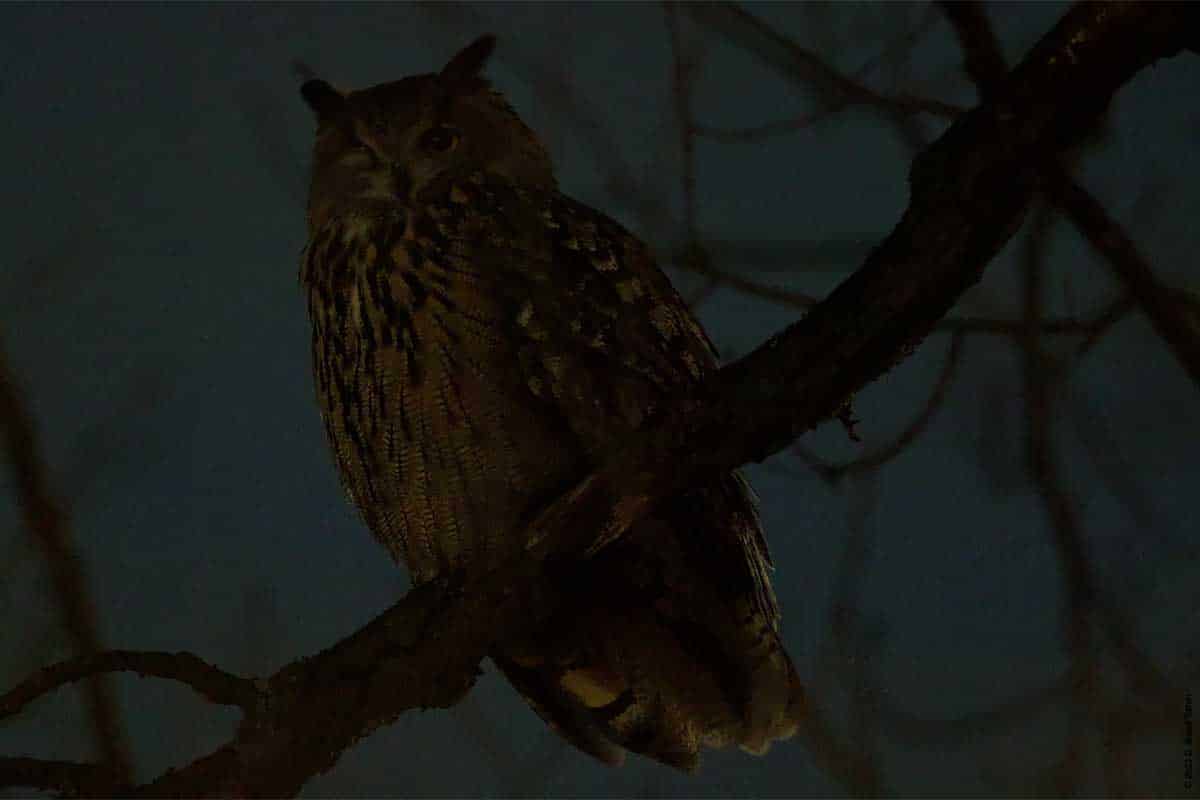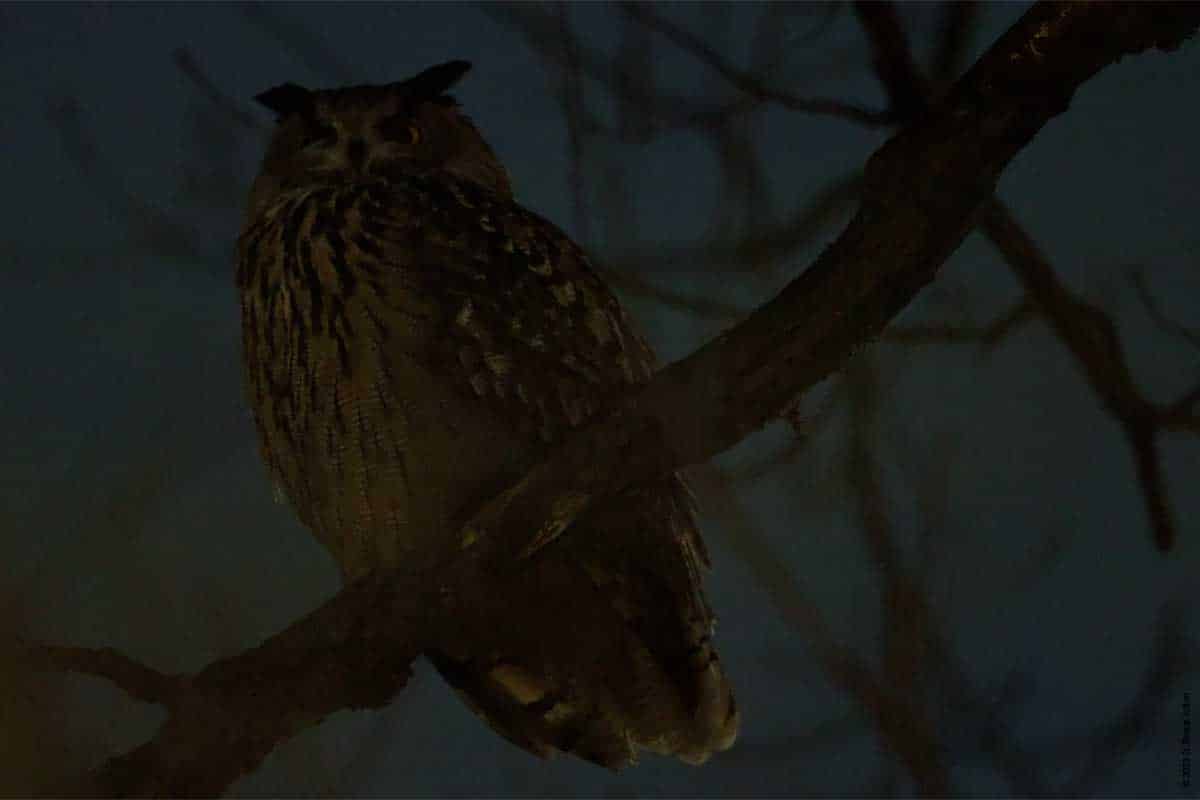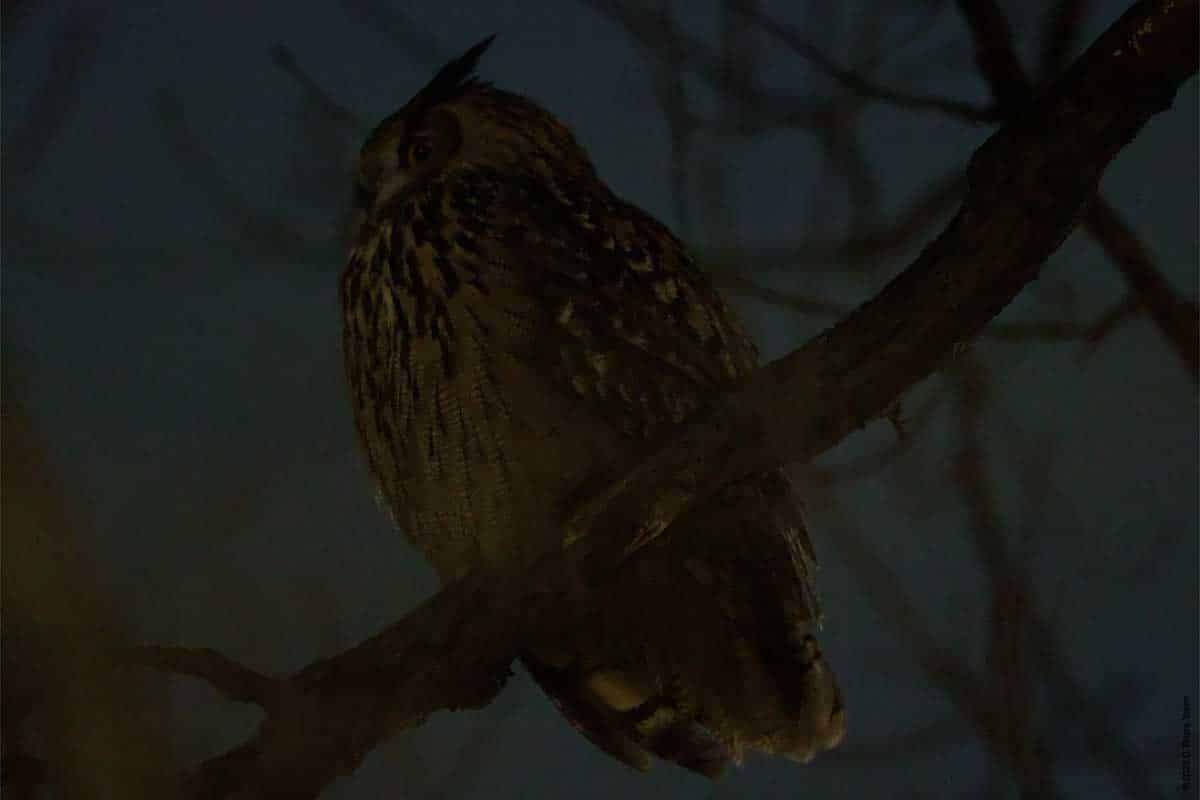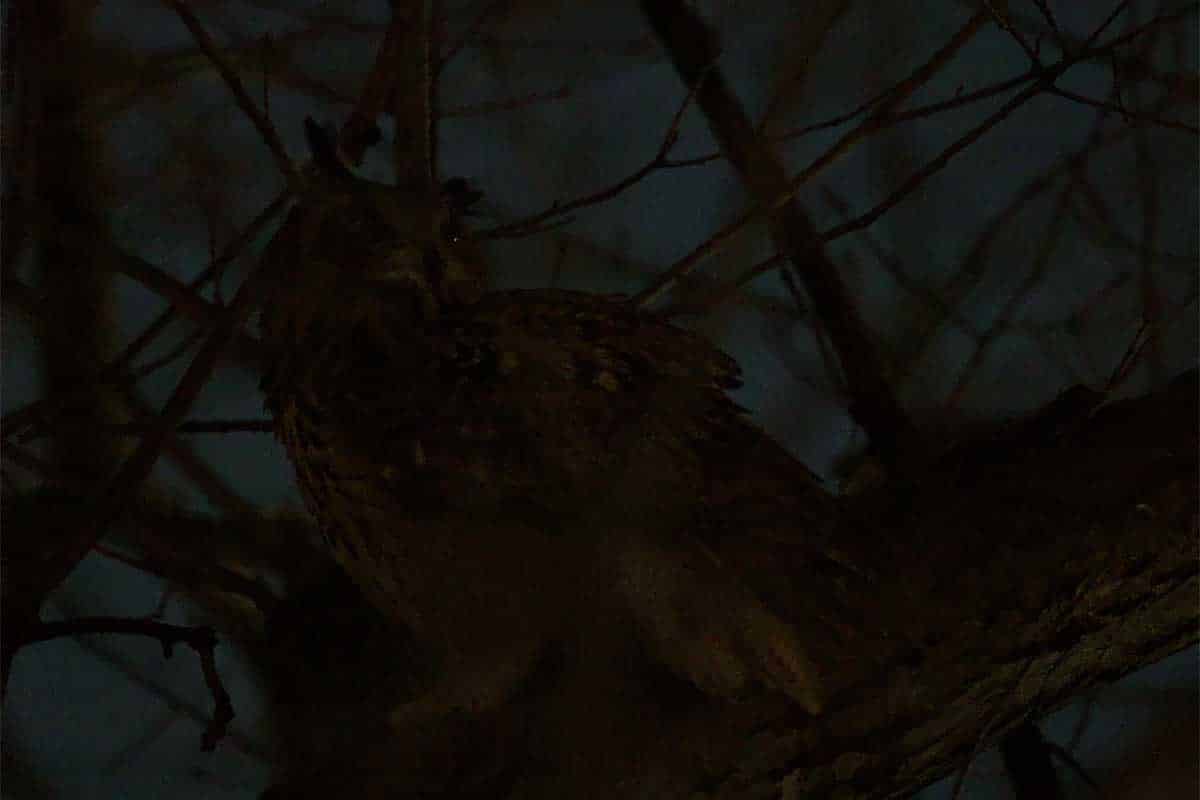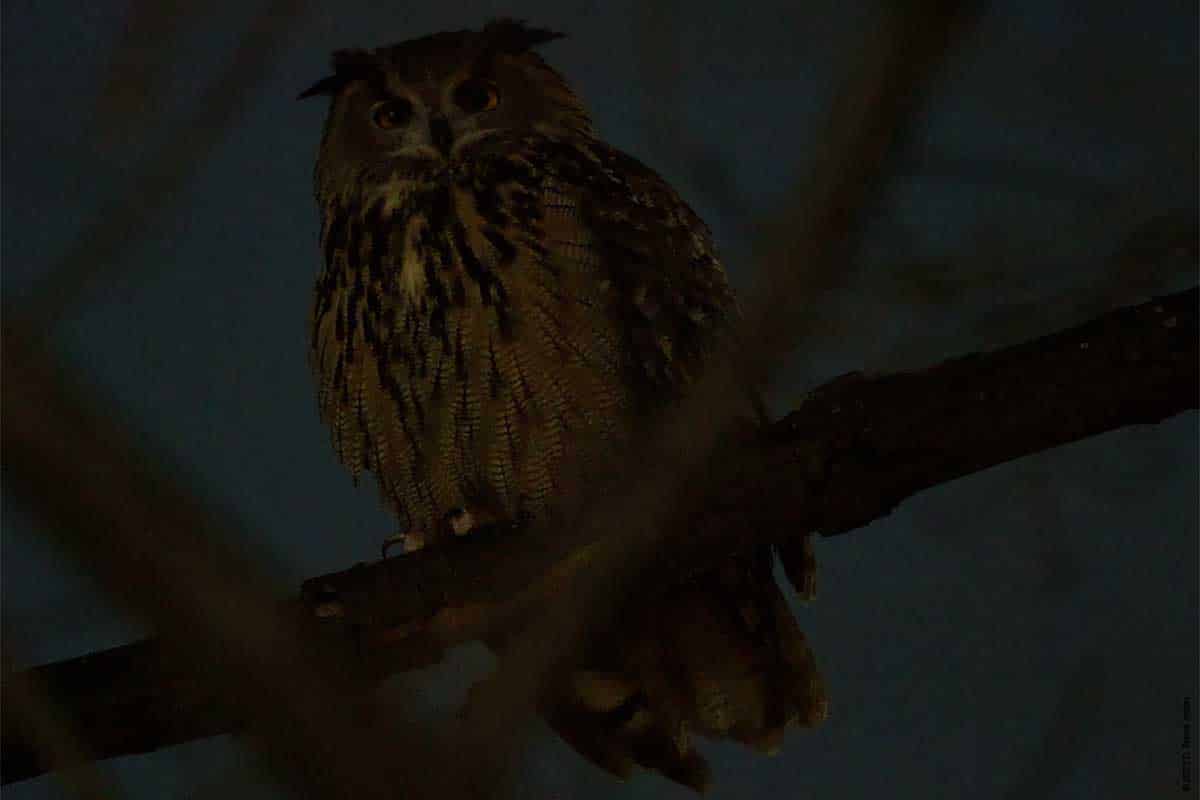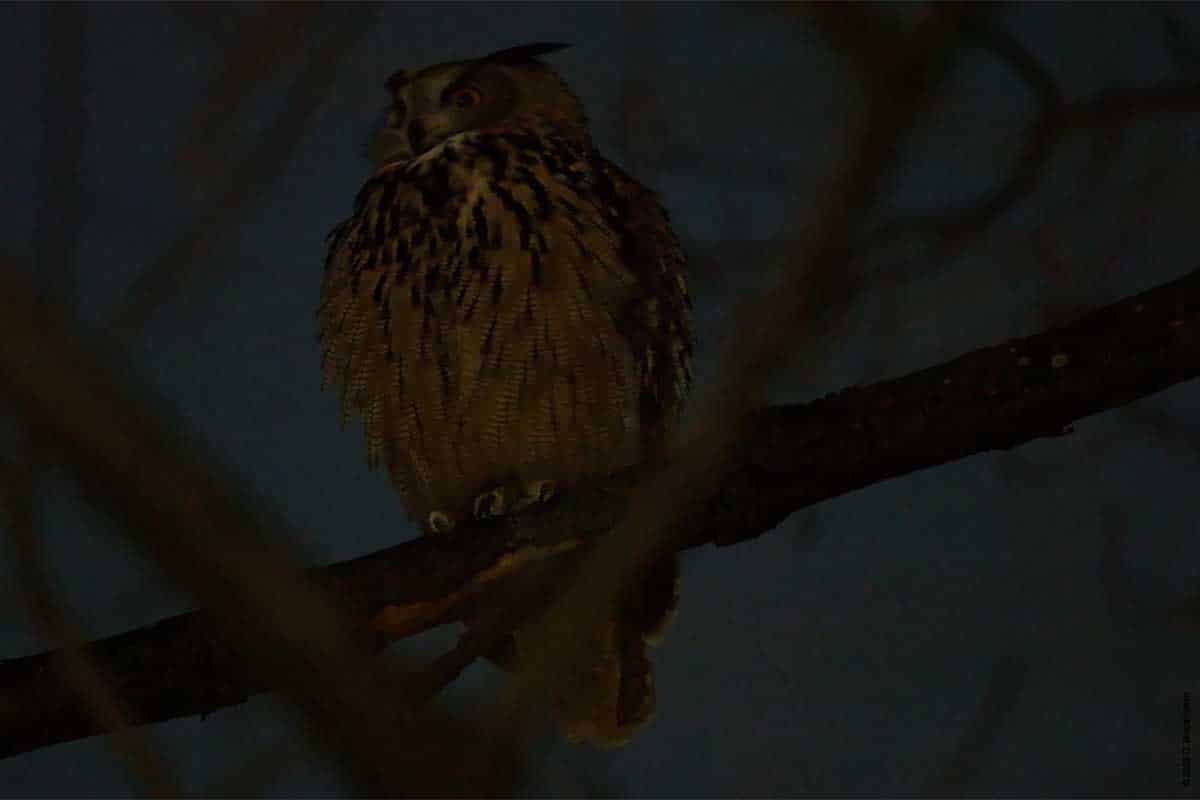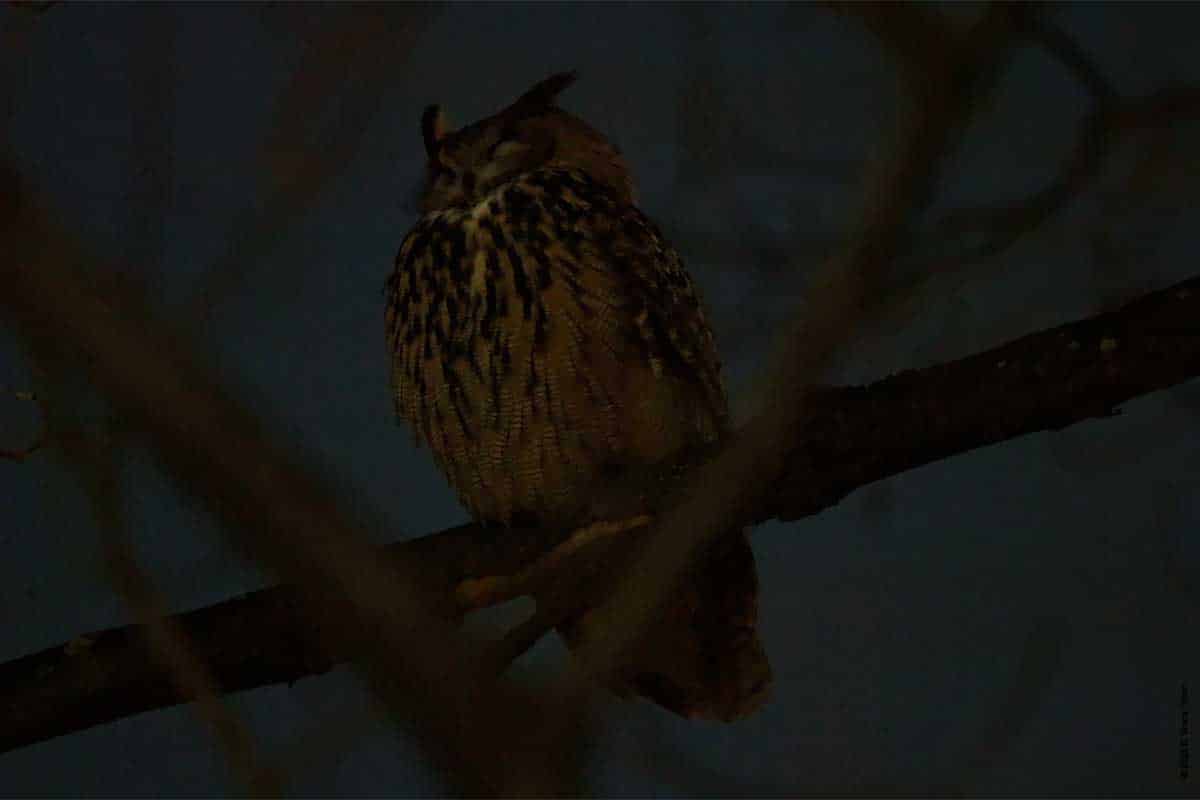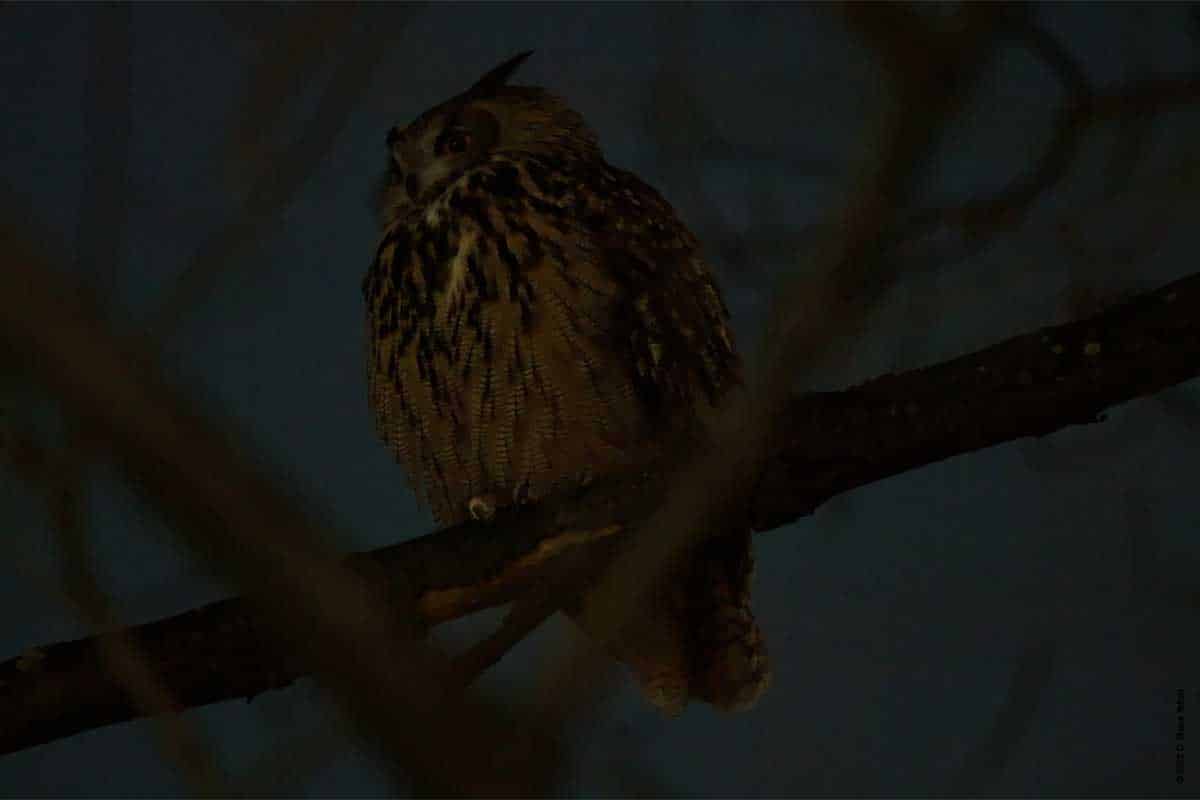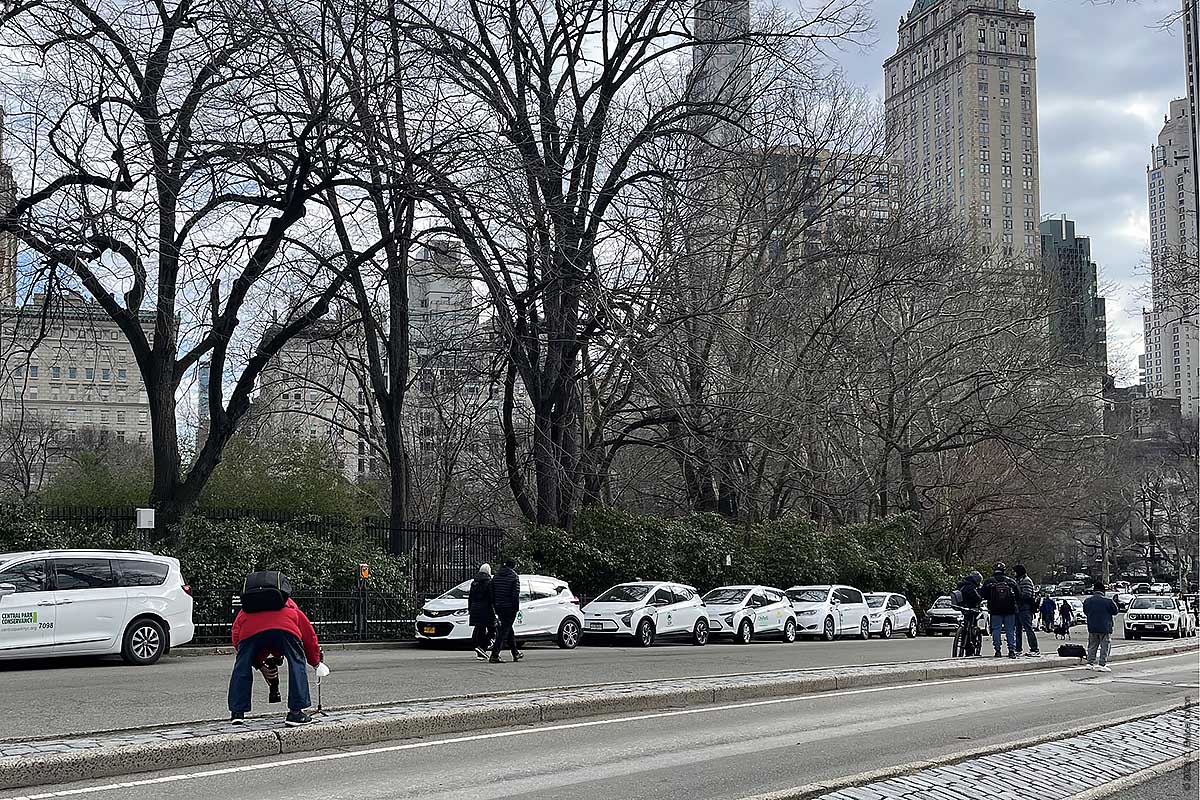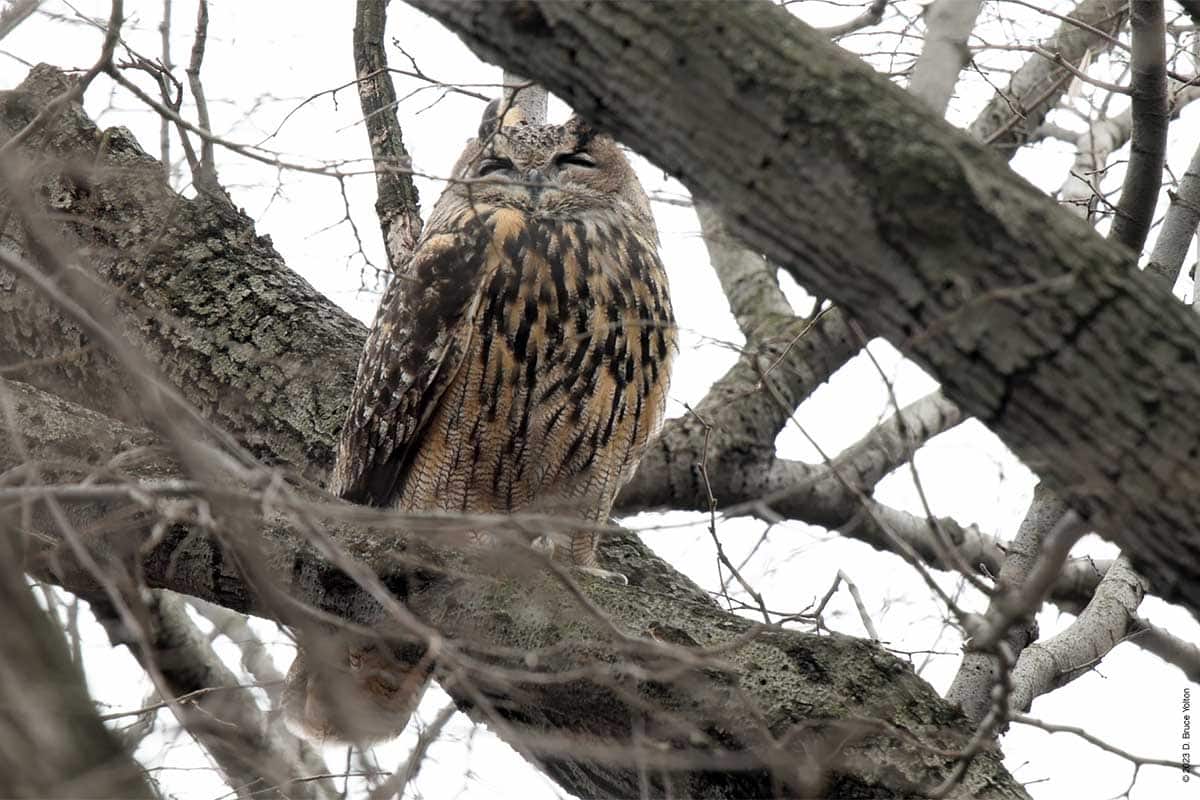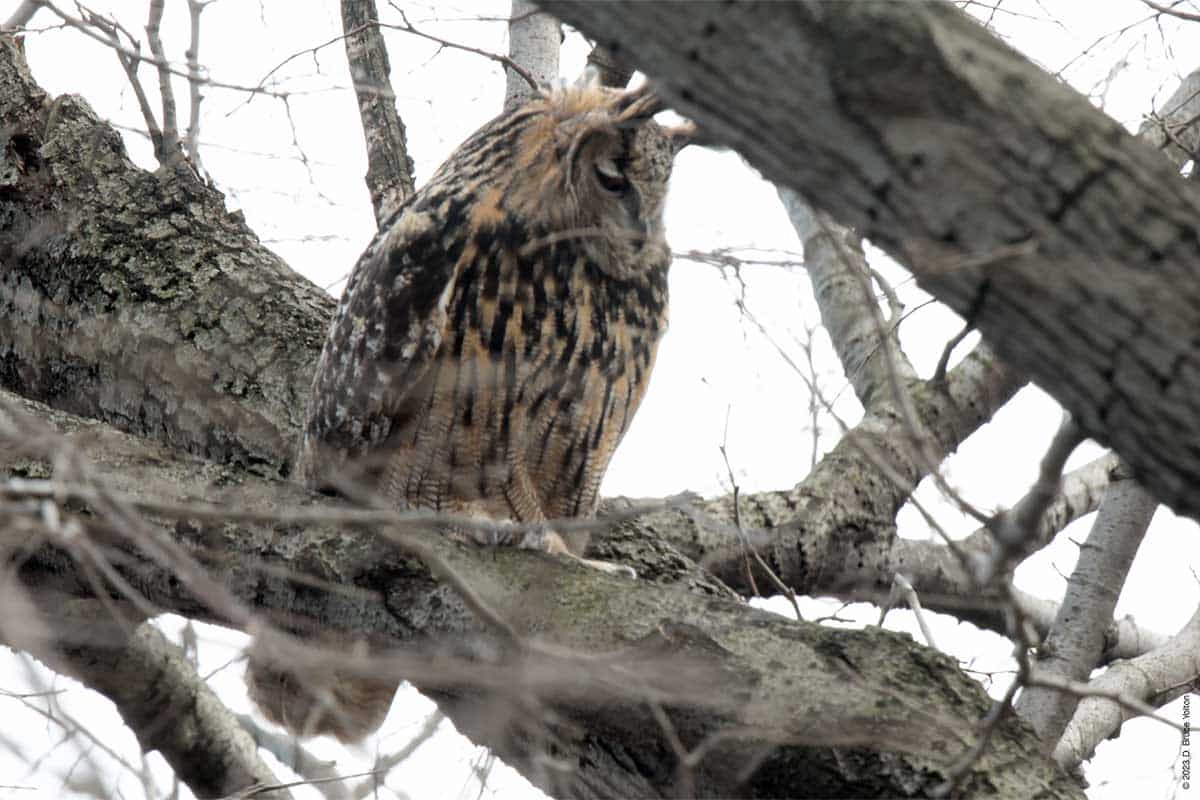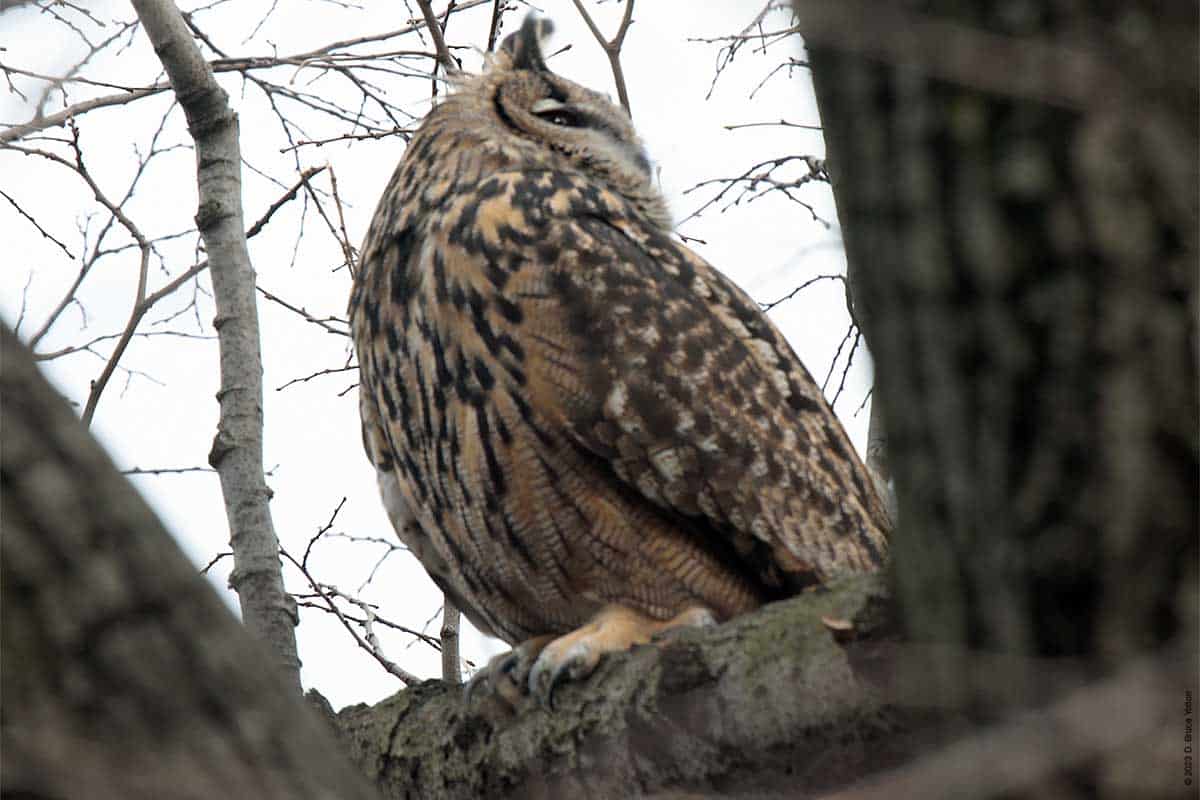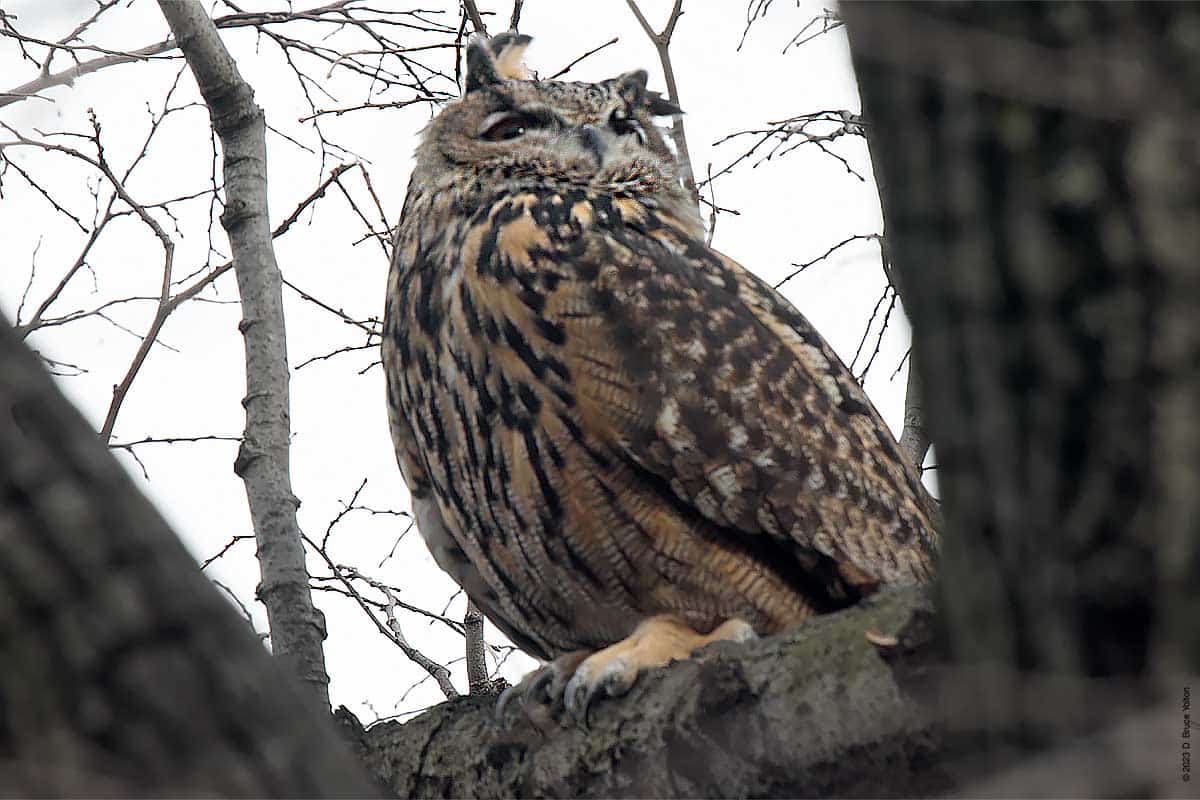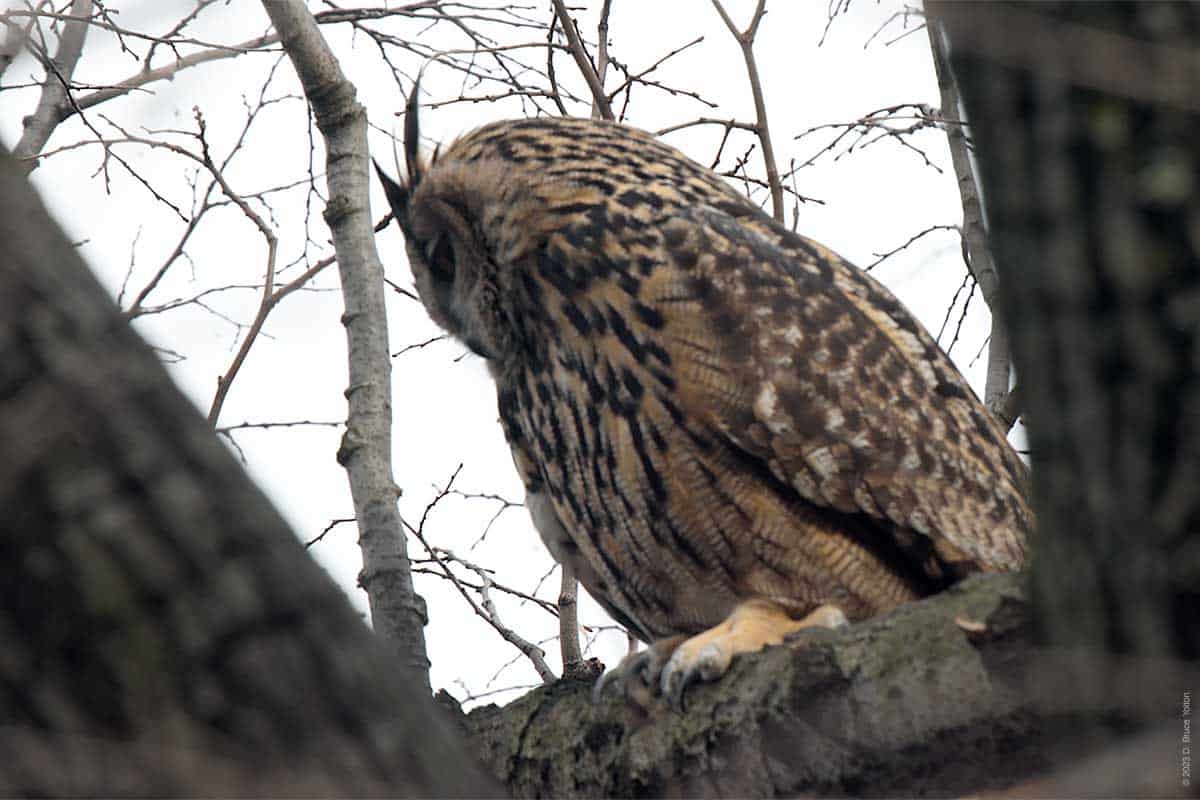Eurasian Eagle-Owl, Day (and night) 8
Thursday was an interesting day to watch the owl as it became apparent by the end of it, that he had fully adjusted to being in the park. But it was also a frustrating day, due to inappropriate use of social media, which hampered rescue efforts.
I birded as usual starting at reservoir and in the late after noon went down to the south end of the park. With good luck and some intuition, I found the owl fairly quickly. I then noticed two photographers under the roost tree, and a bit later two Wildlife Conservation Society employees discreetly watching over Flaco.
Everything was quiet and relaxed. Flaco was preening now and again. He looked like he was in the right spot, in conifer near exposed rocks. This is similar to his mountain habit in Eurasia.
Then out of nowhere, 15 people arrived. None of these people were the “regulars”, who watch owls regularly but people I had never seen before. They quickly ran under the tree and all around it. Soon more arrived. It was a social media driven flash mob. I checked my phone, and guess what there was are reporting of the roost on the Manhattan Bird Alert!
After fly out, Flaco took a huge tour of the park’s lower section stopping in many trees. Having watched owls be chased by crowds before, he clearly was being pushed by the crowd, who were rushing to be under him at each tree. Eventually, as the crowd dispersed he settled down.
The Wildlife Conservation Society team began their recovery efforts for the season once Flaco settled down. The Wildlife Conservation Society set up traps to lure Flaco. The traps consisted of a mesh box with fishing line on top. These are commonly used by banders.
Unfortunately, Flaco only made two passes at the traps. Once he was almost caught but freed himself, and another he came down but was scared by a dog. He should have made more passes but onlookers and photographs repeated got near the traps or distracted him.
Later that evening, David Lei photographed Flaco with a rat in his beak. We reported the news to the recovery team the next day. While the Wildlife Conservation Society staff would try to lure him down to traps on Friday and Saturday night, he was no longer hungry and ignored them!
